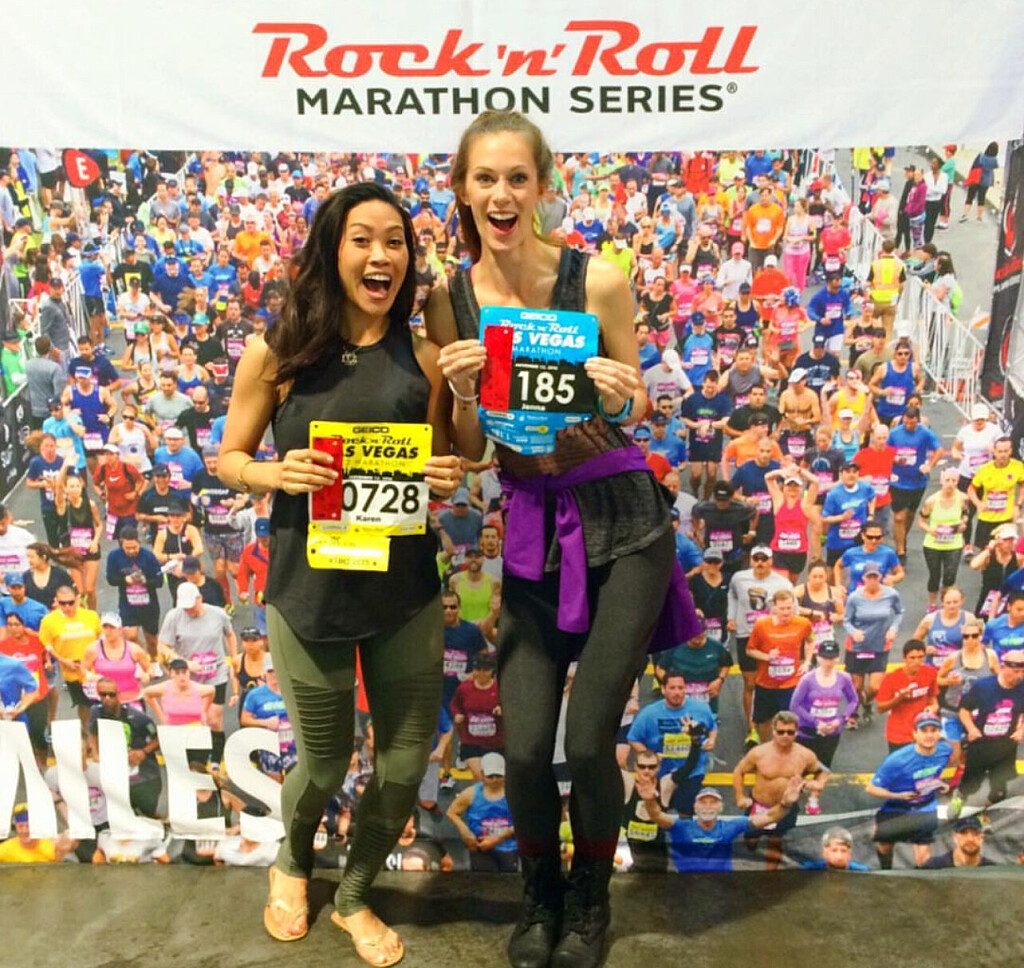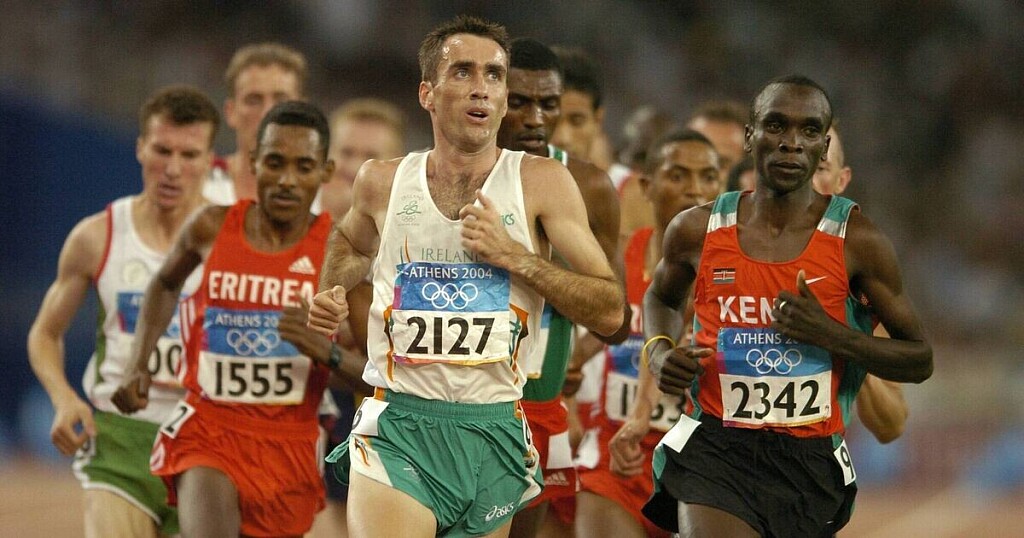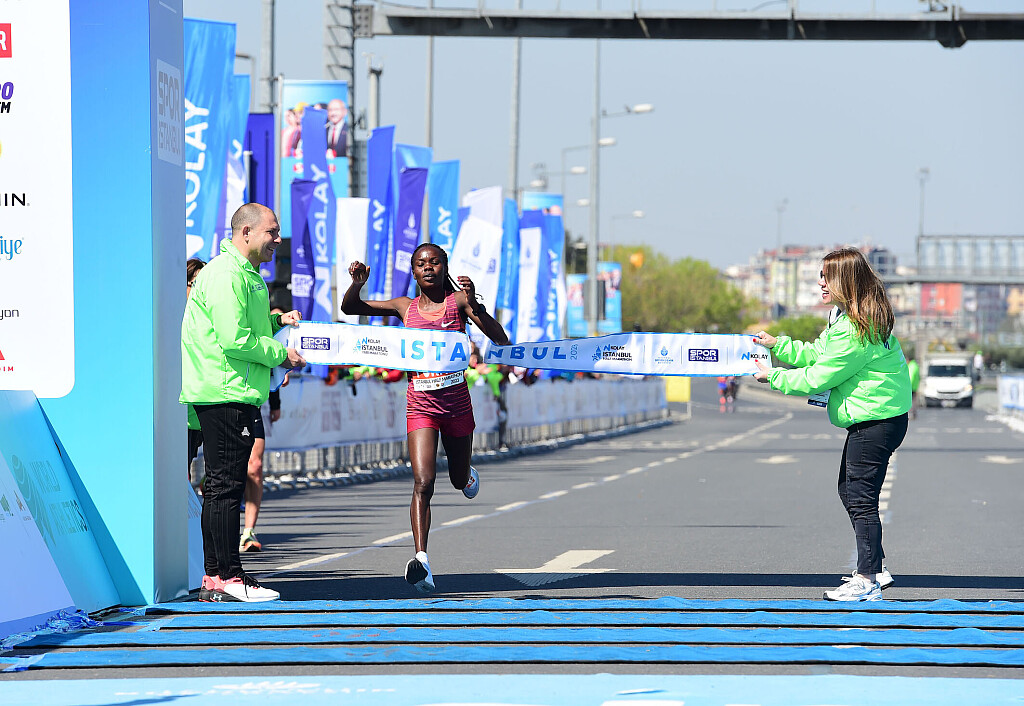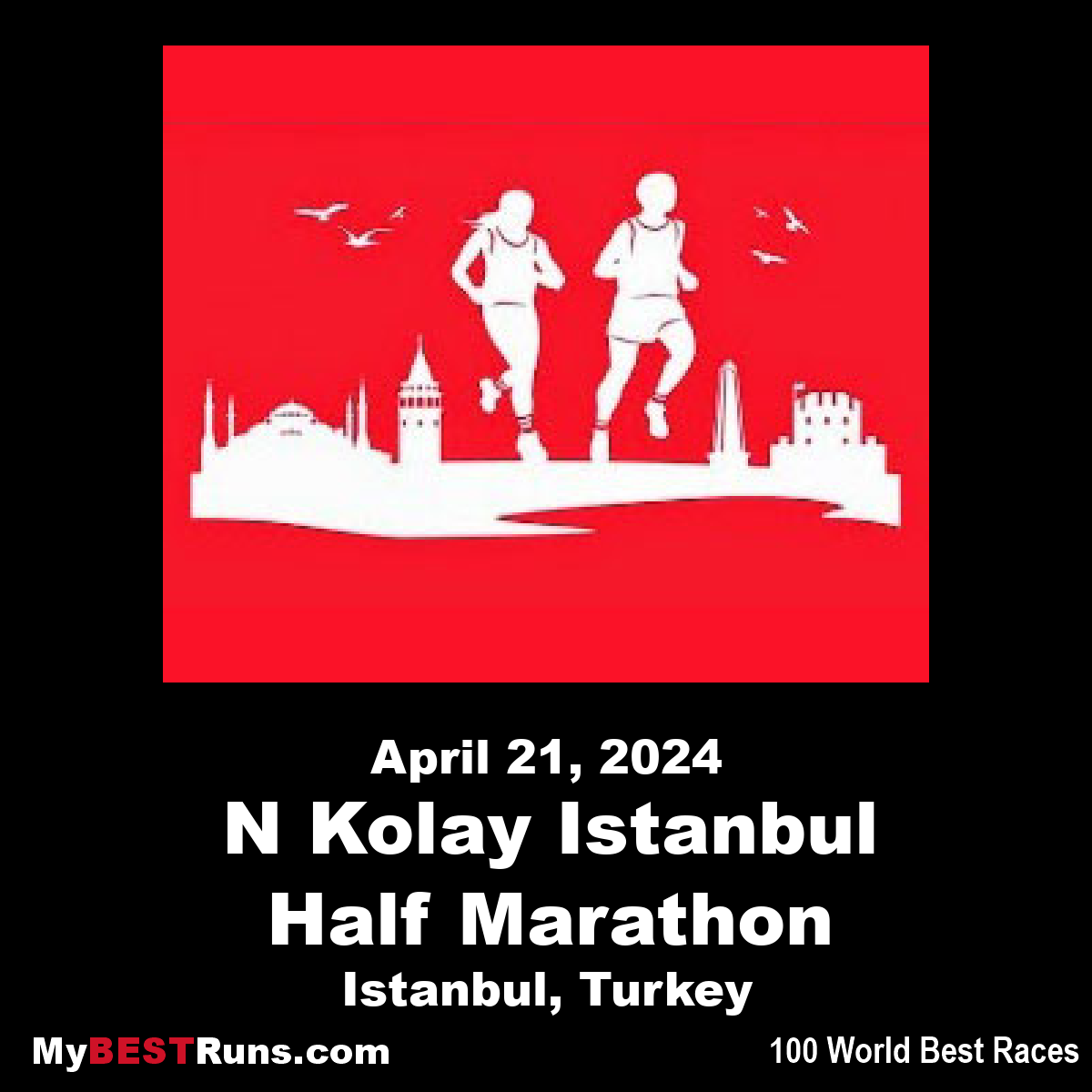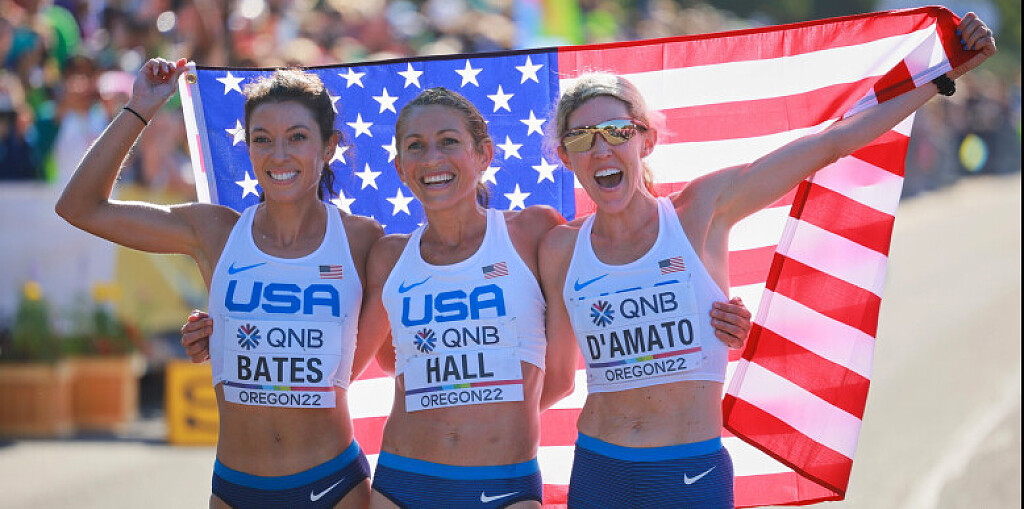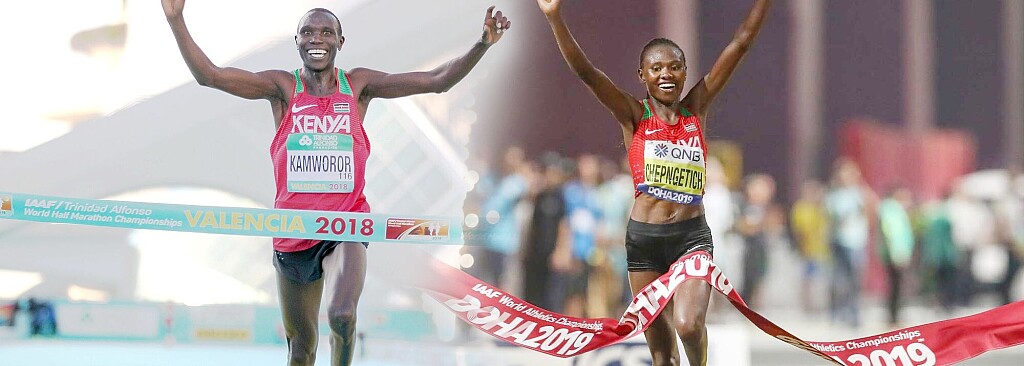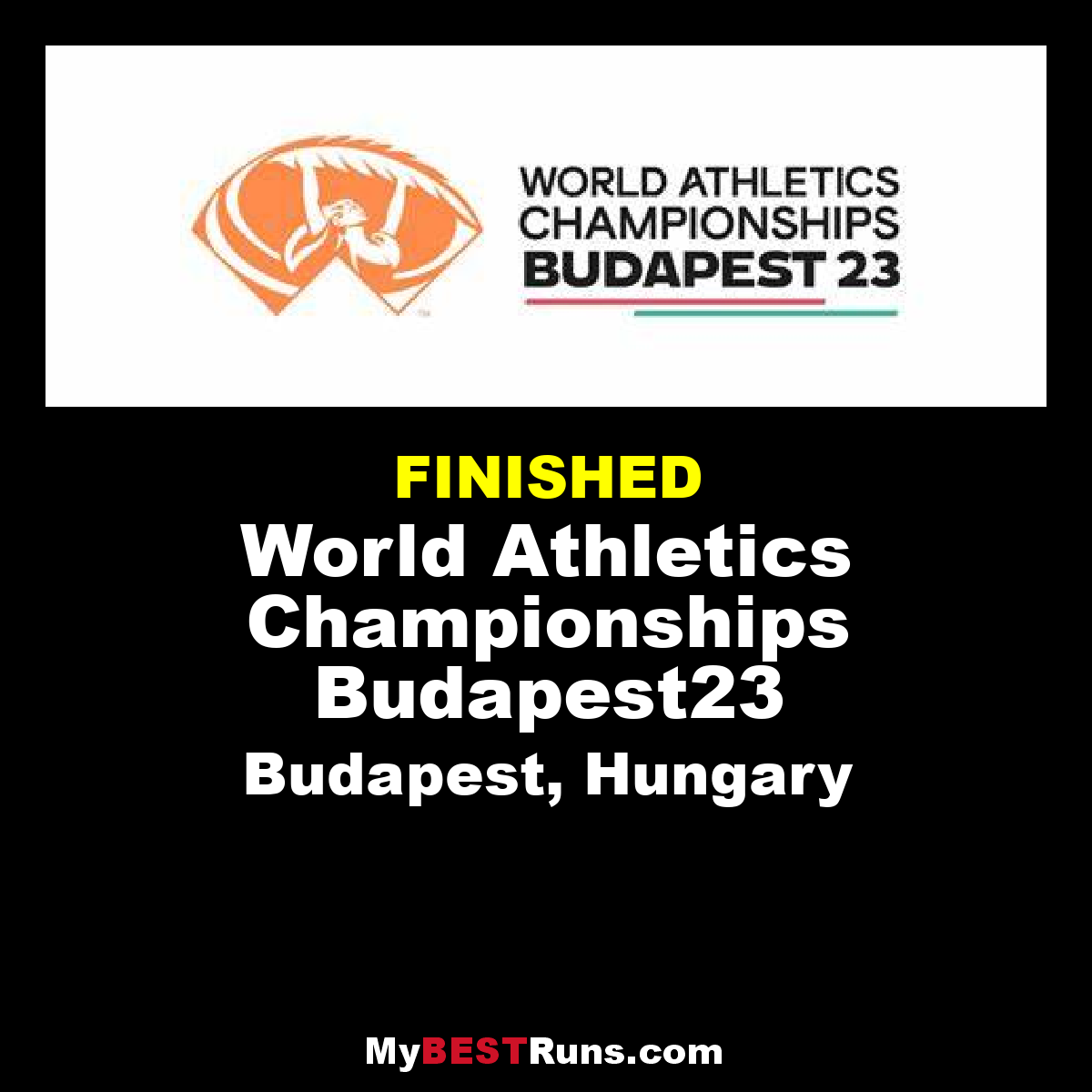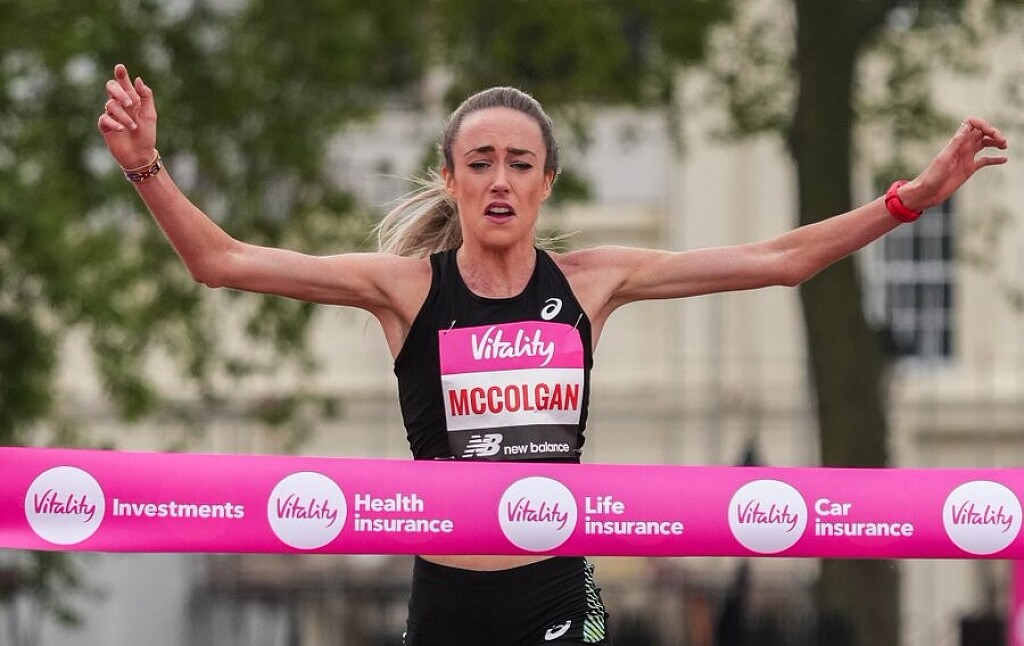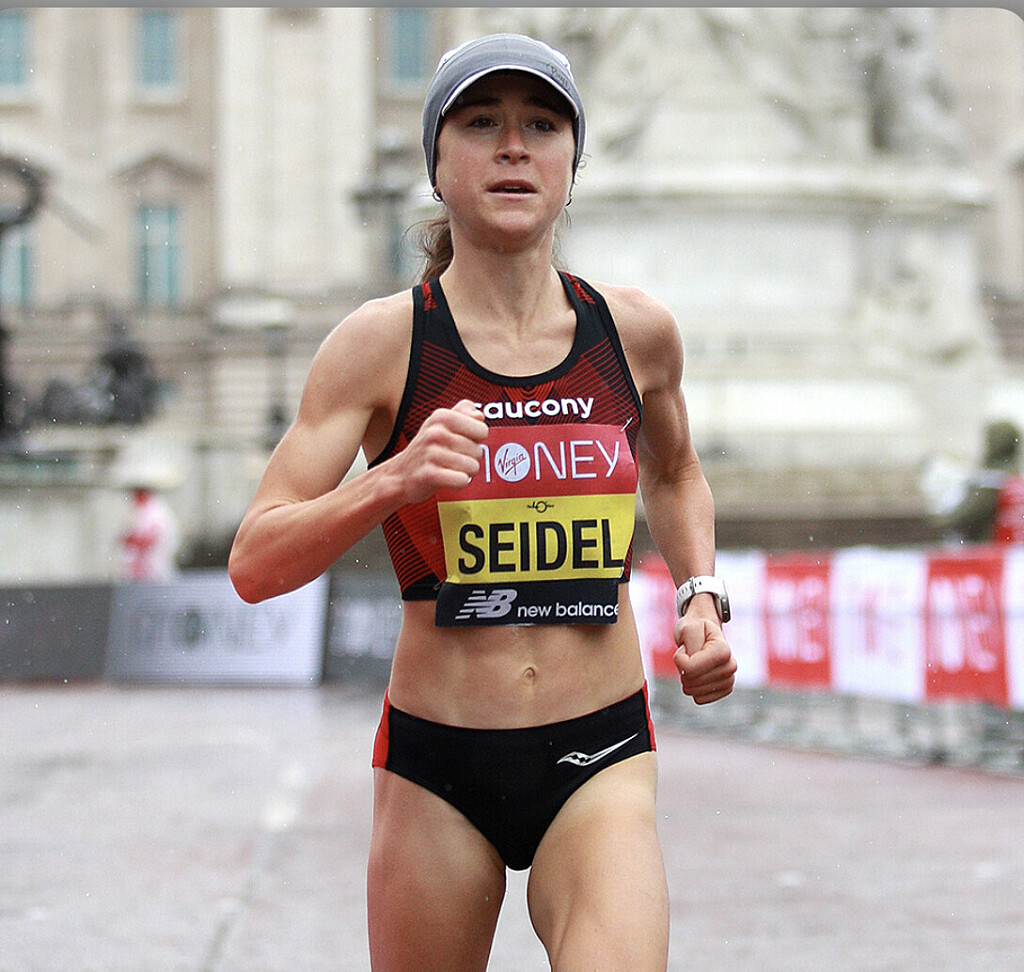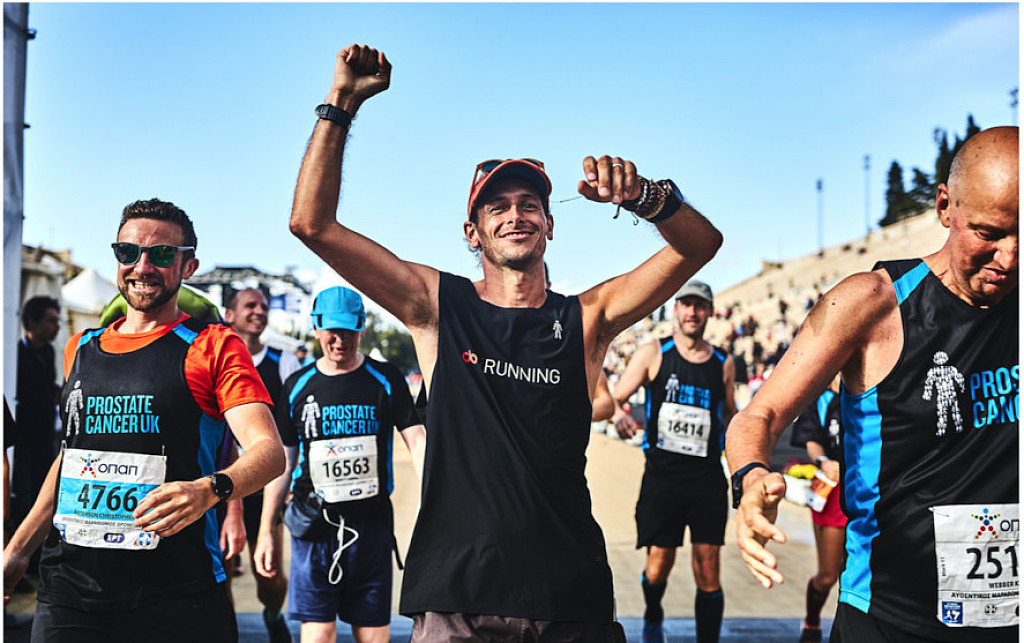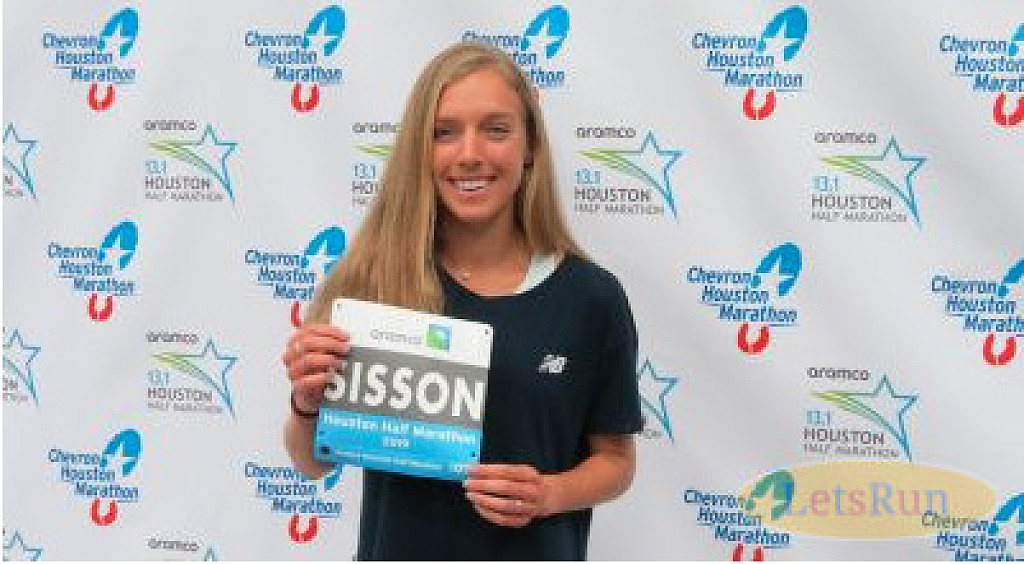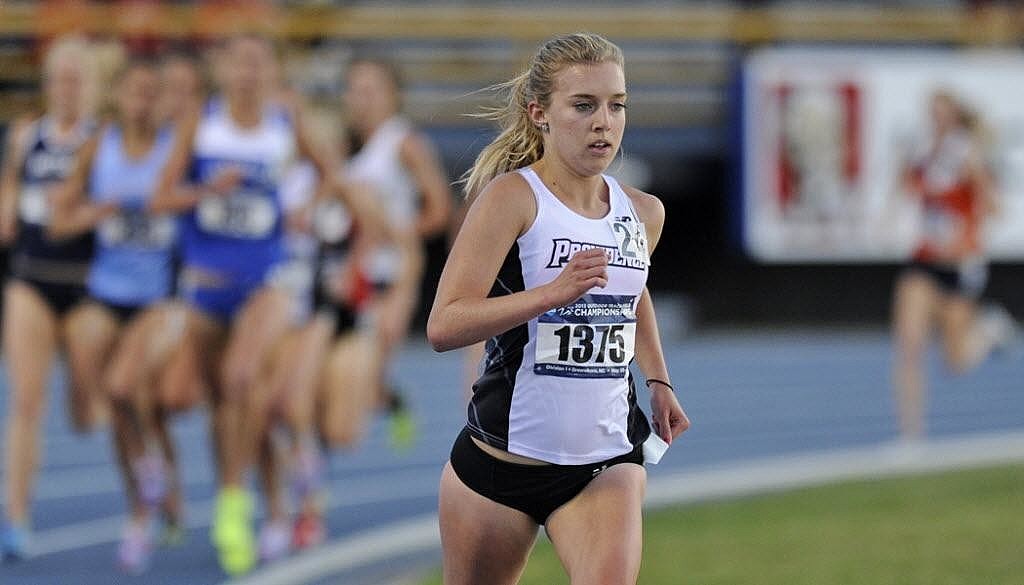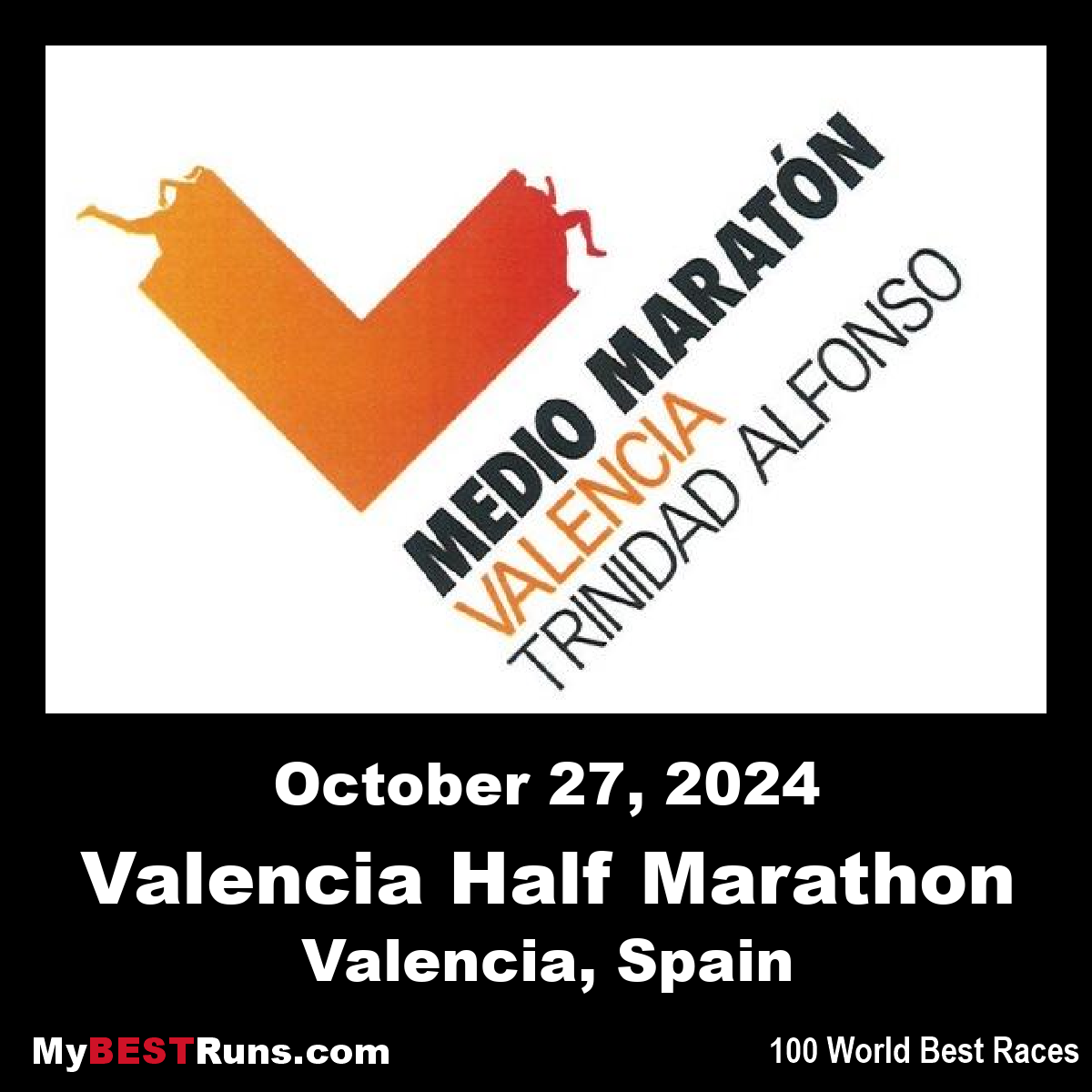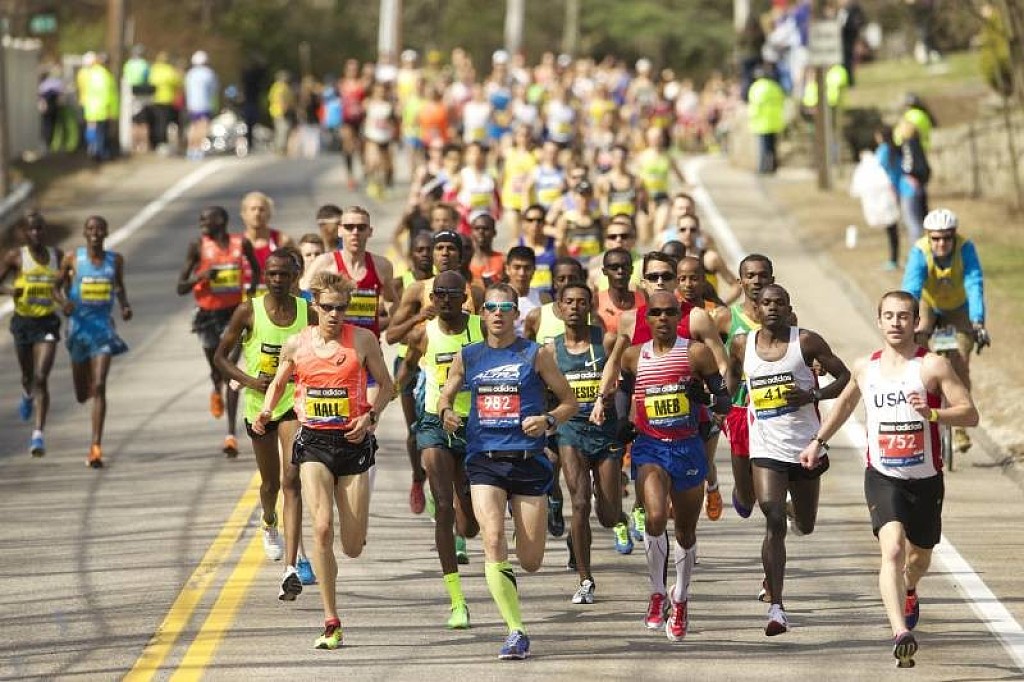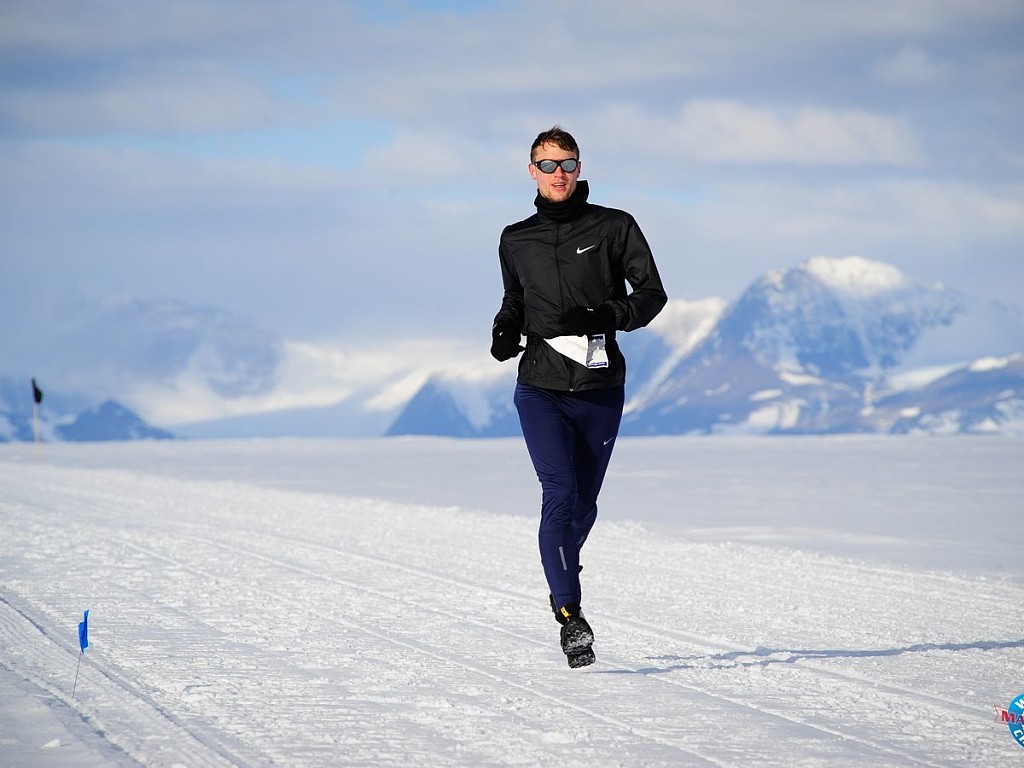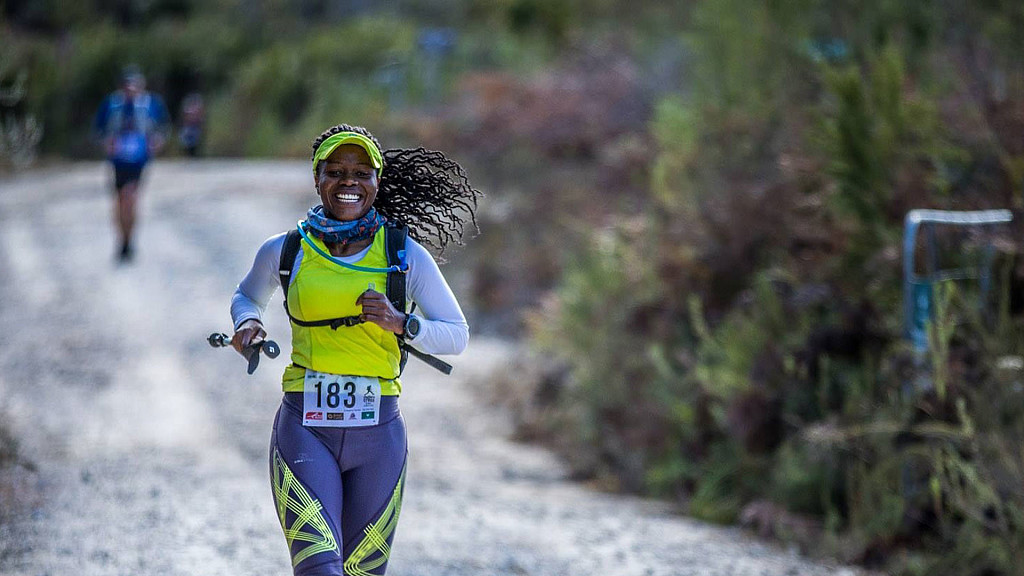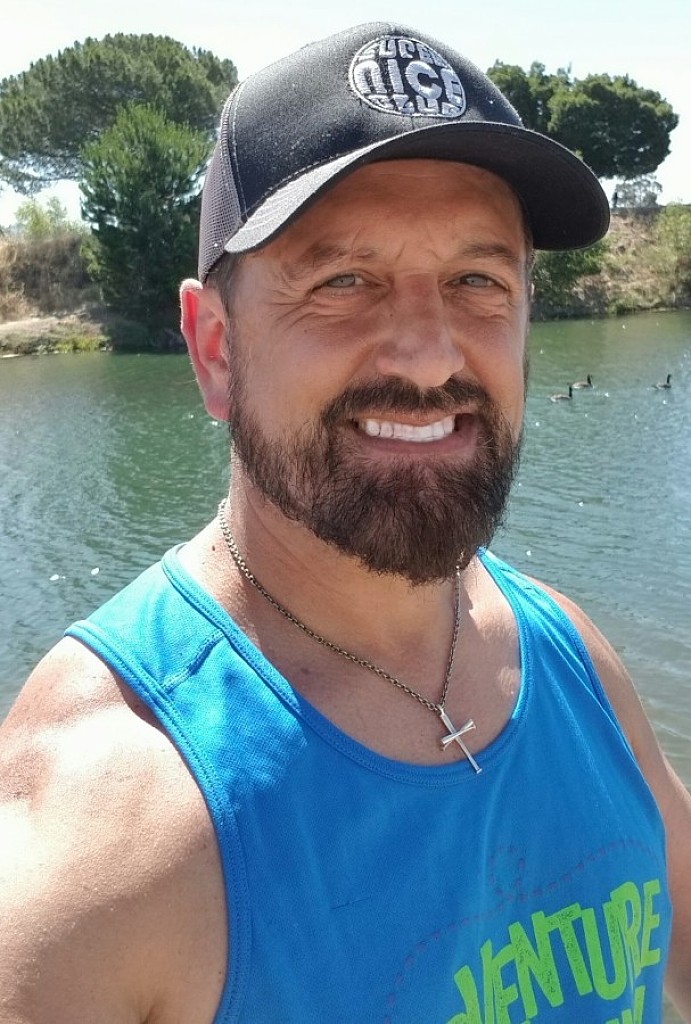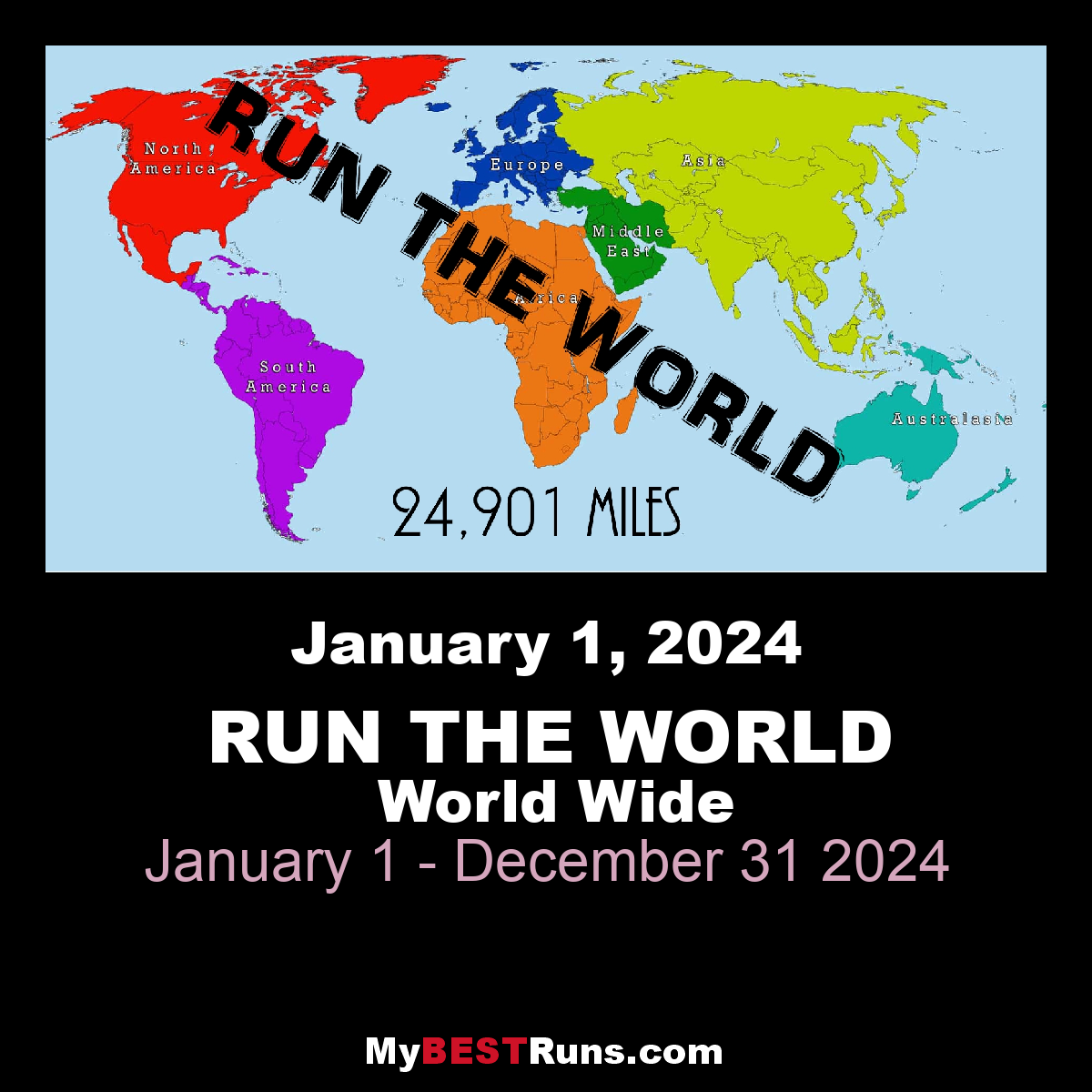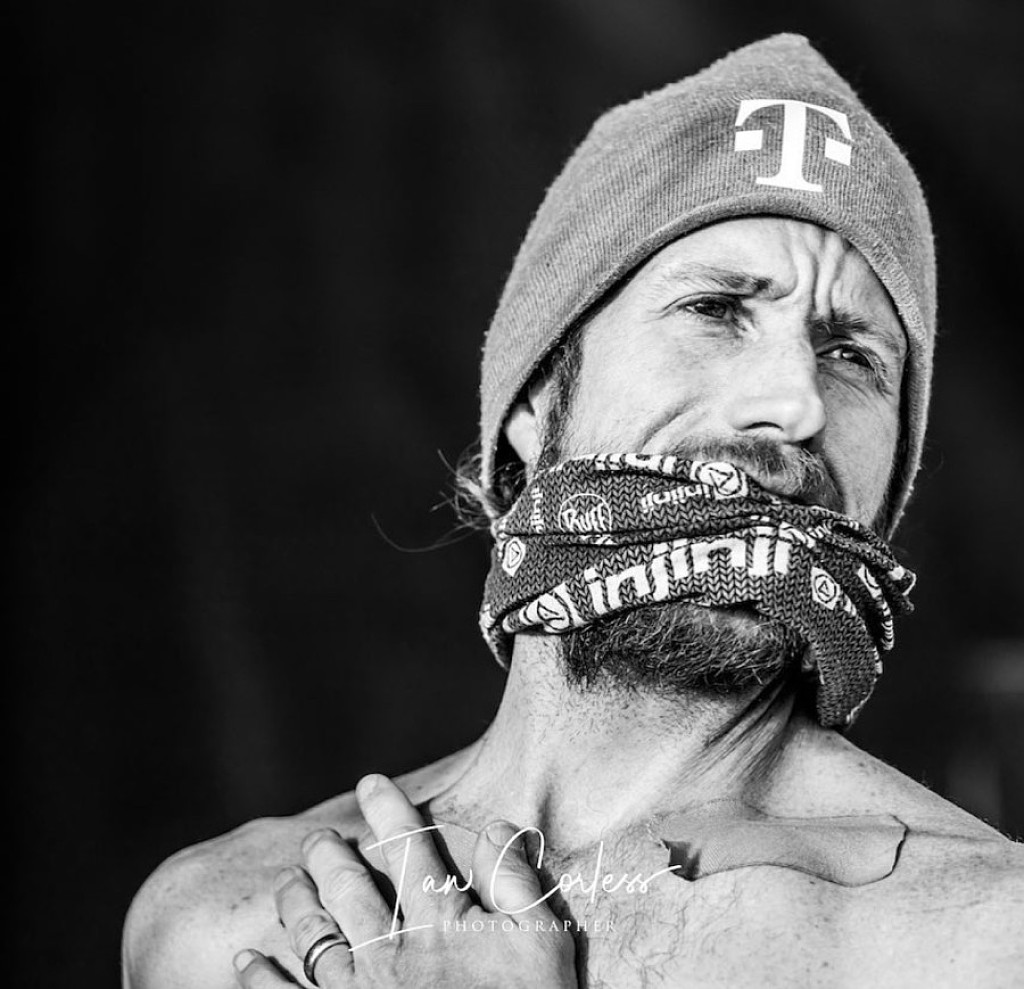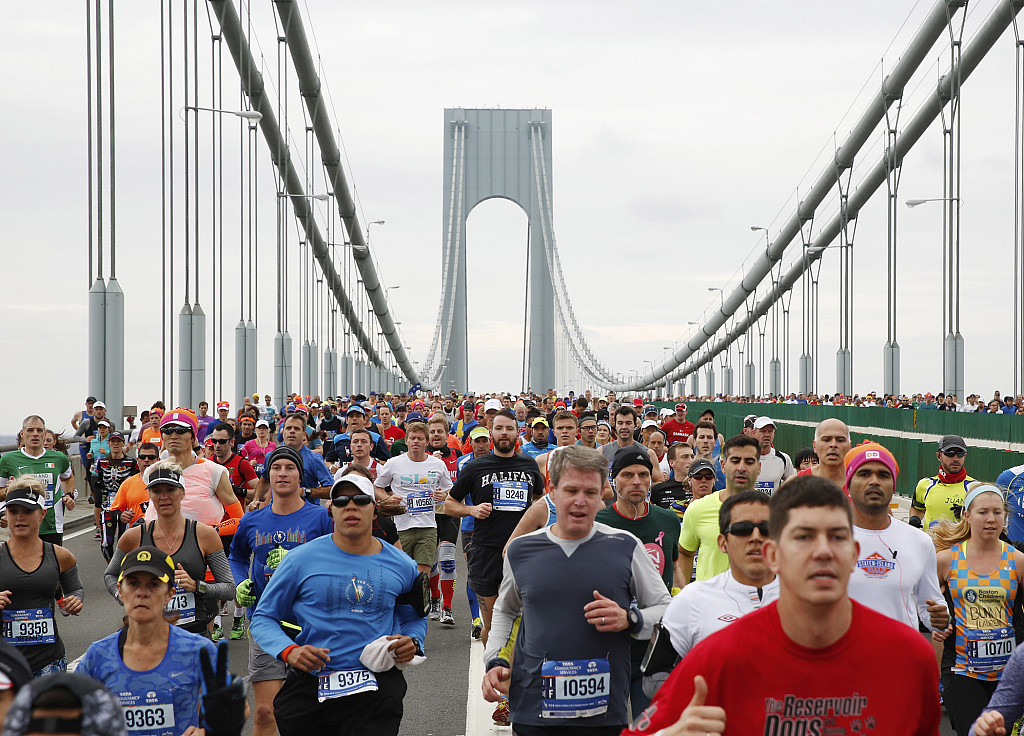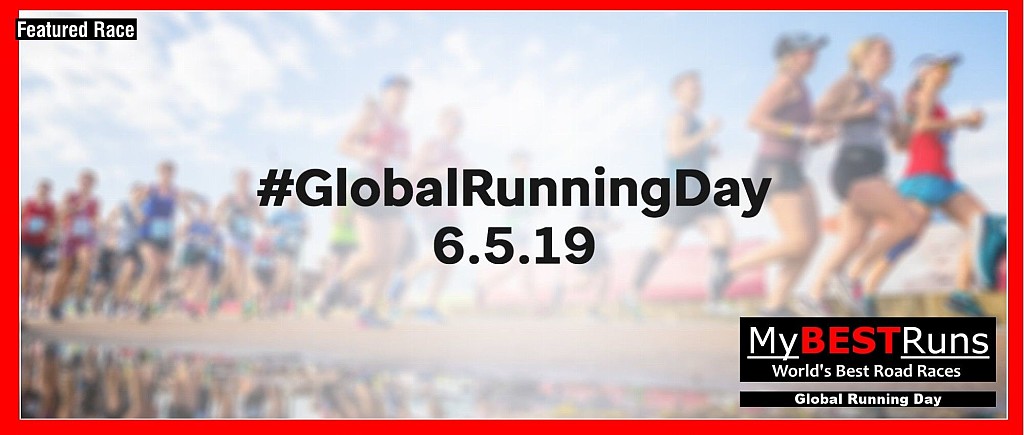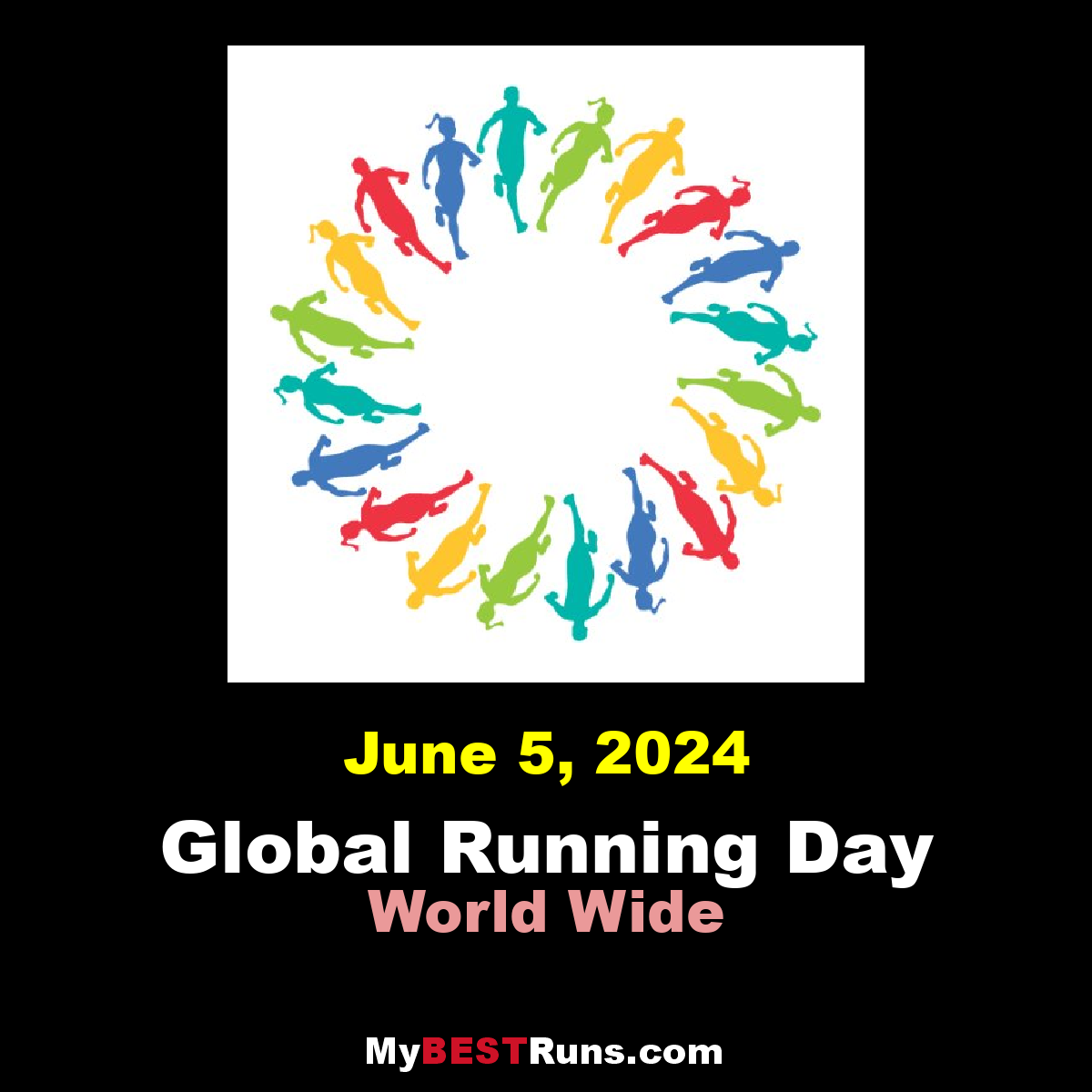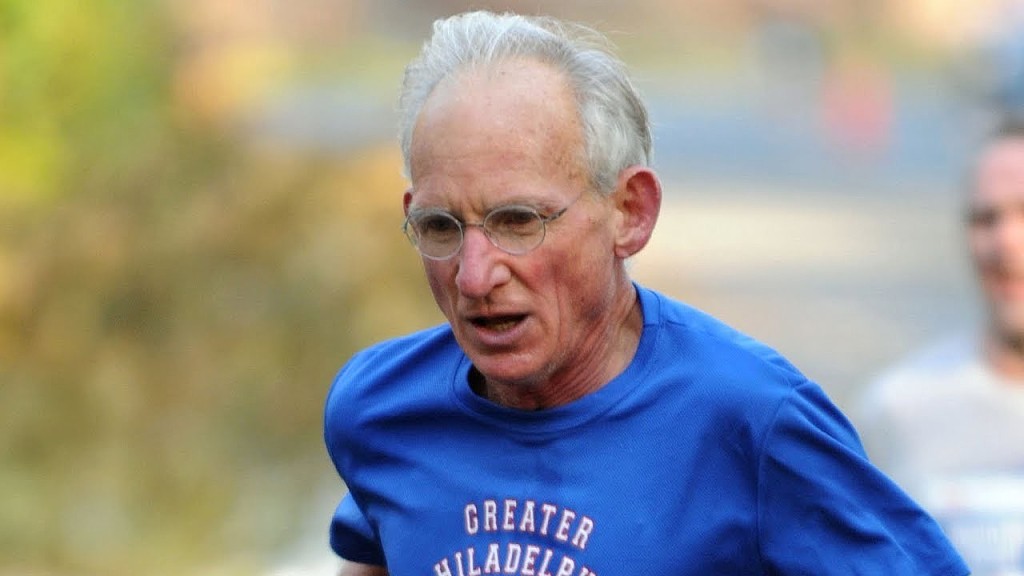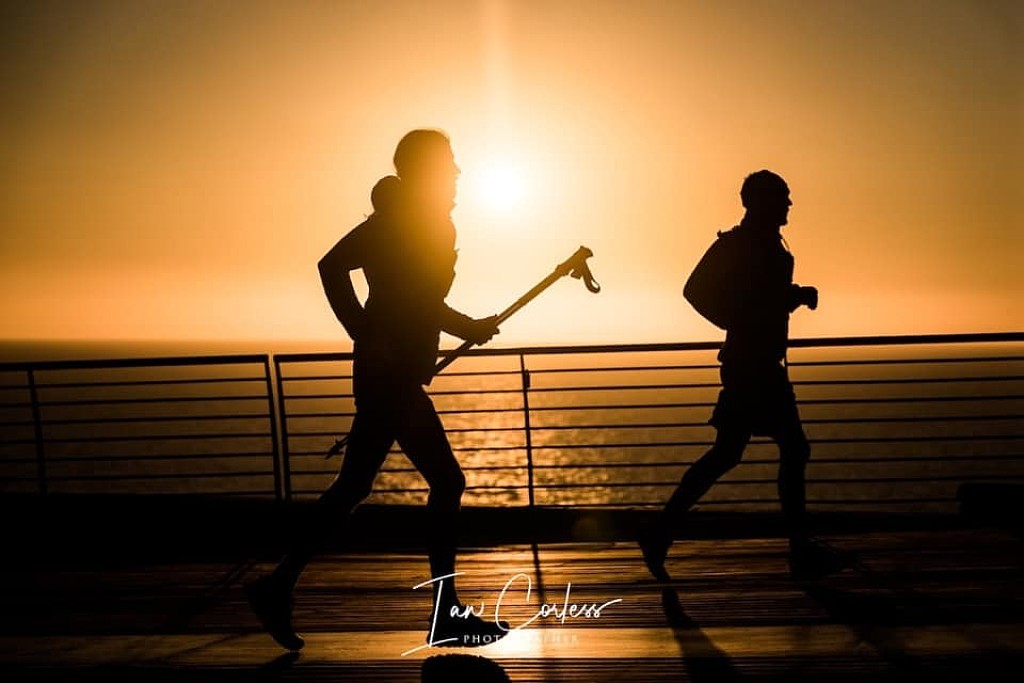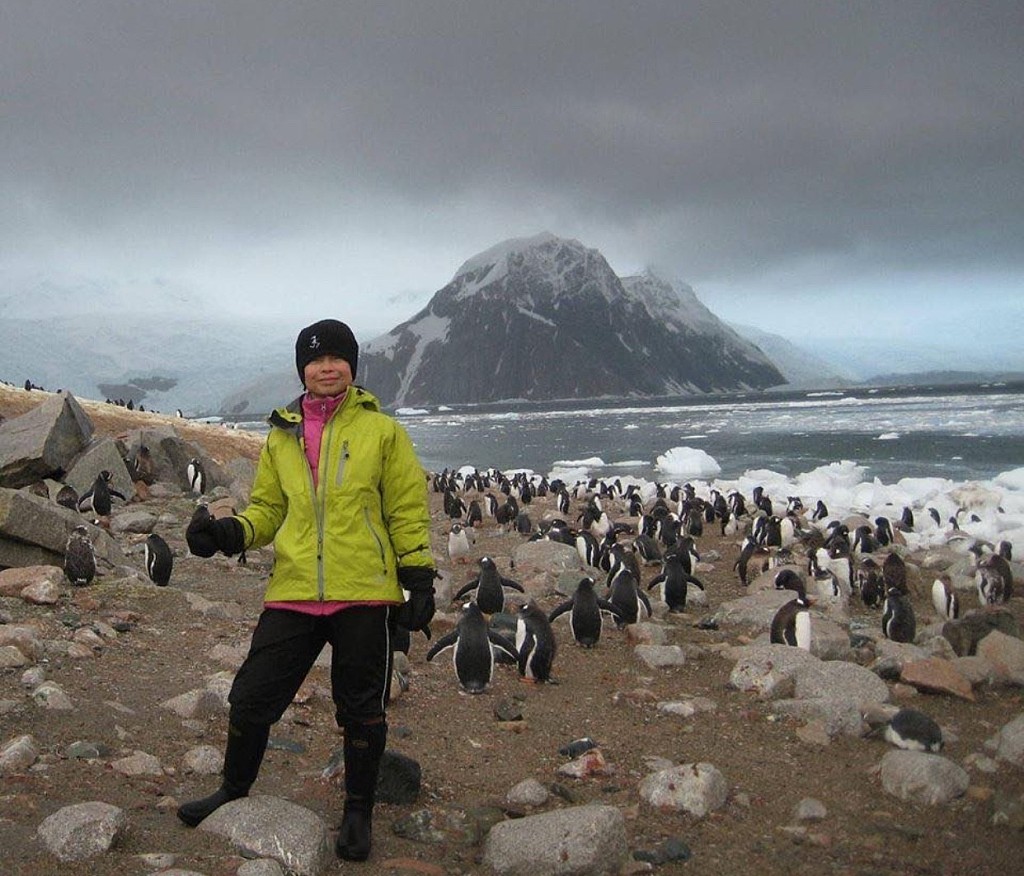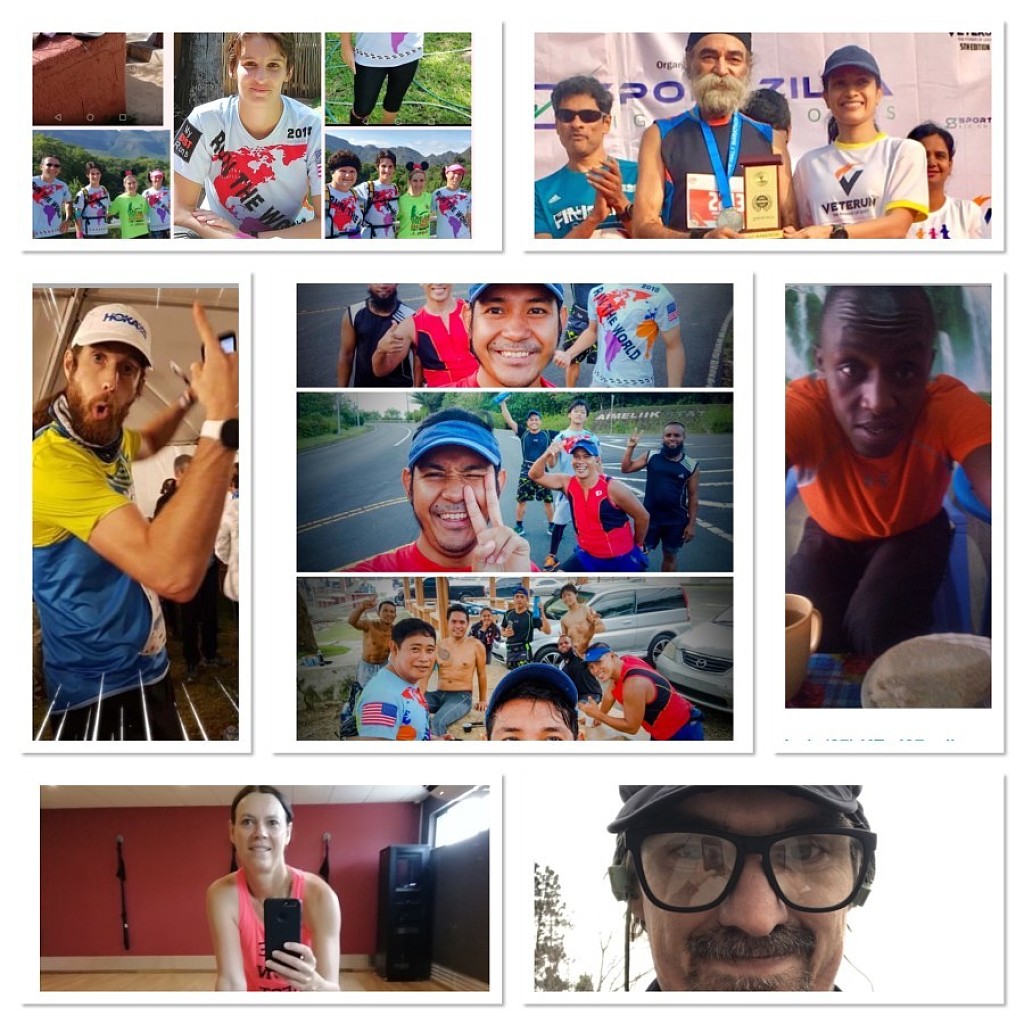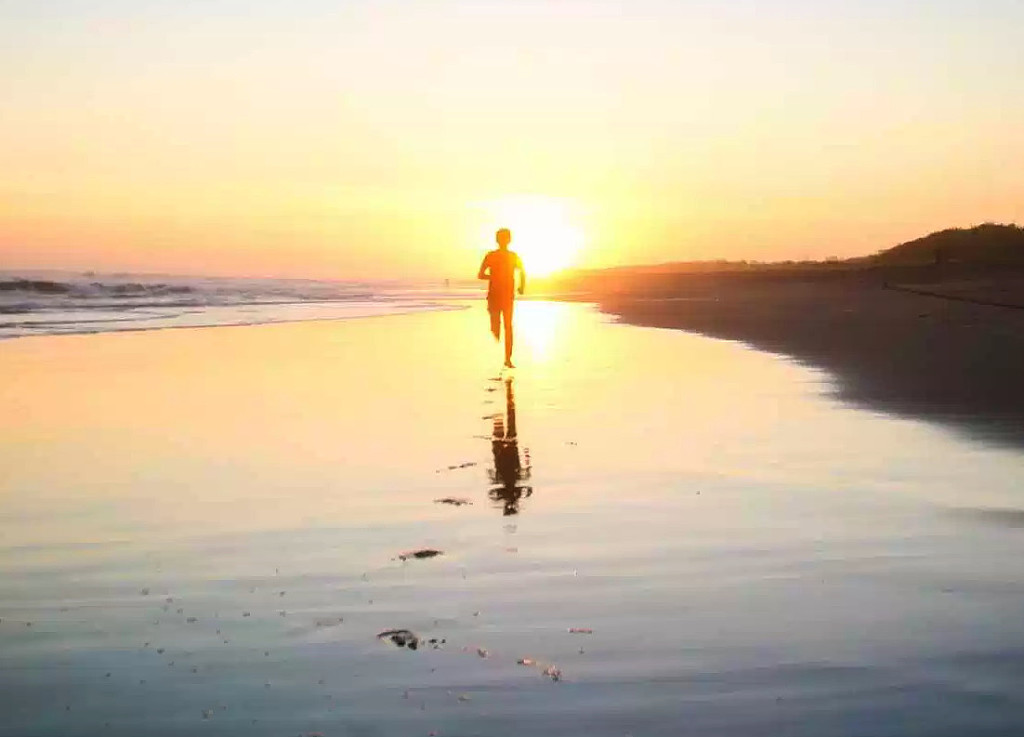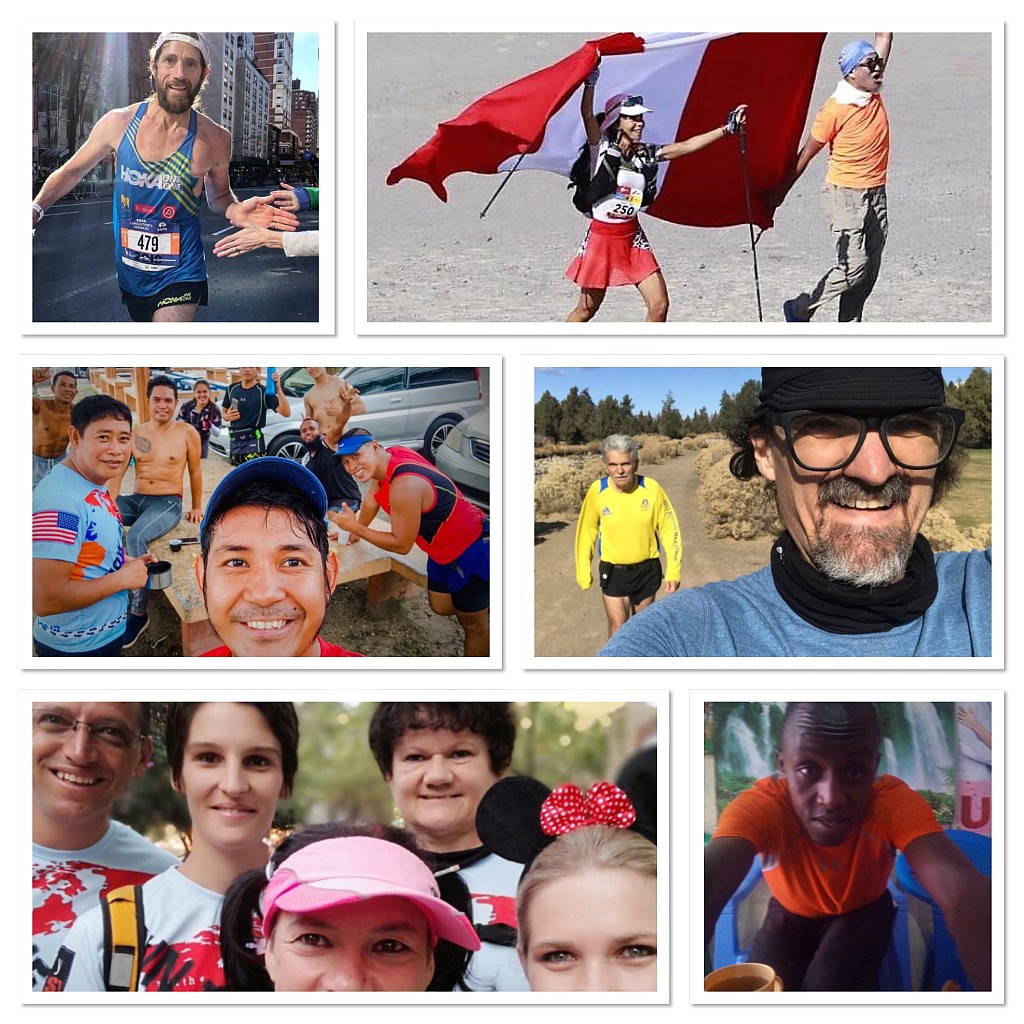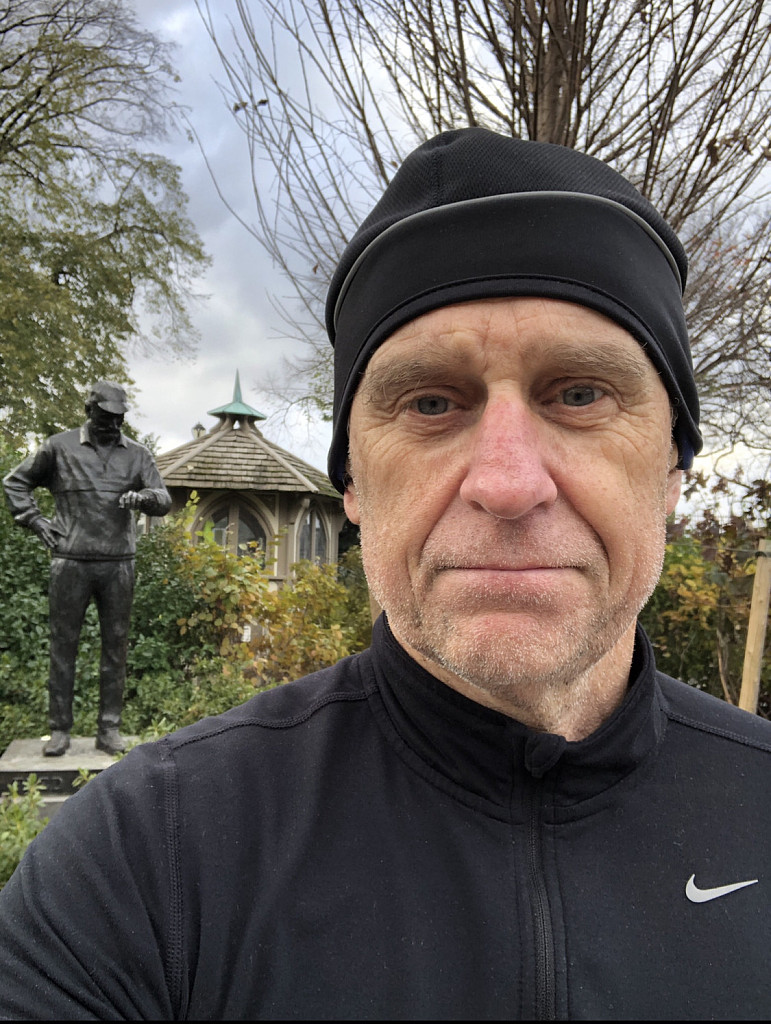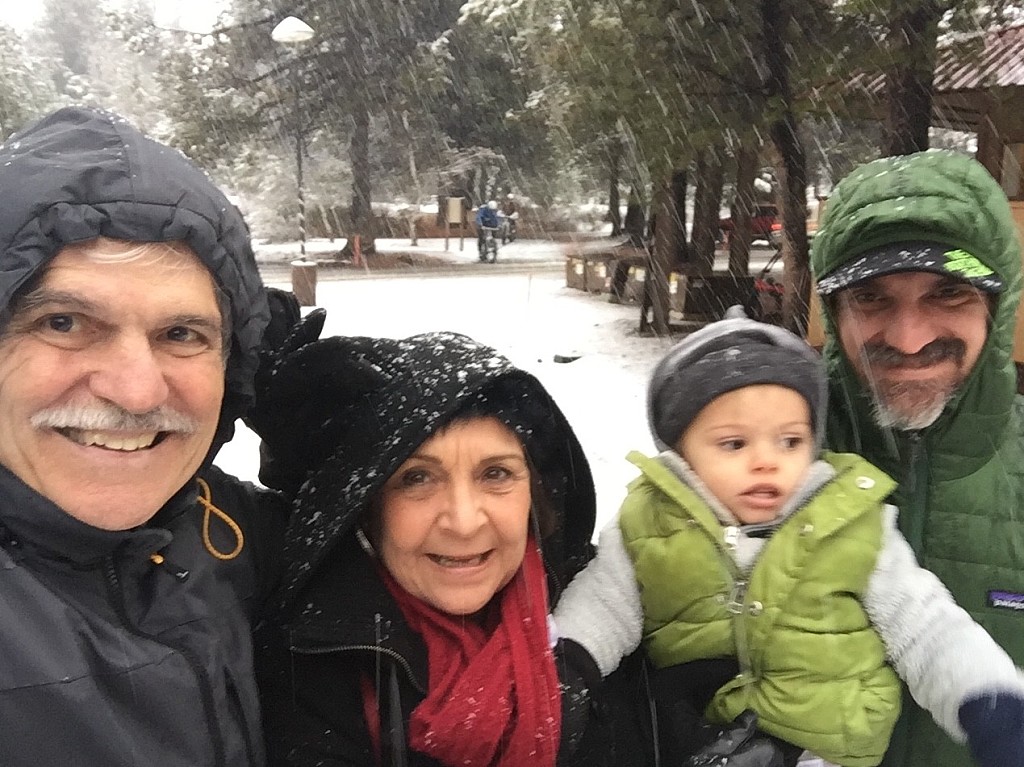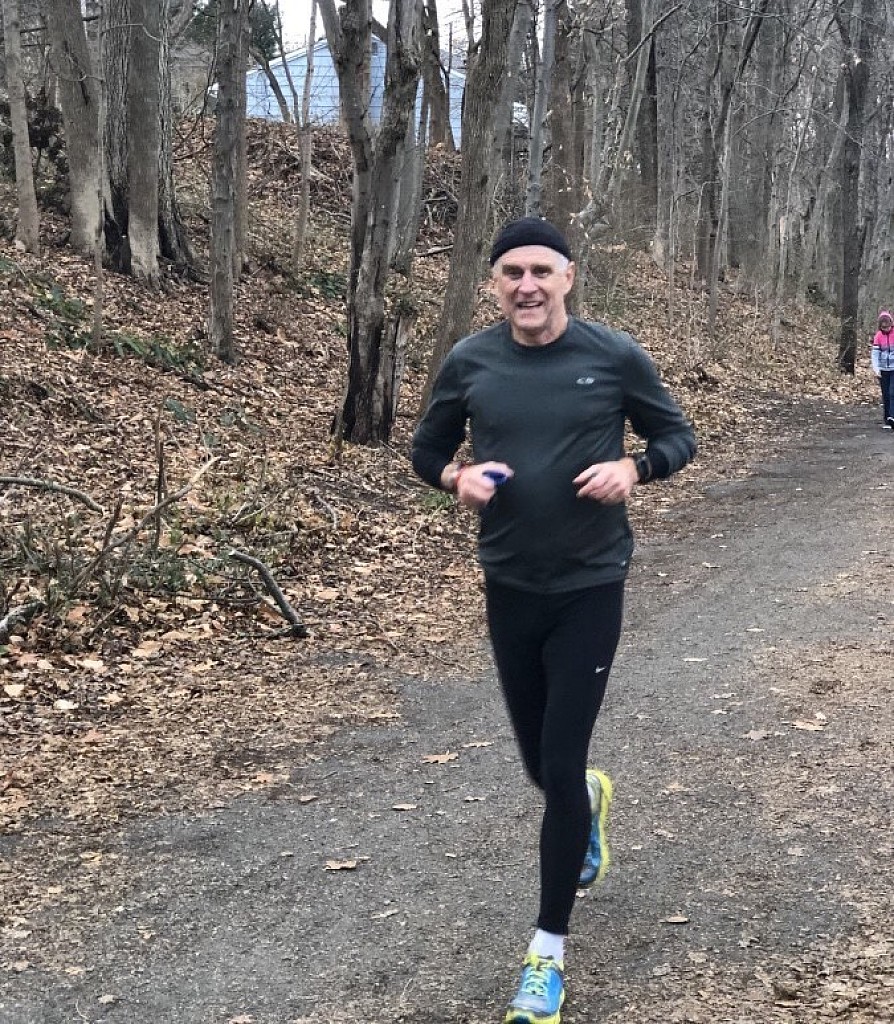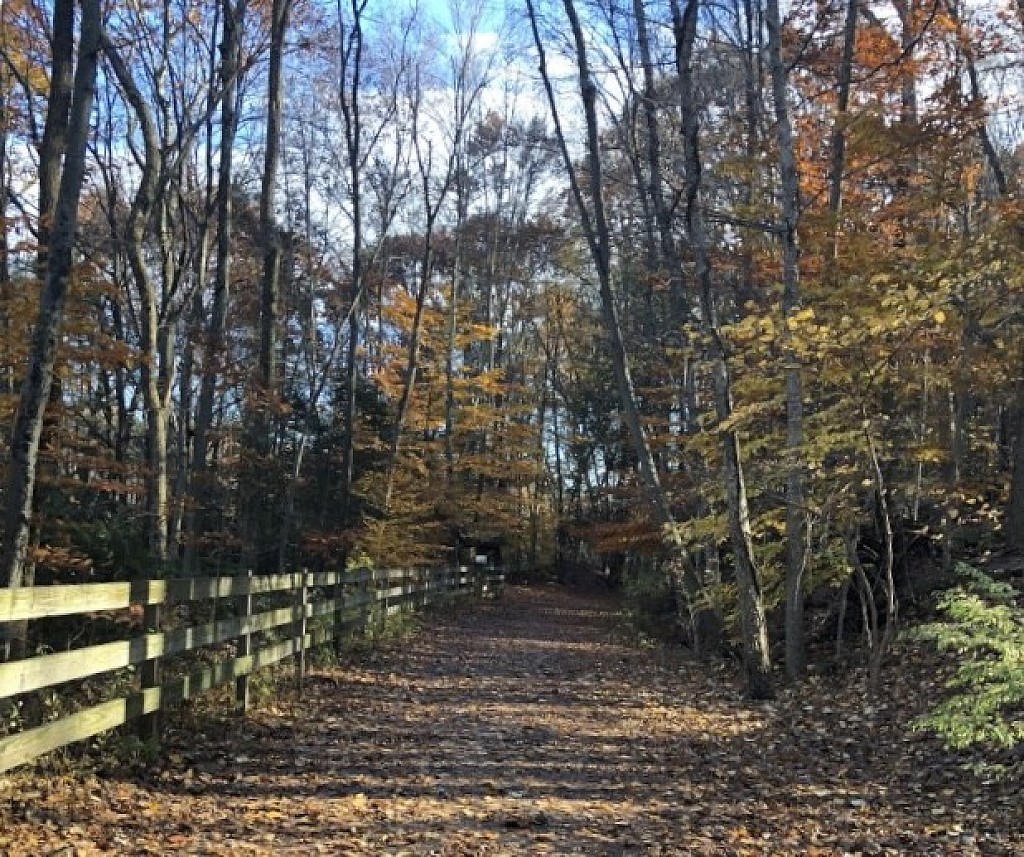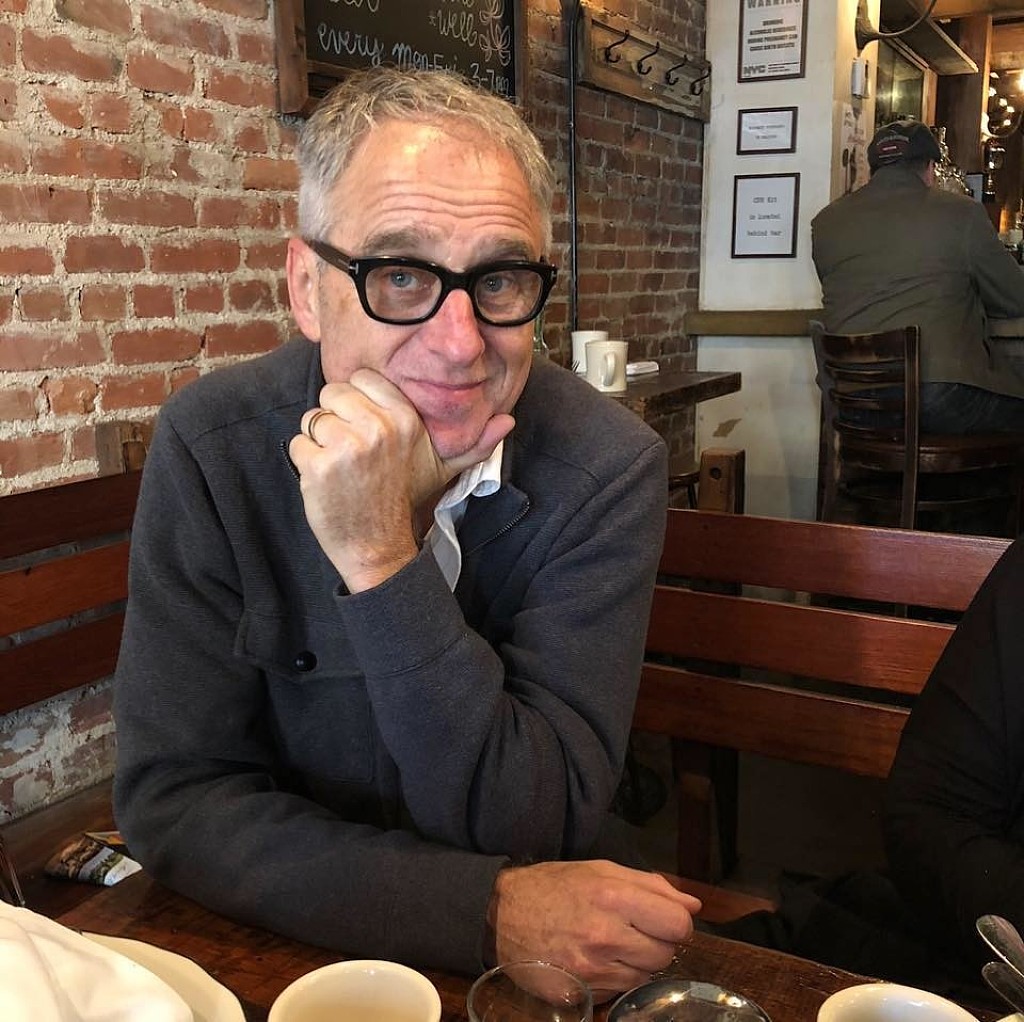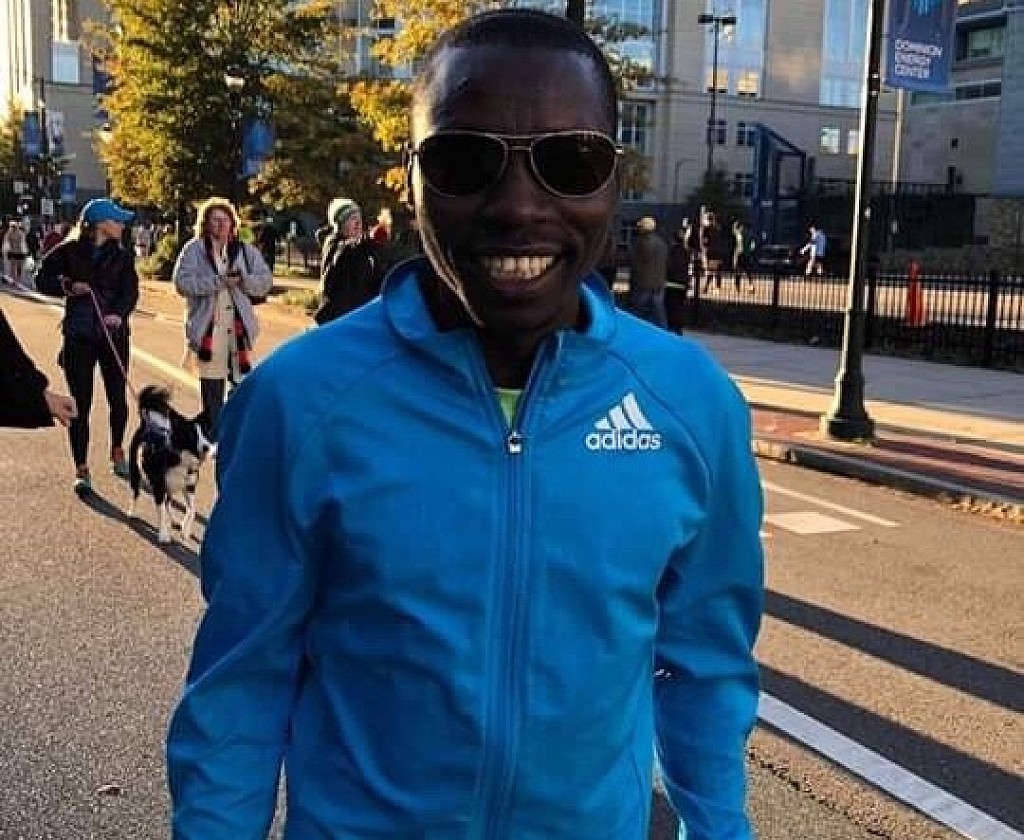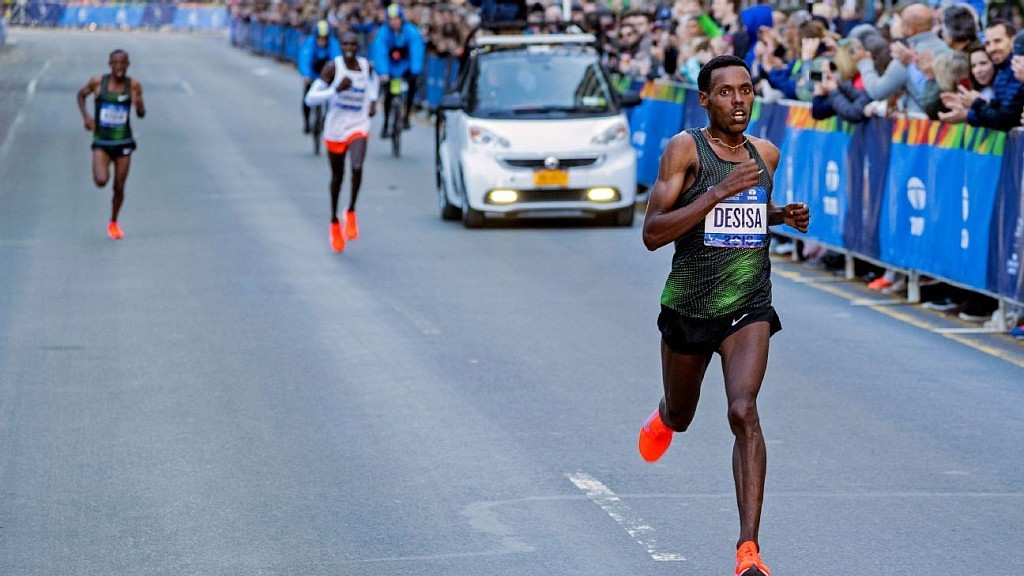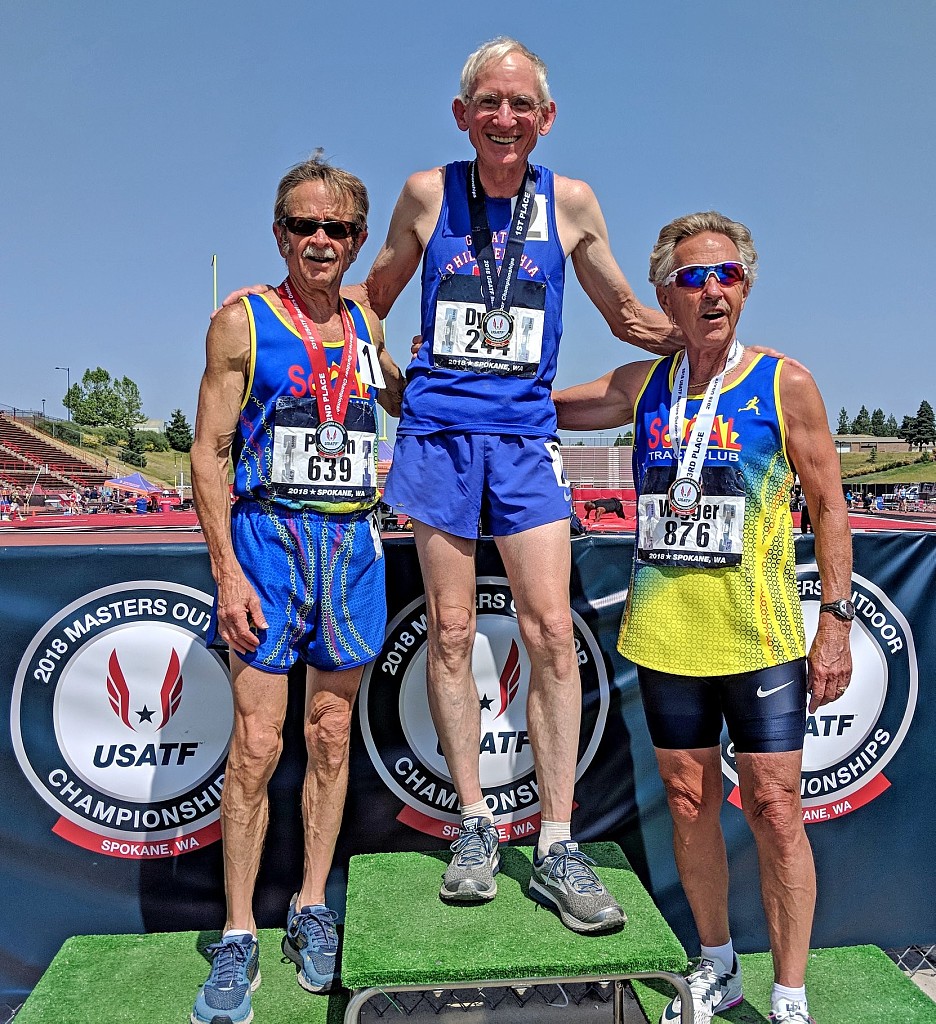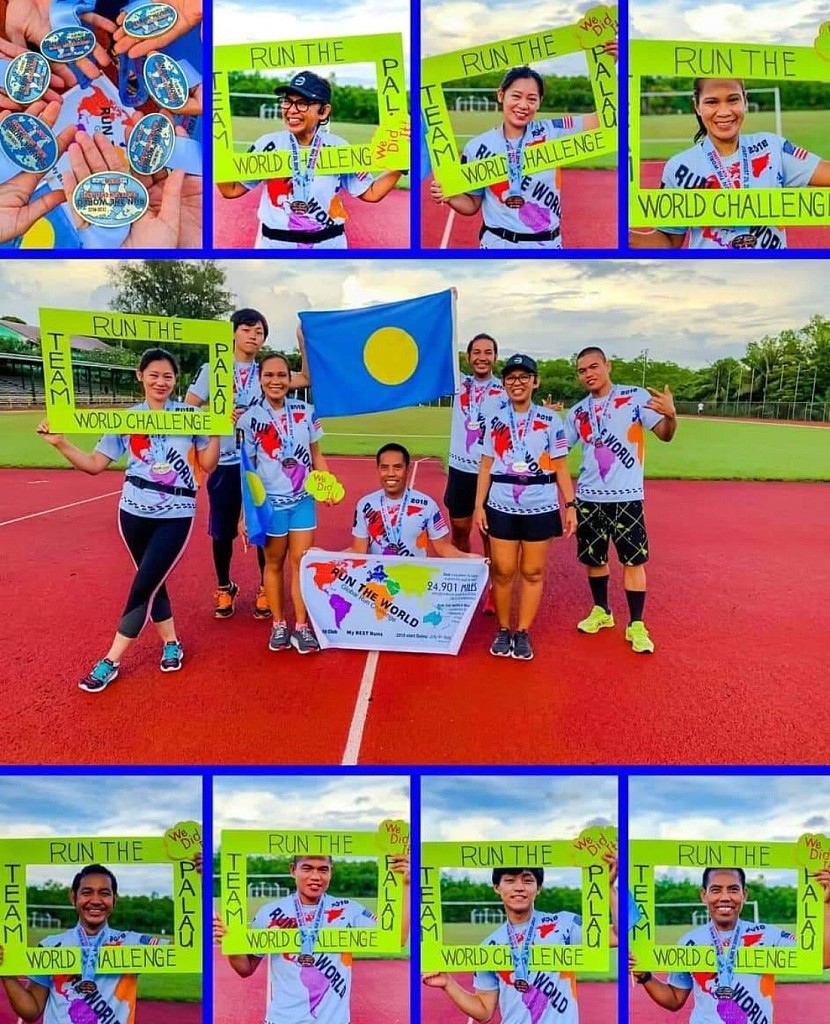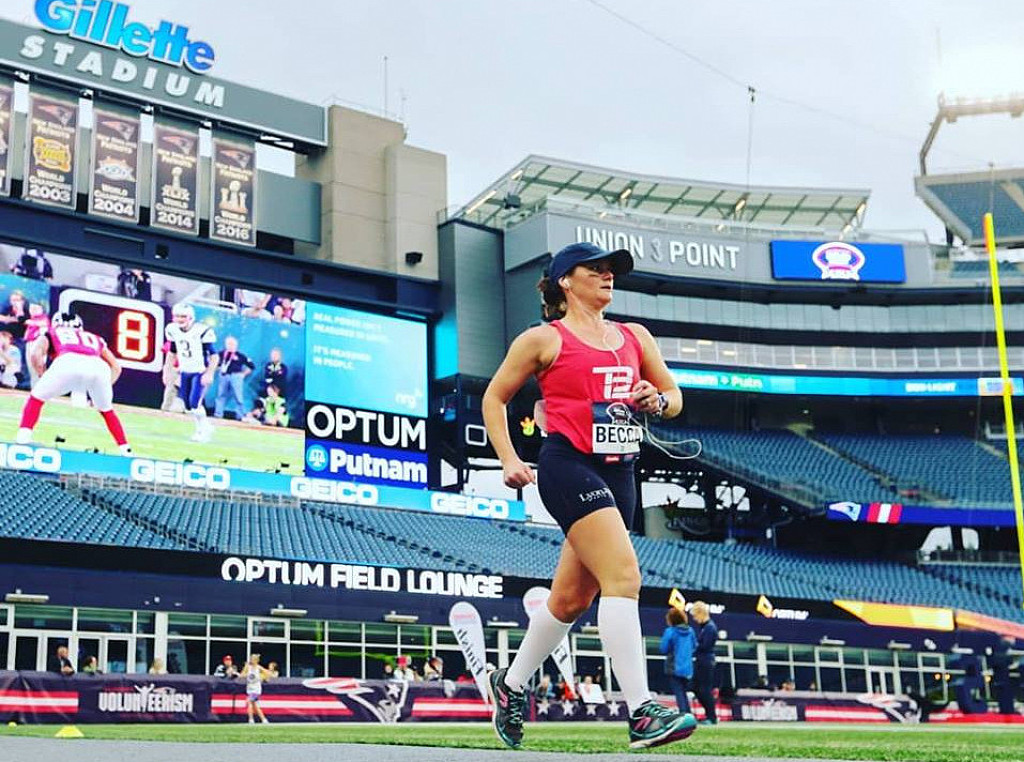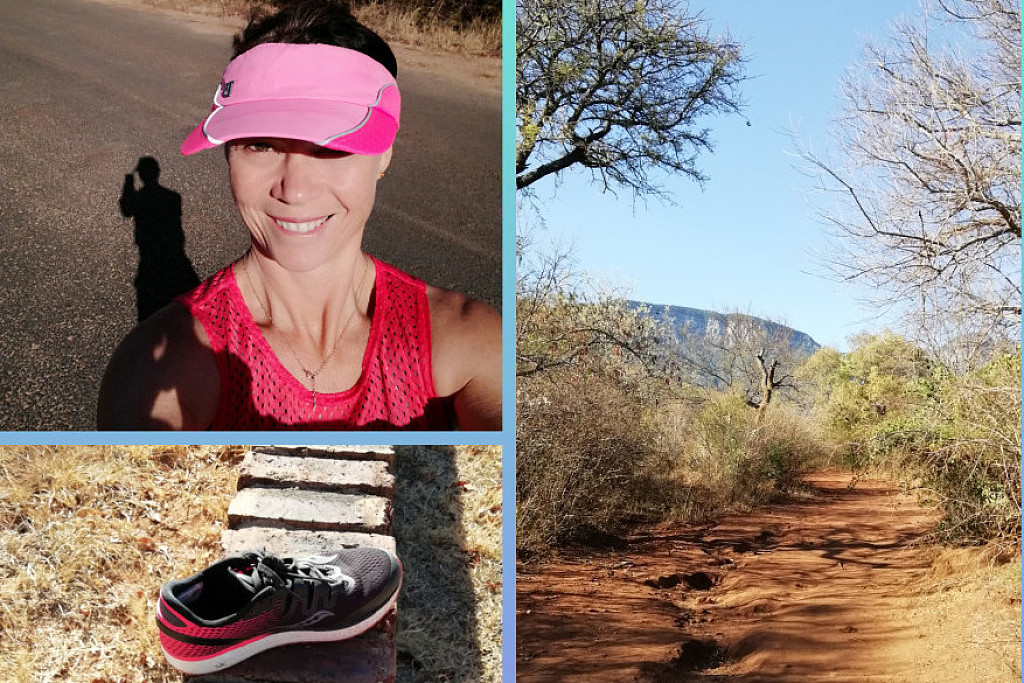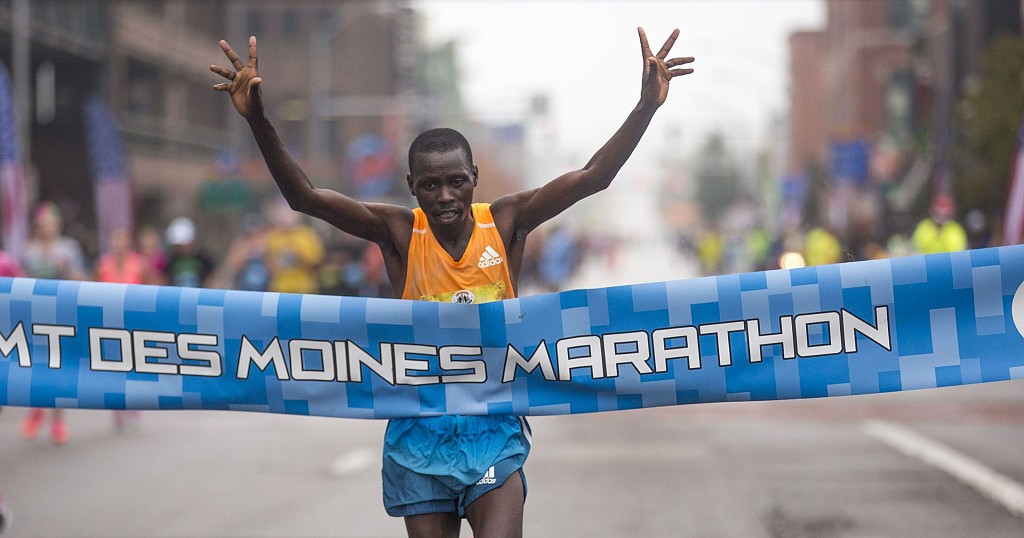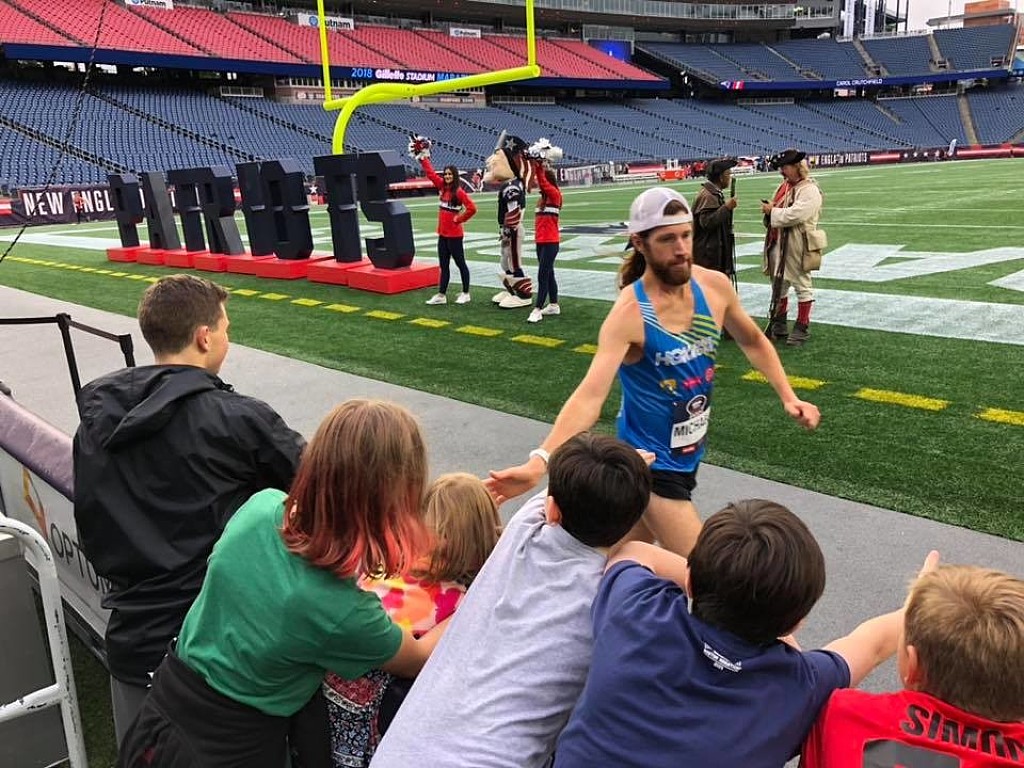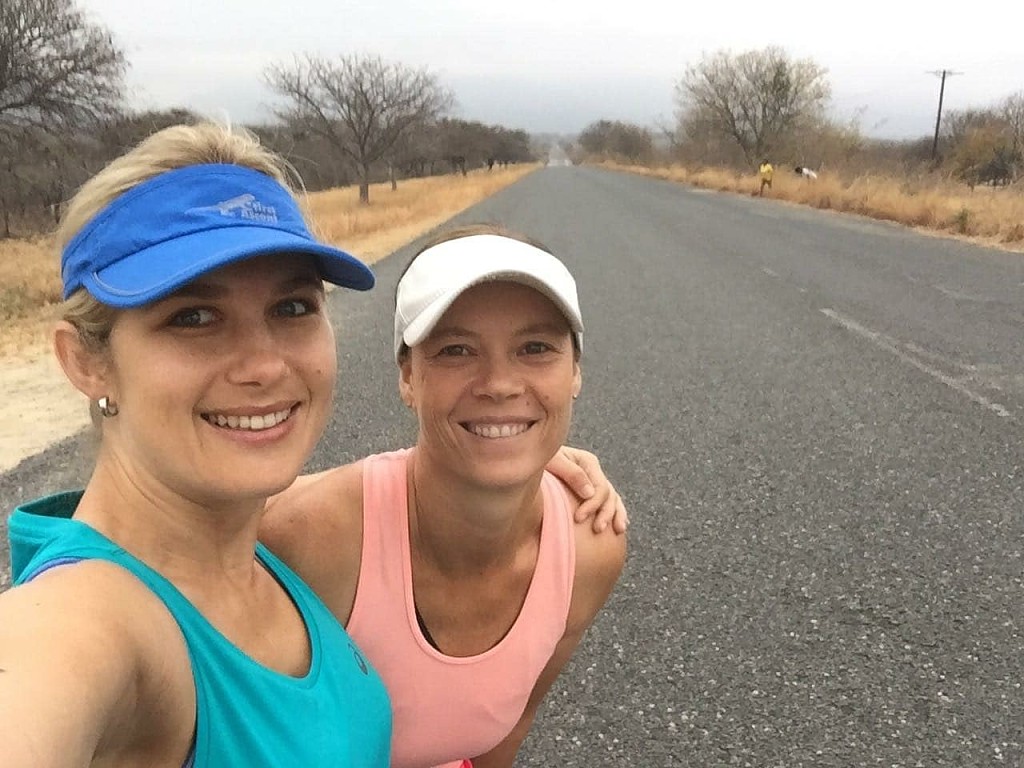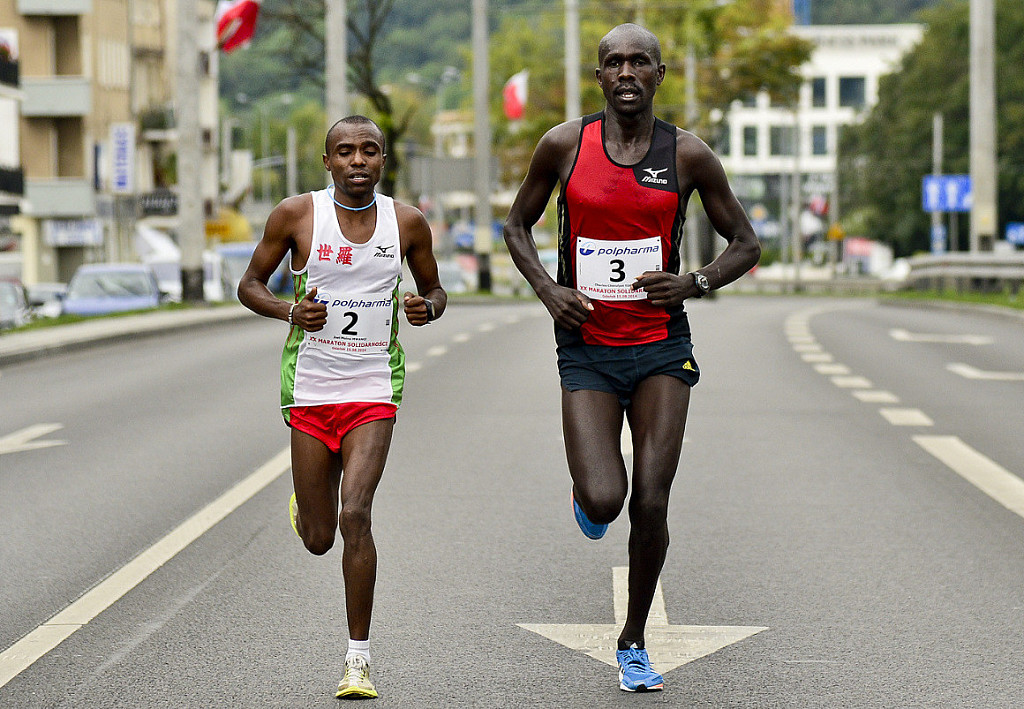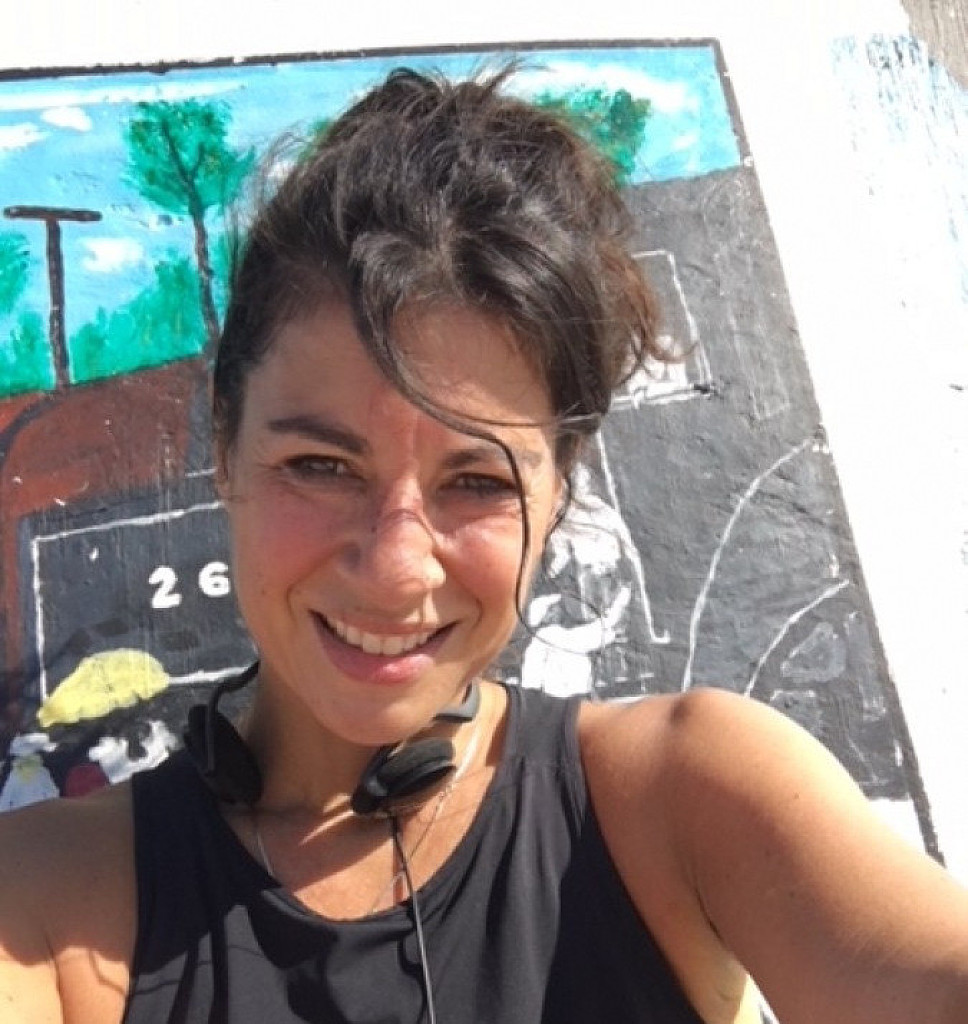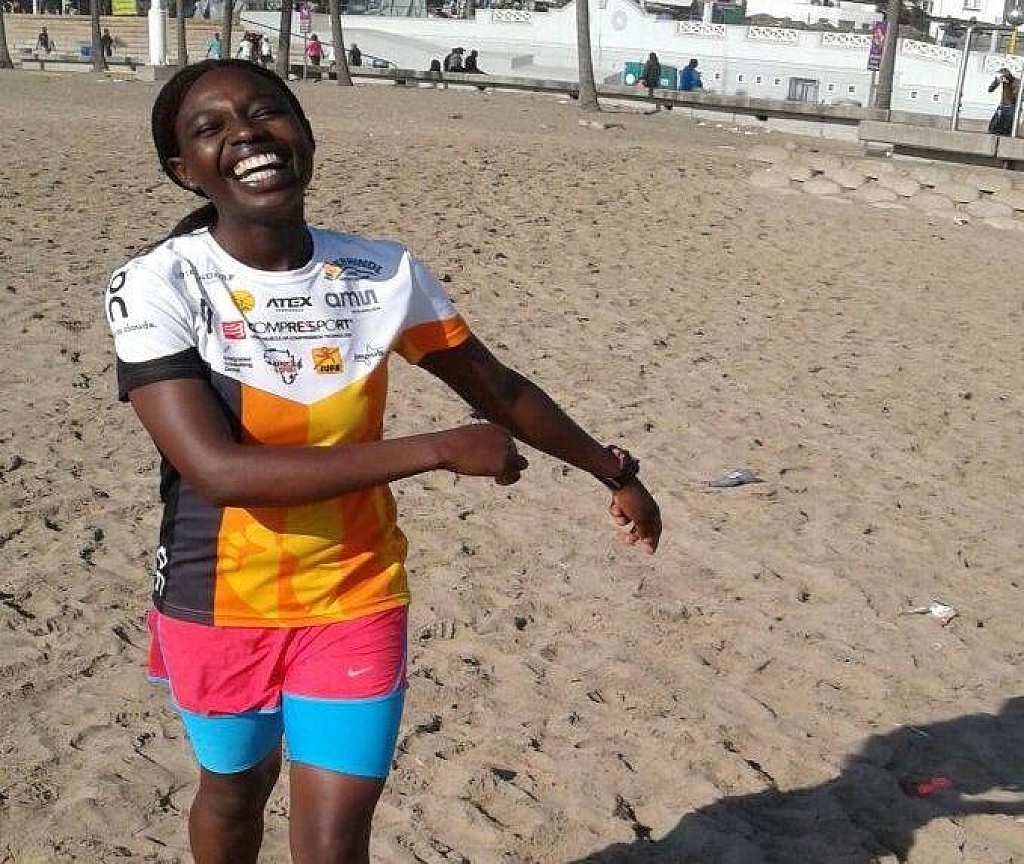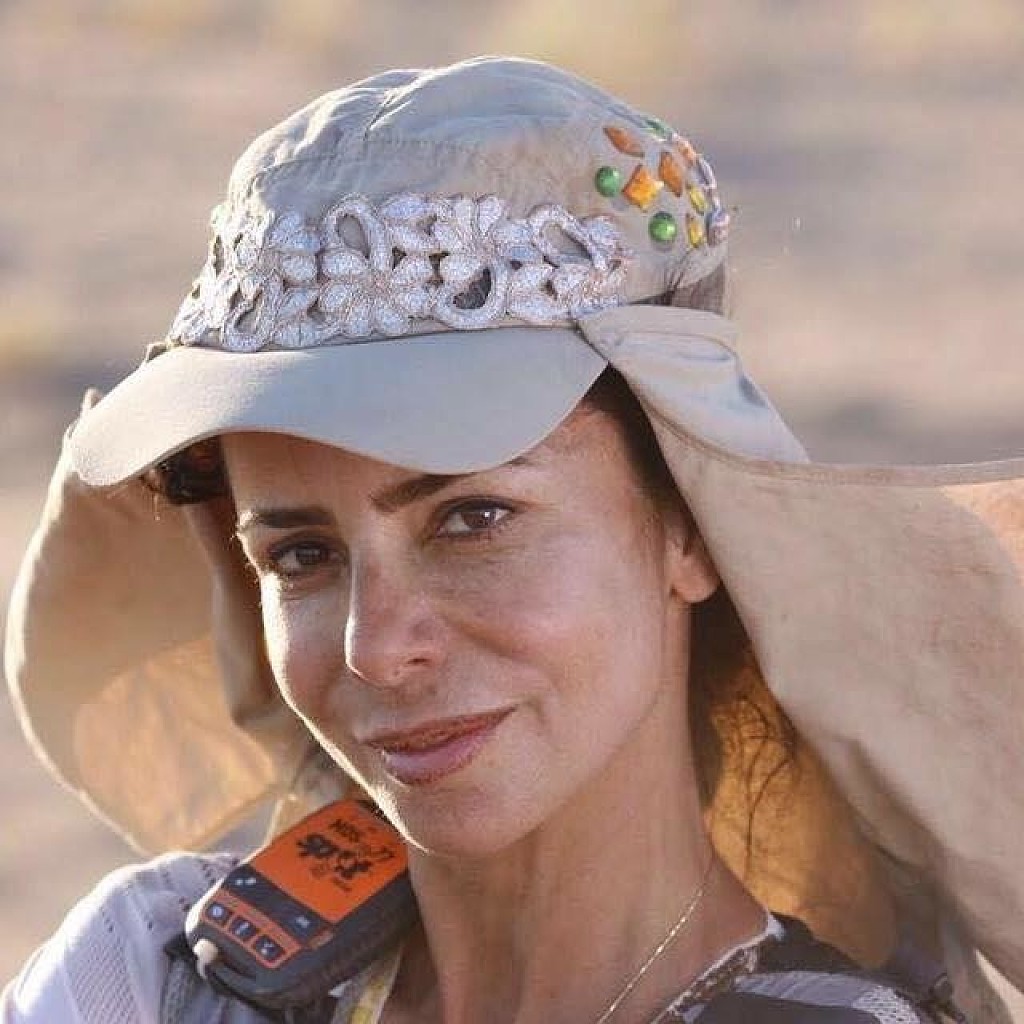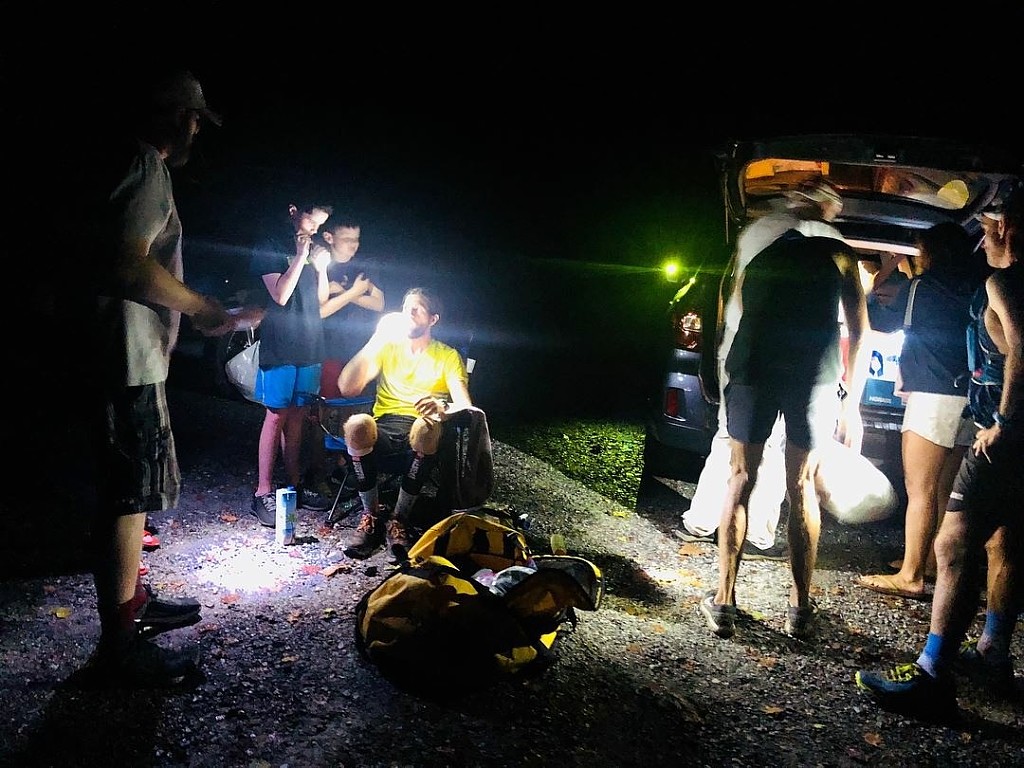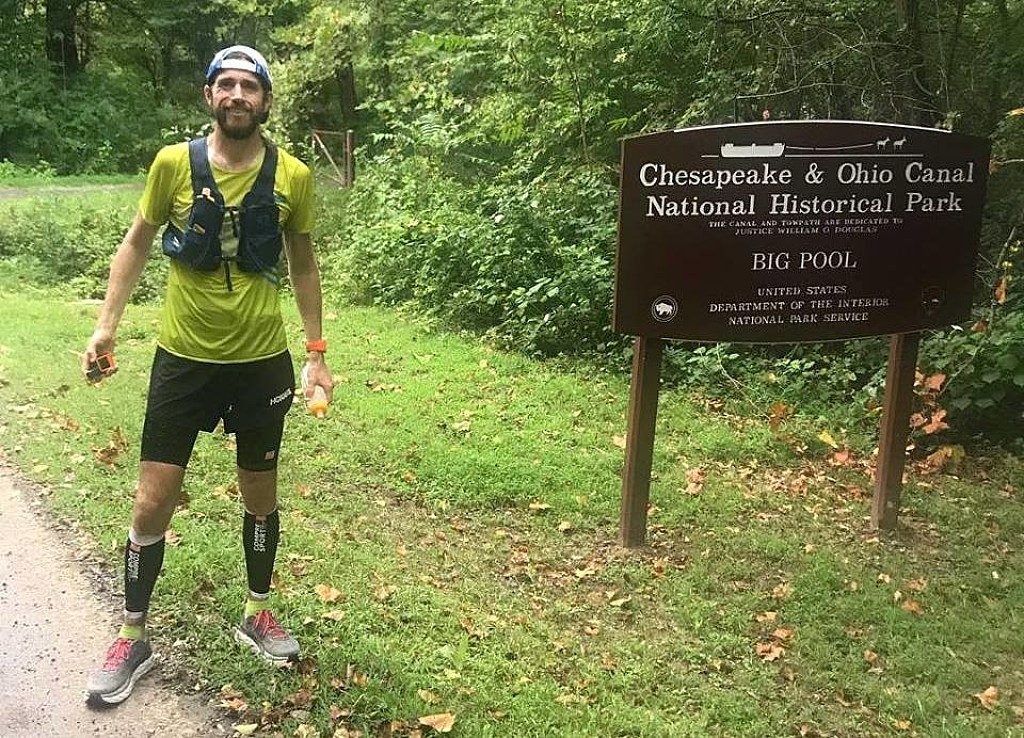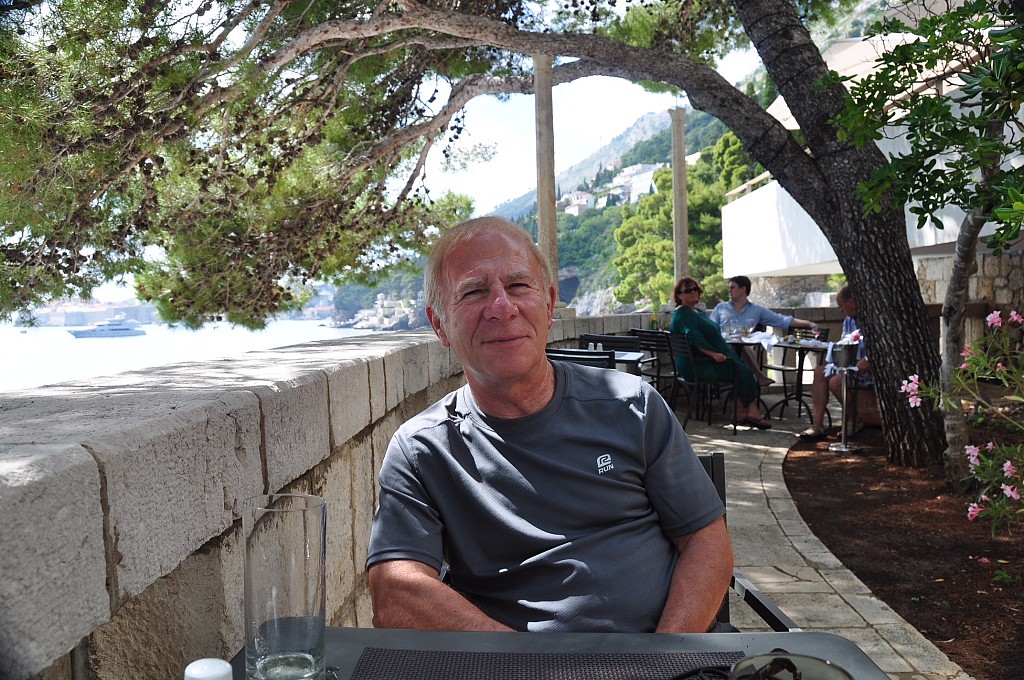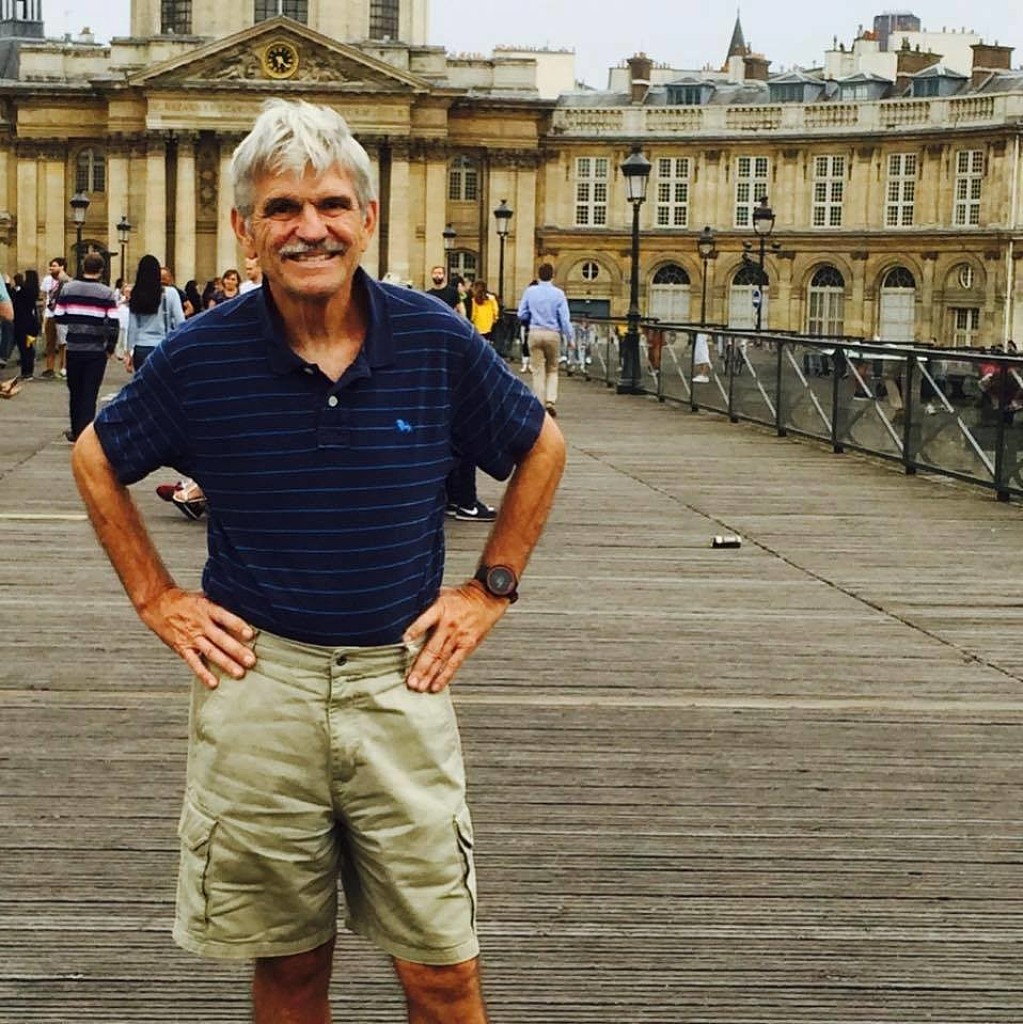Running News Daily
Running News Daily is edited by Bob Anderson. Send your news items to bob@mybestruns.com Advertising opportunities available. Train the Kenyan Way at KATA Kenya and Portugal owned and operated by Bob Anderson. Be sure to catch our movie A Long Run the movie KATA Running Camps and KATA Potato Farms - 31 now open in Kenya! https://kata.ke/
Index to Daily Posts · Sign Up For Updates · Run The World Feed
Articles tagged #Run The World
Today's Running News
Rock ‘n’ Roll Las Vegas Racing Under the Neon Lights
Running a race is always exhilarating, but doing it under the dazzling lights of the Las Vegas Strip takes the experience to a whole new level. The Rock ‘n’ Roll Las Vegas Marathon, Half Marathon, 10K, and 5K offer participants a one-of-a-kind opportunity to run the world’s most famous boulevard at night, transforming an ordinary race into an unforgettable party on foot.
The course itself is as iconic as the city it winds through. Runners start their journey near the Las Vegas Festival Grounds, heading straight into the heart of the Strip. As the sun sets and the city lights flicker on, the real magic begins. Participants glide past legendary landmarks like the Bellagio fountains, the Eiffel Tower at Paris Las Vegas, and the Stratosphere, all while the vibrant energy of the city pulses around them.
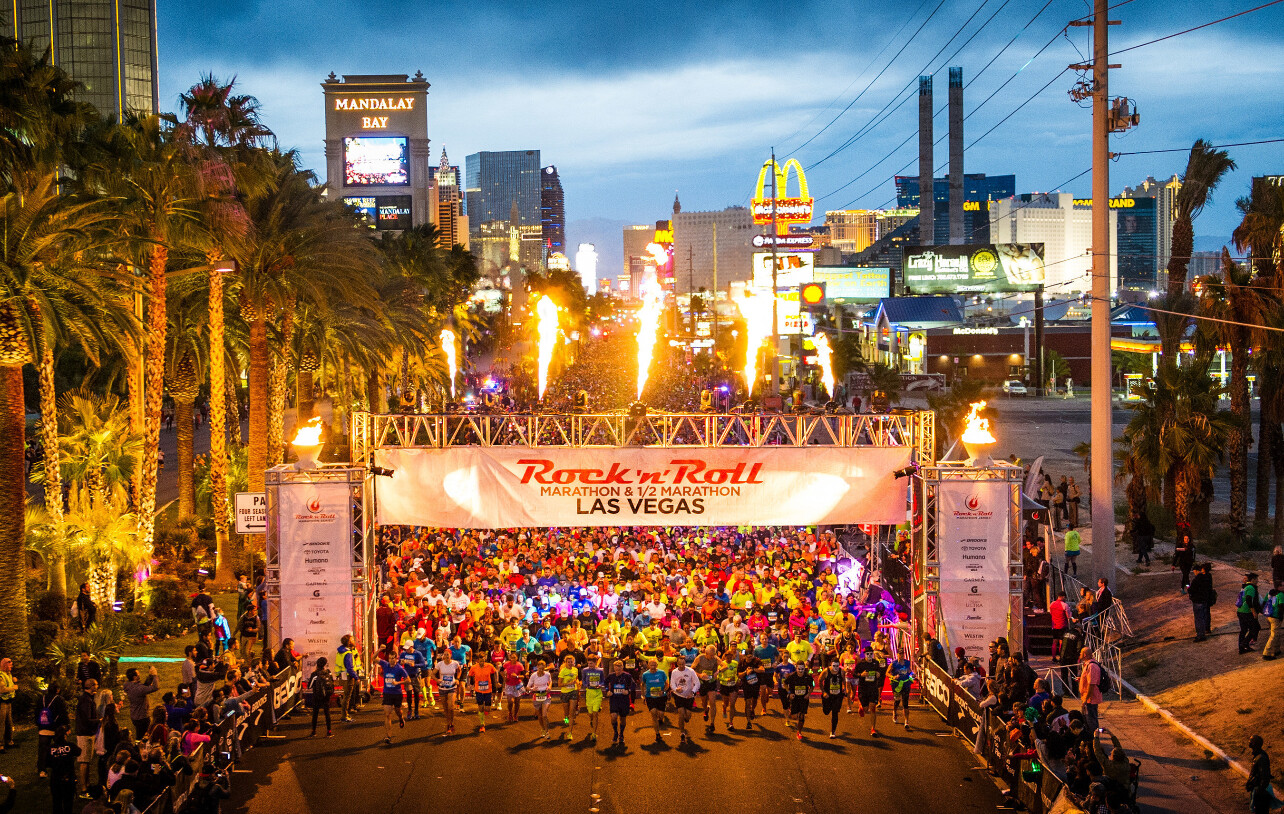
Live music stages, energetic cheer zones, and DJs are scattered throughout the course, making sure runners stay motivated and entertained every step of the way. The combination of pounding feet, flashing lights, and pumping beats creates an electric atmosphere unlike any other race.
What truly sets the Rock ‘n’ Roll Las Vegas race apart is its nighttime start. The half marathon and marathon typically kick off after sunset, allowing runners to experience the Strip when it’s most alive. The cool desert air, combined with the glow of neon lights, makes for perfect running conditions. It’s not just a race—it’s an event, a celebration, and an adventure rolled into one.
For many, the highlight comes as they approach the final miles, with the bright lights of the Strip illuminating the path to the finish line. Crossing the finish near the iconic Mirage or Venetian resorts, runners are greeted by cheering crowds, pumping music, and the satisfaction of completing a bucket-list race.
After the race, the celebration continues. Participants can enjoy post-race festivities, indulge in world-class dining, or simply soak in the electric atmosphere of the city. Whether you’re running for a personal best, for fun, or for the experience, the Rock ‘n’ Roll Las Vegas Marathon delivers a night to remember.
In Las Vegas, the city that never sleeps, neither do the runners. And when you’re racing down the Strip, surrounded by lights, music, and energy, you’ll understand why this race is a must-do for runners around the world.
by Boris Baron
Login to leave a comment
Rock 'n' Roll Las Vegas
Run the Strip at night in Vegas. The half marathon course is as flat and festive as they come – perfect for runners and walkers of all ability levels....
more...Two-time winner Mark Carroll returns to Manchester Road Race as honorary chair
Two-time Manchester Road Race winner Mark Carroll recalled his introduction to the annual Thanksgiving Day race on Thursday.
Carroll, an Irish Olympian who is the Boston Athletic Association’s director of performance, is this year’s honorary race director. He will be on the press truck at the 88th edition of the race Nov. 28 on Main Street in Manchester.
In 1995, Carroll had just graduated from Providence College and was competing at the Millrose Games the following year when he was approached by the late Irish native P.J. Tierney, who had been responsible for getting Irish runners like John Treacy and Eamonn Coghlan to run at Manchester.

“He said, ‘Treacy’s won. Coghlan’s won it,’” Carroll said. “They were legends in Ireland. I called my agent (John’s brother Ray) and I said, ‘Hey, I got to go to Manchester in November.’
“The way P.J. put it, it was of national importance.”
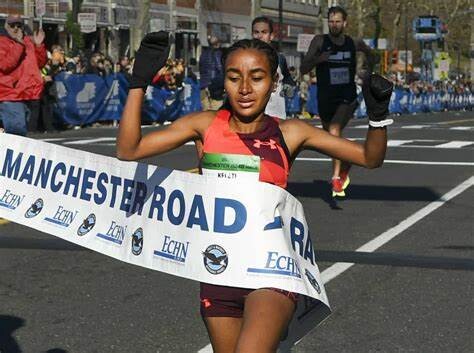
So Carroll went. He was in shape to win. But he was beaten in the last quarter mile by Khalid Khannouchi, who went on to run the world record in the marathon. The next year, Carroll finished second again to Aurelio Miti Handanga of Angelo. He kept coming back. Tierney was still on him to win it.
“I started to appreciate everything around the event,” he said. “The pasta dinner. The energy on race day is second to none and I’ve raced all over the world. The start of the Manchester Road Race is very. very special.”
He finally won in 1998 and again in 2000, finishing second for the third time in 1999.
“I can’t believe it’s 28 years since I first ran here,” he said Thursday. “I drove around the course this morning and it brought back vivid memories, some of the fondest memories of my career.
“When you look at the list of names who have won the race, it just speaks to the stature of the race. Professional runners want to come here and win; it’s seen as a feather in your cap to win here.”
Getting ready for potential Main Street changes
Road race organizers are planning to have temporary plastic fencing on the corner of Main and Charter Oaks streets where the course turns at the start of the race to simulate street width if a proposed roundabout is constructed there in the future.
The Downtown Manchester Improvements Project, in part, is intended to shrink the number of lanes on Main Street to make the road safer. The plan has been controversial for some Main Street businesses, who oppose it for a variety of reasons.
But the road race organizers, who have met with planners, say that the race will not be affected, except at the one corner, where the plans call for the road to be 40 feet wide. There are upwards of 10,000 runners at the annual race and concerns about a crush of runners bottlenecking at the turn.
“It’s a very contentious item,” road race president Tris Carta said of the project. “There’s a lot of people, as this goes forward, who will be impacted negatively, so some of the businesses have a real problem with this.
“We had to figure out a way to keep our race. At the meetings, they’ve been very good with us, meeting and showing us the plans.”
So they’re going to give the fencing a trial run to see if the smaller space works. If there is a problem on race day, the fencing can be removed by volunteers who will be holding it.
“We said, ‘If this is what’s going to be, let’s practice,’” Carta said.
That’s the only part of the race that will be impacted, Carta said. Even with a potentially narrower Main Street, the part of the road used by the race will not be affected.
Three-time women’s winner is back
Weini Kelati, who finished eighth in the Olympic 10,000 meters for the U.S. this summer, will return to the Manchester Road Race after winning the women’s race the past three years. Runner-up Annie Rodenfels of Newton, Mass. who finished second last year, is also back as is 2019 winner Edna Kiplagat. On the men’s side, there are three Olympians – Kenyan Edwin Kurgat (seventh in the 5,000 meters), 2021 winner Ben Flanagan, a Canadian Olympian in the 5,000 meters and British Olympian Pat Dever (5,000) – as well as Andrew Colley, who finished fourth in 2022 in the fourth fastest time in Manchester history (21:07).
by Lori Riley
Login to leave a comment
Manchester Road Race
The Manchester Road race is one of New England’s oldest and most popular road races. The 86th Manchester Road Race will be held on Thanksgiving Day. It starts and finishes on Main Street, in front of St. James Church. The Connecticut Sports Writers’ Alliance recently honored the Manchester Road Race. The CSWA, which is comprised of sports journalists and broadcasters...
more...Why Noah Lyles prefers having gold medals to a world record
Noah Lyles has opened up on why he prefers winning many gold medals as compared to breaking world records.
Triple World champion Noah Lyles has admitted that he prefers having gold medals to world records despite being vocal about going for Usain Bolt’s 200m world record.
Lyles noted that having medals is a lifetime thing and they will be your forever unless one gets banned but world records usually come and go.
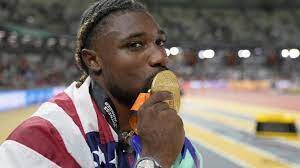
The two-time World champion explained that times are always shattered from time to time and they are not something he would prefer.
“I would rather have a gold medal because medals last forever as long as you don’t get banned but records will always be broken,” Lyles told the Letsrun.com podcast.
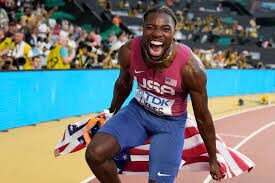
Follow the Pulse Sports X (Twitter) handle for more news.
Meanwhile, Lyles’ coach Lance Brauman also noted that he prefers gold medals to world records and explained that he also hopes Lyles thinks the same way.
“Once you’re an Olympic champion, you’re always an Olympic champion. World records are great, but it’s not what this sport should be about. The sport is a competition, the sport’s running against the other guys in the race,” said Brauman.
Concerning breaking the world record, Brauman believes that his 60m exploits in the indoor season open up the possibility of breaking Usain Bolt’s 19.19 world record in the 200m.
“Maybe he can run the world record, 19.15, 19.12, somewhere in that range, based on the same math, if I’m using it correctly.
“Will he do that? That’s hard to say. When you start talking that fast, there’s a lot of intangibles that you can’t control.
“Weather, time of year, environment, how tired are you from running three races before you get to that, which is five when you get to the final one,” the tactician noted.
by Abigael Wuafula
Login to leave a comment
Purity Komen upsets Ruth Chepngetich and Daniel Ebenyo wins in Istanbul
Purity Komen was the surprise winner of the N Kolay Istanbul Half Marathon. Overtaking fellow-Kenyan and race favourite Ruth Chepngetich the 24 year-old stormed to her biggest career win with a personal best of 66:30. Course record holder Chepngetich followed in second with 67:18 while Evaline Chirchir made it an all-Kenyan podium with 67:31. Stella Rutto of Romania was the fastest European, finishing 10th with 70:05.
In partly windy conditions hopes for a course record faded in the men’s race as well after a fast first section. 27 year-old Daniel Ebenyo of Kenya was the winner of Turkey’s best quality road race with 59:52. Marokko’s Hicham Amghar took second place in 59:58 and Haftu Teklu clocked 60:03 for third. Britain’s Marc Scott was the best European runner in 63:17 for 12th place.
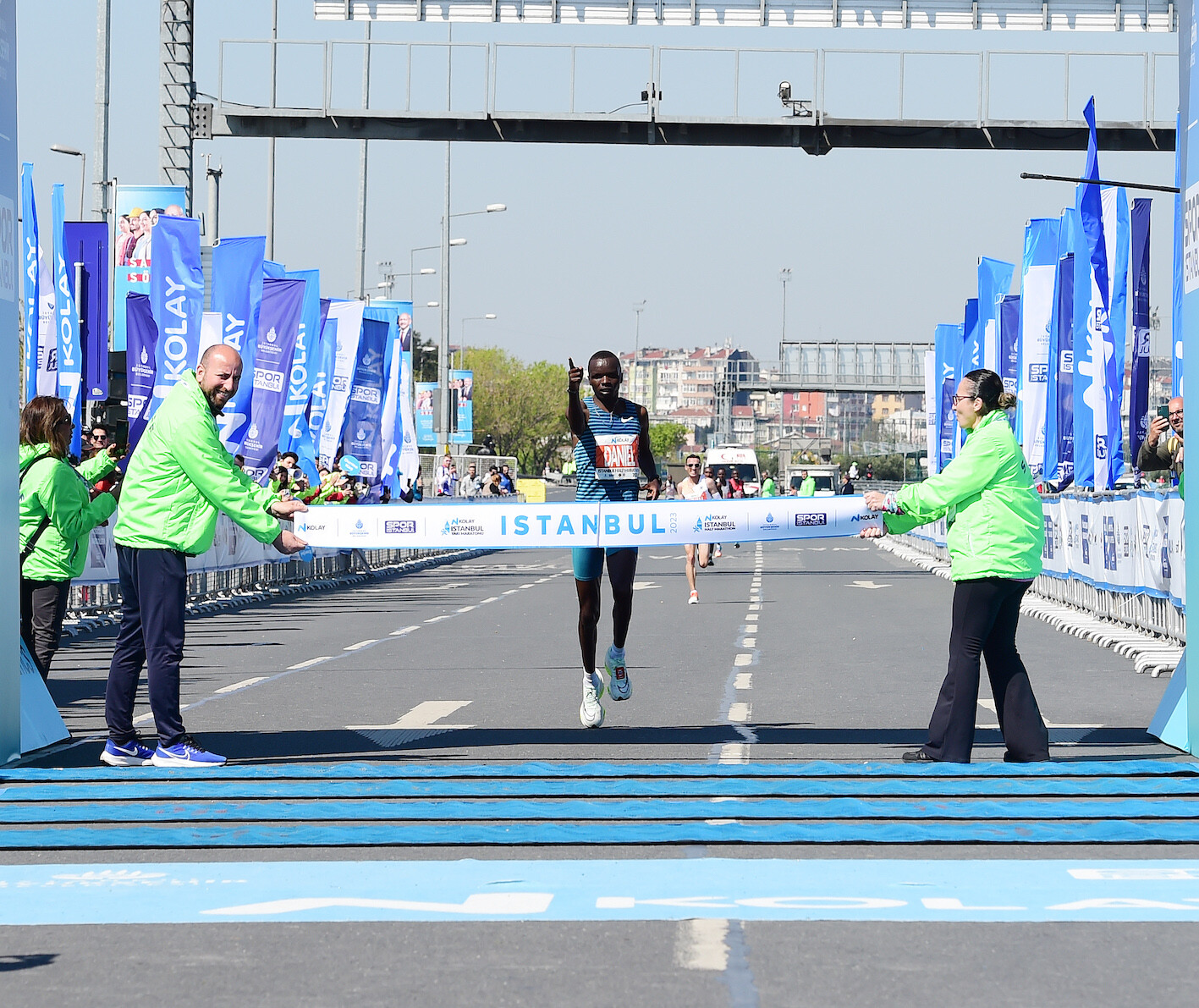
A record number of 12,300 runners competed in the 18th edition of the half marathon and the 10k race staged parallel. Many athletes ran for charity, collecting money for the victims of the devastating earthquake that shook southern Turkey earlier this year. The N Kolay Istanbul Half Marathon is a Gold Label Road Race of World Athletics.
"It was a nice race and especially the men’s elite was very competitive. We are happy that we continue to register record fields. It is always exciting to experience the historic atmosphere here in Istanbul and we are now inviting everyone to be back for our marathon on 5th November,“ said Race Director Reynar Onur.
The women’s race began as expected. Ruth Chepngetich sped away from the field right after the start and was so quick that even the TV cameras missed her on a few occasions early on. Passing the 5k mark in 15:16 the Kenyan was almost on course for breaking her Kenyan record and her Istanbul course record of 64:02, which in 2021 was a world record as well.
However once the 2019 Marathon World Champion came off Galata Bridge and had to run against the wind for almost four kilometers she slowed considerably. At the 10k point her 31:09 split time then indicated a 65:45 finish and her lead had shrunk to only four seconds. Purity Komen, Evaline Chirchir and Ethiopia’s Bosena Mulatie caught her a few minutes later. Then it was Komen, who had only been number nine with a PB of 67:08 on the final start list, who moved ahead before the 15k mark. Chepngetich tried to follow her in a bid to make it six wins from six races in Istanbul, but today she was unable to do so. Purity Komen won the race with 66:30 and became the first woman to beat Ruth Chepngetich on the historic roads of Istanbul.
“My body did not respond after the early part of the race. I don’t know why, but I assume that may be the race came a bit too soon after the Nagoya Marathon in March,“ said Ruth Chepngetich. “I have not yet decided if I will run the World Championships’ marathon or an autumn race. The big goal is the Olympic Games next year and I hope to be selected for the team.“
While Ruth Chepngetich is an experienced marathoner the victory in Istanbul may well have brought Purity Komen closer to her debut at the classic distance. “This victory was unexpected. I was surprised when I suddenly saw Ruth in front of me and was then able to pass her,“ said Purity Komen. “I had hoped to achieve a 65 minutes’ time, but it was too windy today. I now plan to run my marathon debut next year.“
The men’s race began very fast as well with the first couple of split times indicating a finishing time of around 58:00. But as in the women’s competition the pace then dropped considerable once the leading group hit the wind. A group of around ten athletes passed the 10k mark in 28:22, which is sub 60 minutes’ pace.
Two athletes were pushing the pace at the front: Kenya’s Daniel Ebenyo and Hicham Amghar of Morocco, who have PBs of 59:04 and 59:53 respectively. Soon after the 15k point (42:33) Ebenyo took the lead, covering the 16th kilometre in 2:46. Only Amghar was able to follow him, but when Ebenyo indicated to him to help pushing the pace the Moroccan stayed right behind him. Ebenyo then kept pressing ahead and opened up a decisive gap with around 4k to go.
“I hoped to catch Daniel but I am happy with my result. I was going for a PB, but it was not possible in the wind,“ said Hicham Amghar, while Daniel Ebenyo was happy about his first major half marathon victory. “I am excited to have won this race. My aim was to run 59:00 minutes but it was too windy for that,“ said the Kenyan. “I will probably run my marathon debut next year. May be I come back to Istanbul for that.“
Results, Men:
1. Daniel Ebenyo KEN 59:52
2. Hicham Amghar MOR 59:58
3. Haftu Teklu ETH 60:03
4. Charles Langat KEN 60:07
5. Vincent Kipkemoi KEN 60:09
6. Boniface Kibiwott KEN 60:23
7. Benard Biwott KEN 60:47
8. Ashenafi Kiros ETH 61:21
9. Alfred Ngeno KEN 62:24
10. Alene Mekonen ETH 62:32
Women:
1. Purity Komen KEN 66:30
2. Ruth Chepngetich KEN 67:18
3. Evaline Chirchir KEN 67:31
4. Bosena Mulatie ETH 67:43
5. Tigist Gezahagn ETH 68:49
6. Betelihem Afenigus ETH 69:04
7. Beatrice Cheserek KEN 69:14
8. Bekelech Gudeta ETH 69:35
9. Shamilah Kipsiror KEN 69:38
10. Stella Rutto ROM 70:05
Login to leave a comment
N Kolay Istanbul Half Marathon
The Istanbul Half Marathon is an annual road running event over the half marathon distance (21.1 km) that takes place usually in the spring on the streets of Istanbul, Turkey. It is a IAAF Gold Label event. The Istanbul Half Marathon was first organized in 1987. After several breaks it was finally brought back to life in 2015 when the...
more...Who Will Run the World Championships Marathon for the U.S. This Summer?
The three men and three women are selected by a descending order time list. But not everyone accepts their spot. Over 9 days in August, the World Athletics Championships will take place in Budapest, Hungary. The women’s marathon is scheduled for August 26, and the men’s is August 27, the last day of competition.
USA Track and Field (USATF) uses different selection procedures for this event than it does for the Olympic Games. Instead of using a Trials race, as it does for the Olympics, USATF offers spots to athletes using a descending order time list for certain marathons run between December 1, 2021, and May 30, 2023, as long as those athletes have met the qualifying criteria set by World Athletics. (The rules are complicated. For instance, the Boston Marathon is not on the list of “World Athletics approved” courses, but USATF is allowing times run at Boston in 2022 and 2023 for the descending order list.)
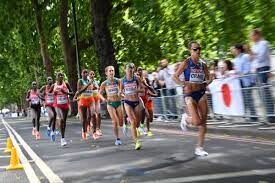
Not every American athlete will accept a spot, if offered. Some instead will choose to focus on a fall marathon, where they can earn substantial appearance fees and prize money that aren’t offered at worlds. Others won’t race at all this summer or fall, and instead they’ll train for the Olympic Marathon Trials in February 2024. How is it likely to shake out? Runner’s World reached out to the top seven men and women currently on the list or their coaches or agents to inquire about their plans. The window to run a qualifying time, however, remains open until the end of May. So a top performance in the next month could shake up the list.
Here’s what they said:
Women
Emily Sisson, 2:18:29, 2022 Chicago Marathon: Not likely, per her agent, Ray Flynn
Keira D’Amato, 2:19:12, 2022 Houston Marathon: Yes, if offered a spot
Betsy Saina, 2:21:40, 2023 Tokyo Marathon: No, she is focusing on a fall marathon
Sara Hall, 2:22:10, 2022 World Championships marathon: Has not yet decided
Emma Bates, 2:22:10, 2023 Boston Marathon: Not likely, per her agent, Ray Flynn
Susanna Sullivan, 2:24:27, 2023 London Marathon: Yes, if offered a spot
Aliphine Tuliamuk, 2:24:37, 2023 Boston Marathon: Will consider if offered a spot, per her agent, Hawi Keflezighi
Wild card: Will Molly Seidel run a May marathon?
Men
Conner Mantz, 2:08:16, 2022 Chicago Marathon: Not likely, per his agent, Ray Flynn
Scott Fauble, 2:08:52, 2022 Boston Marathon: No Elkanah Kibet, 2:09:07, 2022 Boston Marathon: Yes, currently deployed with the U.S. Army in Poland but will accept a spot if offered
Zachery Panning, 2:09:28, 2022 Chicago Marathon: Yes, per coach Kevin Hanson
Leonard Korir, 2:09:31, 2023 Paris Marathon: Did not immediately respond to a message from Runner’s World
Galen Rupp, 2:09:36, 2022 World Championships marathon: No, will run a fall marathon, per his agent, Ricky Simms
Futsum Zeinasellassie, 2:09:40, 2023 Rotterdam Marathon: Will consider if offered a spot, per his agent, Hawi Keflezighi
Wild card: Biya Simbassa runs the Prague Marathon, his debut, on May 7.
by Runner’s World
Login to leave a comment
World Athletics Championships Oregon22 preview: marathon
Kenya’s Geoffrey Kamworor, whose career was traumatized in June 2020 when he was hit by a motorbike during a training run and required surgery on a broken tibia, is due to contest his first major championship marathon in Eugene on July 17.
The 29-year-old from Nyen was named on the Kenyan team for the World Athletics Championships Oregon22 along with 33-year-old Lawrence Cherono – who missed a medal by one place in the marathon at last year’s Olympics – and 35-year-old Barnabas Kiptum.
Kamworor, confident and outgoing, was flying high when he had his accident.
Although he had performed to high levels on the track, where he earned 10,000m silver at the 2015 World Championships in Beijing, it was on grass and roads that he had excelled, winning the world cross-country senior titles in 2015 and 2017, and world half marathon titles in 2014, 2016 and 2018.
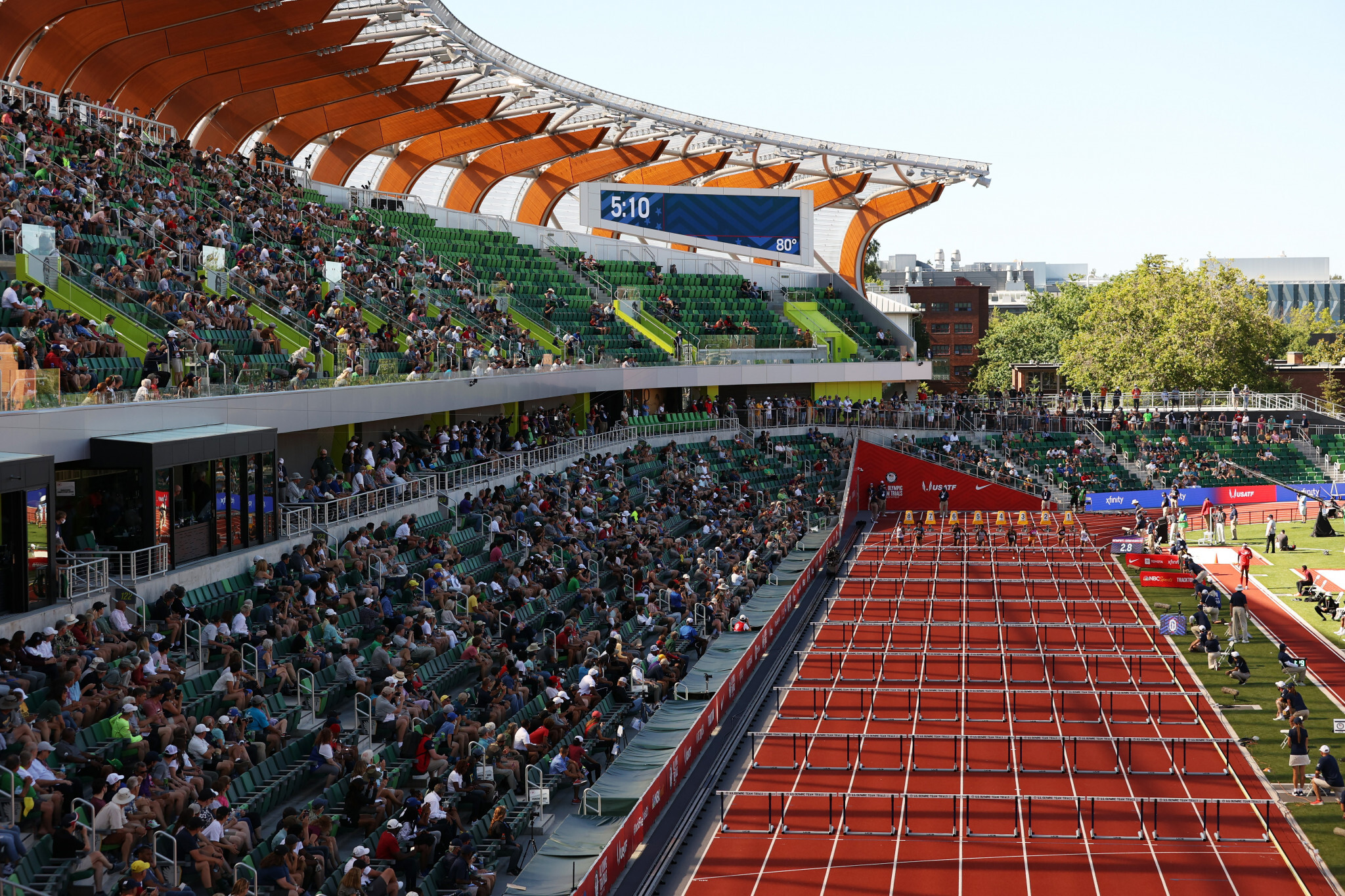
In his first competitive marathon in 2012 he finished third in Berlin in 2:06:12, and he was a consistent presence on the podium at World Majors Marathons thereafter, particularly in New York, where he finished second in 2015, first in 2017, third in 2018 and first again in 2019.
Kamworor ran his first race since the accident in January 2021, winning the Kenyan Police Cross Country Championships before going on to secure a place on Kenya’s Olympic 10,000m team after winning the national trials, only to have to pull out with an ankle injury.
But at the Valencia Marathon last December he was able to perform to the peak of his ability once more as he set a personal best of 2:05:23 in finishing fourth.
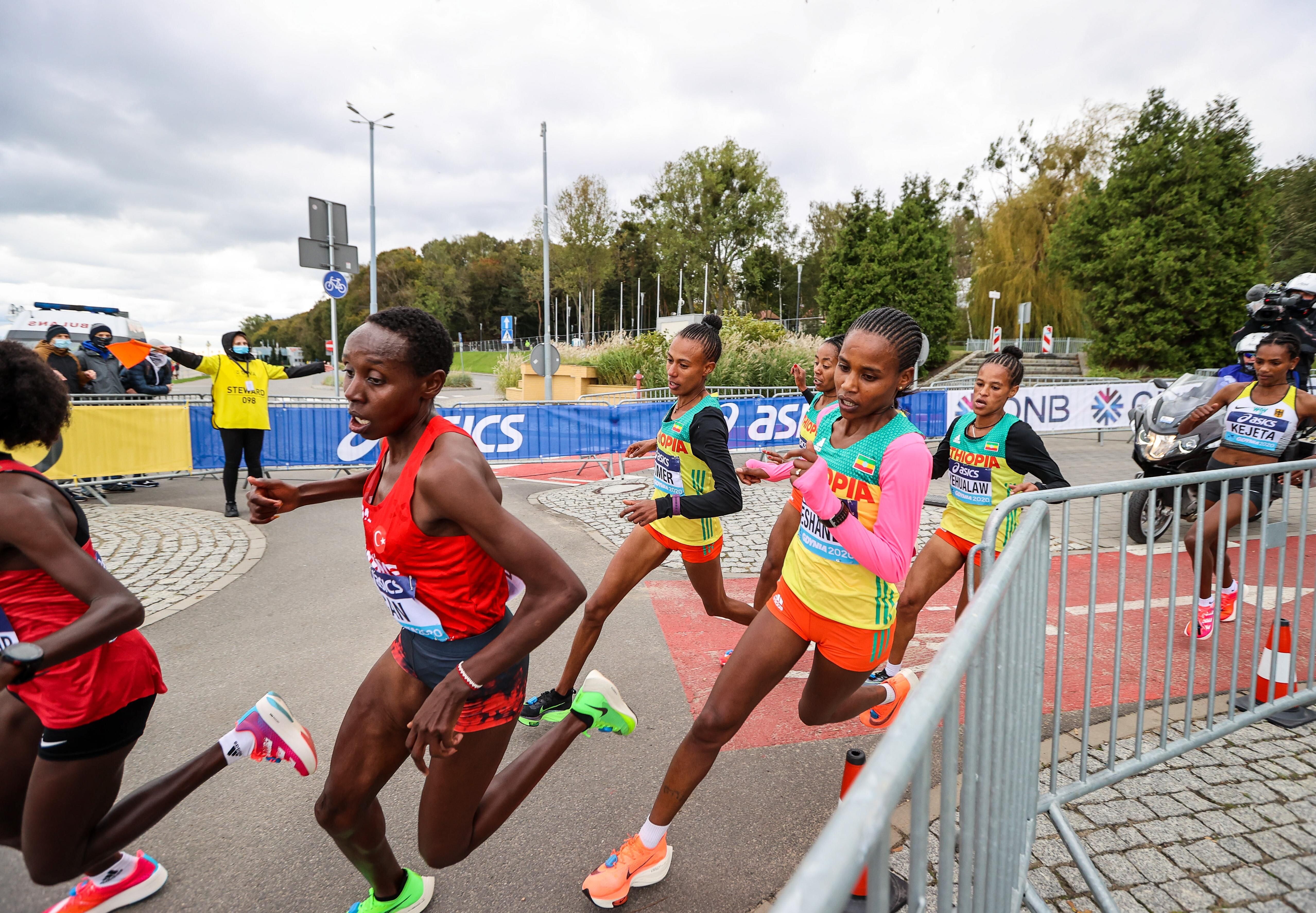
At the previous year’s running in Valencia, Cherono was second in a personal best of 2:03:04, putting him eighth on the world all-time list, having made his World Marathon Majors breakthrough in 2019 when he won in Boston in 2:07:57 and then Chicago in 2:05:45.
Like Kamworor, Kiptum also set a personal best last year as he clocked 2:04:17 in placing third at the Milan Marathon and he has a solid top-three record in virtually every race he has contested.
Such is the depth of Kenyan talent that they can name 2017 world champion Geoffrey Kirui as a reserve.
Meanwhile Kenya’s perennial rivals Ethiopia will be looking to their current world champion Lelisa Desisa, who found the way to win in the steamy heat of Doha three years ago, to make the most of his wild card entry to this year’s competition.
Desisa had early track success, winning the African U20 10,000m title in 2009, and he has since become a highly consistent performer at the highest level, achieving podium finishes four times in New York, including victory in 2018, and four times in Boston, where he won in 2013 and 2015.
He also has championship pedigree, having earned world silver in 2013 six years before his Doha gold, and has a personal best from 2013 of 2:04:45.
The formidable talent Ethiopia can call upon was made clear when it was confirmed that Desisa will have as teammates Tamirat Tola, Mosinet Geremew and Seifa Tura.
Tola earned Olympic 10,000m bronze in 2016 and world marathon silver in 2017. He set his personal best of 2:03:38 last year.
Geremew took silver behind Desisa at the 2019 World Championships, having finished second at that year’s London Marathon in 2:02:55, the third-fastest time in history.
Tura set his personal best of 2:04:29 last year in Milan before going on to win the Chicago Marathon in 2:06:12.
Uganda, the rising nation in distance running, earned this title in 2013 thanks to their 2012 Olympic champion Stephen Kiprotich. But the 33-year-old hasn’t been selected for Oregon, nor have Stephen Kissa, who ran a national record of 2:04:48 in Hamburg earlier this year, and Victor Kiplangat who was third in the second-fastest time ever by a Ugandan, 2:05:09.
Instead, Filex Chemonges, Fred Musobo and Jackson Kiprop will run the World Championships marathon, according to the Uganda Athletics Federation. So Kiprop, who helped Kiprotich to win the 2013 world title, is back at the World Championships for the first time since 2015.
Kissa, meanwhile, is due to be in Oregon in the 10,000m, where he will run with fellow Ugandan Joshua Cheptegei, the world 5000m and 10,000m record-holder, while Kiplangat is reported to be running the Commonwealth Games marathon.
Abdi Nageeye of the Netherlands and Belgium’s Bashir Abdi earned surprise silver and bronze medals respectively at the Olympics last year, but went on to confirm that their performance in Sapporo was anything but a fluke. Abdi set a European record of 2:03:36 to win the Rotterdam Marathon just two months later, while Nageeye was victorious at the Rotterdam Marathon earlier this year in a Dutch record of 2:04:56, finishing ahead of Abdi.
Both men will line up for the marathon in Oregon, only this time it will be less of a surprise if they reach the podium.
The United States will be looking to the highly consistent figure of Galen Rupp. After taking Olympic 10,000m silver in 2012, Rupp moved to the roads and earned Olympic bronze in 2016.
In 2017 he became the first US man to win the Chicago Marathon since 2002 and finished second at the Boston Marathon. He qualified for Oregon by finishing eighth at last year’s Olympics.
The championships will be in Rupp’s home state, in the same city where he made his first Olympic team in 2008 while he was a student at the University of Oregon.
The other US selections are Elkanah Kibet and Colin Mickow. Kibet, who is with the US military, finished 16th at the 2017 World Championships and set a personal best of 2:11:15 in finishing fourth at last year’s New York marathon.
Mickow is a 32-year-old full-time financial analyst for an organic and natural foods distributor who took up road running six years after finishing his college track career. He qualified for his first international vest after being the top US man home at last year’s Chicago Marathon, where he was sixth in 2:13:31.
Japan’s trio of male runners will be headed by Kengo Suzuki, who set a national record of 2:04:56 in February 2021 at the Lake Biwa marathon in Otsu. Daniel Do Nascimento of Brazil has run a 2:04:51 personal best this year and is another one to watch.
The three-loop World Athletics Championships marathon course only varies by about seven meters between its high and low points and the weather is likely to be considerably cooler than it was in Sapporo or Doha, where the men's marathon had to be held at midnight and the start time temperature was 29C/84F with 51% humidity.
Women's marathon
Ruth Chepngetich will defend her marathon title at the World Athletics Championships Oregon22 on July 18 by virtue of a wild card.
Chepngetich claimed the first gold medal of the 2019 World Championships, clocking 2:32:43 in the steamy heat to gain her first major gold.
She went on to finish third at the 2020 London Marathon before a roller coaster 2021, when she set a world record of 1:04:02 at the Istanbul Half Marathon, failed to finish the Tokyo 2020 Marathon in Sapporo but then won the Chicago Marathon.
At this year’s Nagoya Women's Marathon she won in 2:17:18, just 10 seconds off her personal best and the second-fastest ever women-only marathon.
She will be joined on the Kenyan team in Oregon by Judith Jeptum and Angela Tanui. Jeptum set a French all-comers’ record of 2:19:48 to win the Paris Marathon this year, while Tanui won the 2021 Amsterdam Marathon in 2:17:57.
Ethiopia will be represented by Gotytom Gebreslase, who won the 2021 Berlin Marathon on her debut and finished third in this year’s Tokyo Marathon in 2:18:18, Ababel Yeshaneh, second at the 2019 Chicago Marathon in a personal best of 2:20:51, and Ashete Bekere, third in last year’s London Marathon in 2:18:18, who has run 2:17:58 this year.
USA’s Keira D’Amato, who broke the North American record when winning January’s Houston Marathon in 2:19:12 – taking 24 seconds off the mark set by Deena Kastor in 2006 – has answered a late call to join the host nation’s team following the withdrawal of Olympic bronze medalist Molly Seidel.
Seidel has been suffering from a hip injury that forced her to drop out of the Boston Marathon in April and withdrew from the team after being unable to resolve her issue, giving the 37-year-old D’Amato, who only began serious marathon running in 2017, three weeks to prepare, but she is reported to be in “great shape”.
Her teammates will be Emma Bates, runner-up at last year’s Chicago Marathon, and Sara Hall, who finished second at the 2020 London Marathon and third at last year’s Chicago Marathon.
Japan has named Mizuki Matsuda, who has a personal best of 2:20:52, Mao Ichiyama, who has run 2:21:02, and Hitomi Niiya, who has a best of 2:21:17.
Britain will be represented by Rose Harvey, Olympian Jess Piasecki and Charlotte Purdue, who ran a personal best of 2:23:26 in finishing 10th at last year’s London Marathon.
Other names to watch out for are Bahrain’s Eunice Chumba, who ran 2:20:02 in Seoul in April this year, and Israel’s European 10,000m champion Lonah Salpeter, who won the 2020 Tokyo Marathon in 2:17:45 and was going well in the lead group at last year’s Olympic marathon before dropping down to 66th place in the closing stages.
After also dropping out of the 2019 World Championships marathon, Salpeter will be seeking to make the global impact her talent warrants.
Meanwhile Eritrea’s Nazret Weldu, who has run a personal best of 2:21:56 this year, is another one to watch.
by World Athletics
Login to leave a comment
World Athletics Championships Budapest23
Budapest is a true capital of sports, which is one of the reasons why the World Athletics Championships Budapest 2023 is in the right place here. Here are some of the most important world athletics events and venues where we have witnessed moments of sporting history. Throughout the 125-year history of Hungarian athletics, the country and Budapest have hosted numerous...
more...British half-marathon record-holder Eilish McColgan to make marathon debut in London
Eilish McColgan will make her much anticipated marathon debut in London on October 2 as she takes on a world-class field around the streets of the British capital.
The 31-year-old Scot broke Paula Radcliffe’s British half-marathon record of 66:47 on February 19, after clocking 66:26 at Ras Al Khaimah and now feels like it’s the right time to take on the marathon.
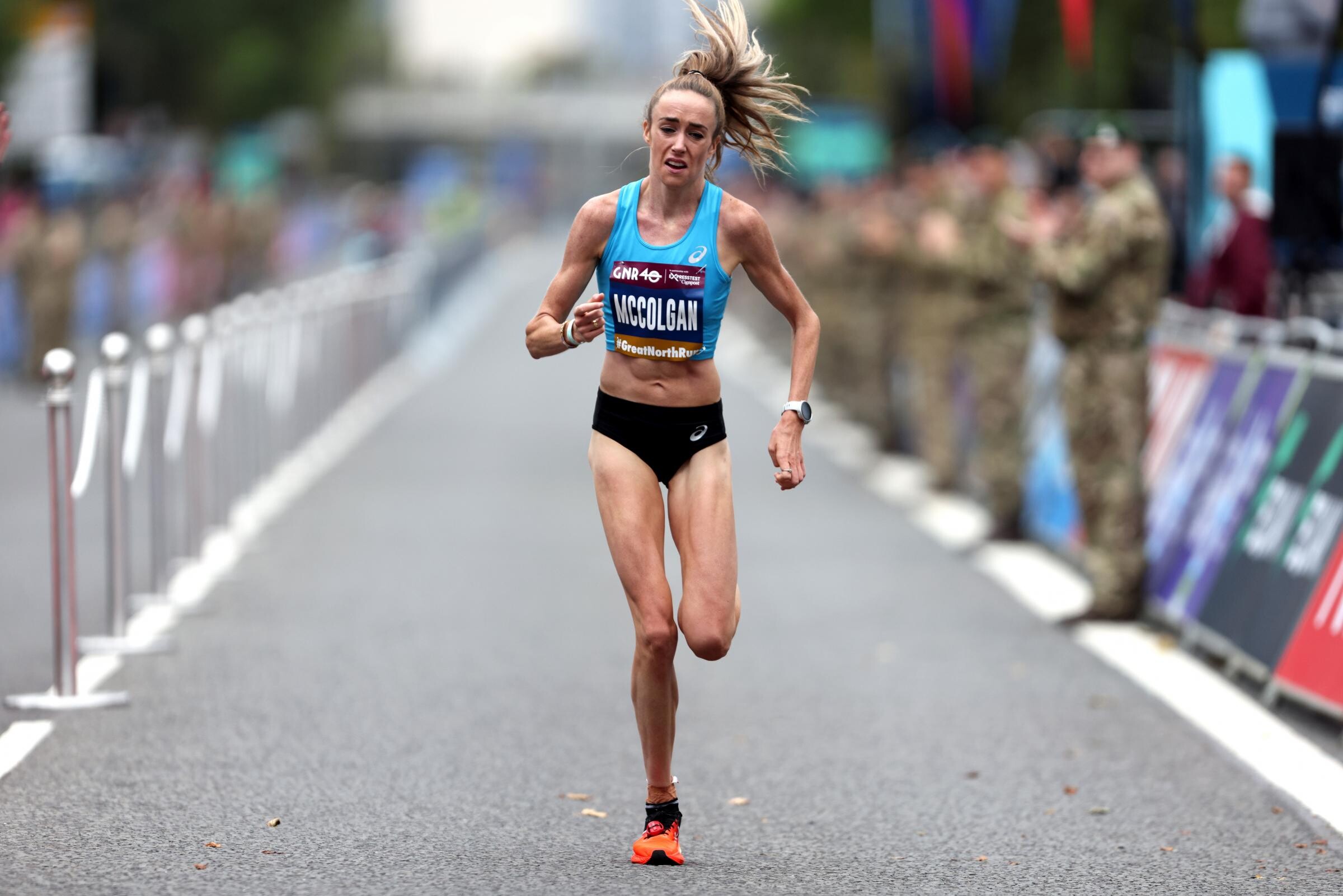
Since McColgan started competing on the roads she has broken the British 5km record, European 10km record and set a British best over 10 miles.
Given her natural progression through the longer distances on both track and field, it was always a question of not if but when McColgan took on 26.2 miles.

“It’s really just coming from a confidence side of things,” McColgan says. “I think I’ve known for like a very long time that this is where my career would go. I think my mum and my dad have known even longer than I have. From being a young kid they always said the marathon was the event I’d end up going to.
“The way I’ve progressed over the years now through the distances, taking on both the 5km and 10km, I remember thinking, ‘I’ll never ever run a half-marathon’. And yet now, I’m excited. I couldn’t wait to get out and race it against some of those the top athletes in the world.
“It is my choice. I feel I’m going to do it when I’m ready to do it and I think that’s that time is coming now. I think there’s no better place to do that than the London Marathon.
McColgan takes to the streets of the British capital 26 years after her mum, Liz McColgan won the race. Like Eilish, Liz started out on the track and gradually progressed to the marathon, winning on her debut in New York in 1991 before her triumph in London five years later.
“It’s amazing and it’s a bit surreal,” McColgan adds. “The more iconic images I’ve got in my head as a youngster were my mum running the London Marathon with Buckingham Palace in the background. It’s just incredible that so many years later I’m following in her footsteps and I think she’s excited to see that finally come into action.
“It’s always the iconic event. It was the one where I always watched my mum run as a kid when I sat in the hospitality area and ate all the free food! There’s not a London Marathon that my mum and dad have ever missed. It’s just got a buzz and everyone speaks about it, even those who don’t know much about athletics.”
Although this is McColgan’s debut marathon she does have experience of the London circuit though, having been the pacemaker for Charlotte Purdue last year.
Purdue is also part of the line-up this year which includes world marathon record-holder Brigid Kosgei, defending champion and fellow Kenyan Joyciline Jepkosgei and the fastest-ever female marathon debutante Yalemzerf Yehualaw of Ethiopia.
“It just feels surreal to me [to hear that],” McColgan adds. “I remember watching Paula [Radcliffe] on the side of the road in Athens and being as devastated as she was. I watched her run the world record in 2003 and it was strange watching it because, given her pace, it was like watching a robot. You thought there was no way somebody could keep it up for 26.2 miles.
“Out of all the records she set this is by far the one the hardest she set. It’s difficult for me to believe that’s it’s almost possible but if you asked me two years ago would I run 30 minutes for 10km, I’d have told you no chance but now I believe I can break that record.”
McColgan also has a busy summer on the track as she races over both 5000m and 10,000m at the World Championships in Oregon before representing Scotland at the Commonwealth Games in Birmingham.
Ahead of Paris 2024, she wants to focus on the marathon and compete in more road races in the near future.
by Tim Adams
Login to leave a comment
TCS London Marathon
The London Marathon was first run on March 29, 1981 and has been held in the spring of every year since 2010. It is sponsored by Virgin Money and was founded by the former Olympic champion and journalist Chris Brasher and Welsh athlete John Disley. It is organized by Hugh Brasher (son of Chris) as Race Director and Nick Bitel...
more...What Are therapeutic use exemptions and Why Are They Controversial?
Athletes such as Molly Seidel, who was recently diagnosed with ADHD and prescribed Adderall, must receive exemptions from doping agencies in order to use medications that are banned.
Olympic bronze medalist Molly Seidel announced on Instagram on June 8 that she’d be missing the New York Mini 10K last weekend. The reason? She’d been diagnosed with ADHD early in 2022, and after the Boston Marathon, she started taking the prescription drug Adderall.

Adderall is banned by the World Anti-Doping Agency (WADA) for use in competition, because it can be used as a performance enhancer. But Seidel has a legitimate medical need for the drug, so she can apply for a therapeutic use exemption, commonly known as a TUE.
Seidel wrote on Instagram that she applied for a TUE about six weeks ago, and she won’t have an answer on her application until the end of June at the earliest.
Since she started taking Adderall, she had been feeling much better. “I felt like I was able to get the quiet, functioning brain in my day-to-day life that I could previously only achieve with intense physical activity,” she wrote. “It also gave me remission of many eating disorders behaviors that I’ve dealt with consistently since my teens.”
She was disappointed to pull out of the New York Mini 10K. Seidel wrote, especially after she has had a tough few months. (She dropped out of the Boston Marathon in April with a hip impingement at about the 16-mile mark.)
“However, I’m committed to a clean sport and respecting my own mental health needs, so that means following the appropriate procedures of this TUE process,” she wrote. “Mental health takes work, and I want to be transparent about the fact that medication is sometimes a very necessary part of that work.”
Seidel is due to run the World Championships marathon in Eugene on July 18.
Her case illustrates a years-long debate among athletes, coaches, and officials about TUEs. At issue: How can the sport allow its athletes to legally obtain treatment for diagnosed medical conditions while preventing others from abusing the system?
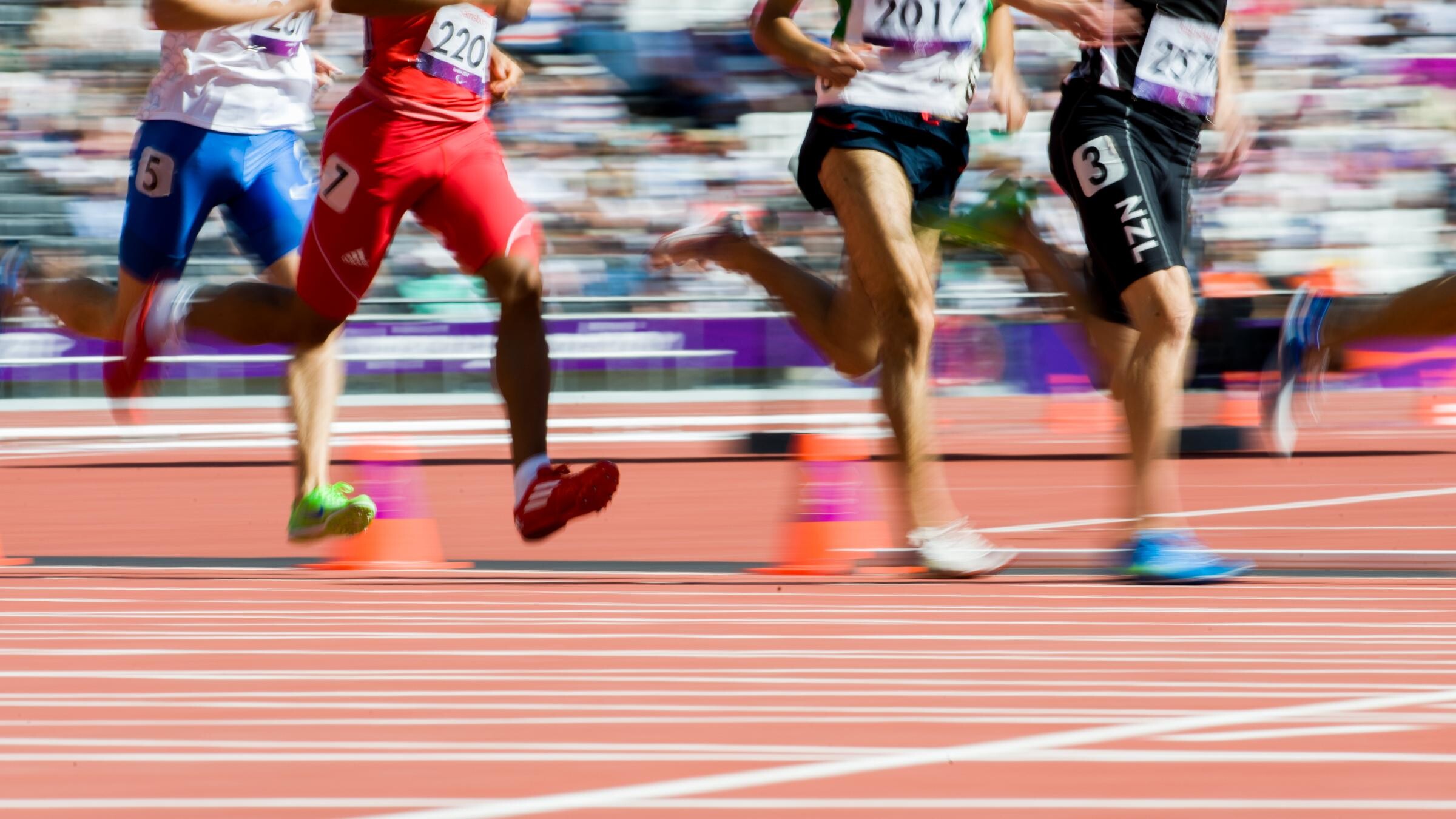
Below, we answer a few common questions about TUEs.
What is a therapeutic use exemption (TUE)?
When an athlete is sick or has a condition that requires treatment with medicine that is listed on WADA’s prohibited substance list, he or she can be granted a TUE to take the drug, according to the U.S. Anti-Doping Agency (USADA).
Some drugs are prohibited when an athlete is competing. Other drugs are also banned for out-of-competition use. If a TUE is approved, it usually has a starting and ending date during which the athlete may take the medication. If the athlete is drug tested during that period and tests positive for an illegal substance for which they are granted an exemption, he or she will not face disciplinary measures.
In an emergency situation, if somebody is treated with a prohibited substance, he or she is allowed to file an emergency TUE afterward, as soon as possible. For example, when Shalane Flanagan received an IV for severe dehydration in February after the 2016 Olympic Marathon Trials, which is otherwise a banned practice, she was granted an exemption because she was in medical need.
“I resisted getting an IV but a lot of the doctors there were insisting that I needed it,” Flanagan said, weeks after the race. “It would have taken a really long time to get those fluids in orally. So the IV really speeded up my recovery. It actually made me realize probably why they are illegal [in competition] under most circumstances—my core temperature immediately went down. If I hadn’t had that, I would have had a much longer process.”
How does an athlete get a TUE?
U.S. athletes apply for a TUE through USADA, though if somebody is also competing at an international event, it may require that person to obtain another exemption through World Athletics, the governing body for track and field.
“The TUE application process is thorough and designed to balance the need to provide athletes access to critical medication while protecting the rights of clean athletes to compete on a level playing field,” according to USADA.
If a pro runner is in need of a TUE, he or she downloads the application and completes it with a doctor. A medical file must accompany the application.
Who decides if the athlete gets a TUE?
The Therapeutic Use Exemption Committee reviews the application, the medical details, the patient history, test results, how the condition has been managed over time, and attempts to treat it with non-prohibited medications and methods. Galen Rupp, for example, has been granted exemptions to take prednisone to treat asthma.
The committee includes doctors and medical experts, according to USADA. They review and either approve or deny the application without knowing the athlete’s name by following WADA’s standards, outlined in an annual 30-page document.
WADA policy states that athlete must prove that the prohibited substance is needed to treat an acute or chronic medical condition, “such that the athlete would experience a significant impairment to health” if it is withheld; that the medication is highly unlikely to produce any enhancement of performance beyond what would be considered “anticipated” by a return to the individual’s normal health; and that there is no reasonable alternative to treat the condition.
What is on the WADA prohibited substance list?
The prohibited list includes more than 300 substances and methods of taking substances (for example, orally, by injection, intravenously). It also includes those that are always prohibited and those that are only prohibited during a competition. The lists are updated by WADA each year, and it’s up to the athletes to be aware of changes of the rules.
Some examples of prohibited substances include steroids, human growth hormone, certain stimulants, diuretics, and masking agents that can interfere with drug tests.
How could an athlete use TUE system or prescription drugs to cheat?
Athletes at the highest level are constantly searching for fractions of percentages in performance gain. Some, of course, seek such gains illegally. Should that athlete have a support team of coaches and doctors who also engage in unethical practices, they can collectively seek exemptions for medications that are not medically needed but could produce a competitive advantage.
In July 2015, Rupp and his coach Alberto Salazar were accused by former members of the Oregon Project of manipulating the TUE system for performance gain and faking symptoms in an effort to be prescribed legal thyroid medications. Those medications could help with a runner’s energy levels, allowing an athlete to train with more intensity and volume. Rupp and Salazar have strongly denied those accusations. Salazar has since received a four-year ban for trafficking performance-enhancing drugs to his athletes and in a separate matter, he has been banned permanently from track by SafeSport.
by Runner’s World
Login to leave a comment
Nick Butter becomes the fastest man to run around the coast of Britain
Endurance runner Nick Butter has completed his challenge of 200 marathons around the coast of Great Britain. Butter ran 5,240 miles (8,432km), crossing the finish line on Sunday at the Eden Project Botanical Gardens in Cornwall after 128 days of running. Butter has officially become the fastest person to run around the entire coast of Great Britain.
Butter attempted to run 200 marathons in 100 days, but his challenge was delayed due to injuries that arose during the early stages. Butter had to alter his pace from by just doing single marathons each day, and he still achieved the record 28 days over his projected time.
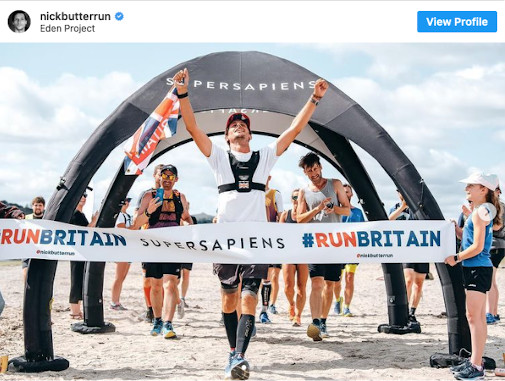
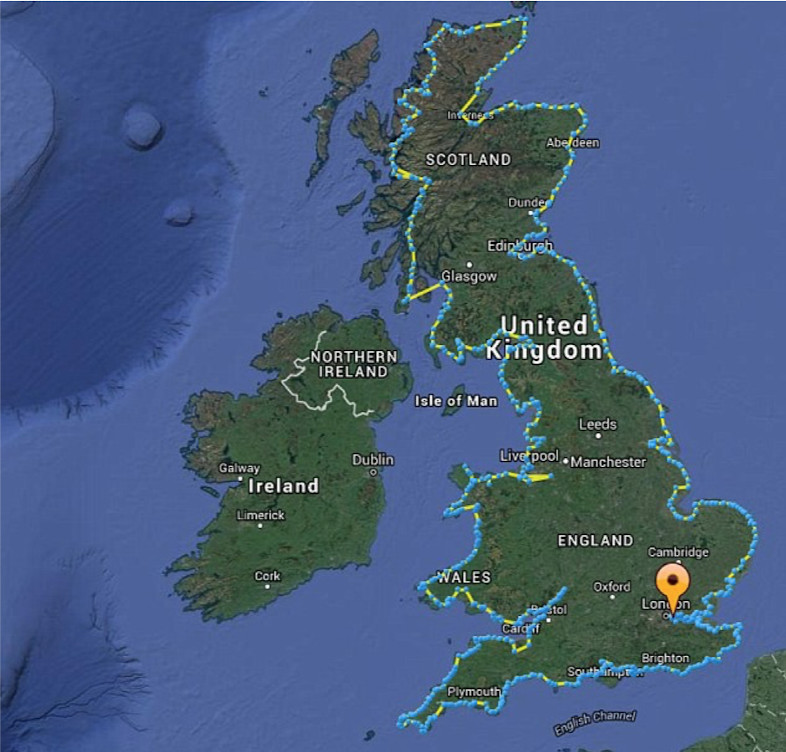
Many Britons have done the trek from Land’s End in Cornwall to Scotland’s John o’ Groats, but Butter is the first man to physically run around Great Britain in 150 days or less. Englishman Wayne Russell did the same trek as Butter in 2016, but his trek took more than twice as long.
Butter has completed huge running projects before, including his Run the World challenge that saw him run a marathon in every country, but this challenge was altogether different. His battle against time forced him to cover 66 km each day.
Butter’s challenge has been raising money for the 196 Foundation, which aims to provide aid to every corner of the world by creating a long-term commitment to help one cause per year.
by Running Magazine
Login to leave a comment
American Record Alert: Emily Sisson Targeting Molly Huddle’s 67:25 AR at Sunday’s Valencia Half Marathon
At times, the 2020 track & field season has felt like one giant record chase. With the vast majority of major championships cancelled, athletes have shifted their targets from medals to times. And with the ability to focus on one race with the sole goal of running as fast as possible, records have tumbled around the globe. Uganda’s Joshua Cheptegei took down Kenenisa Bekele‘s 16-year-old 5,000-meter world record in August. In the span of one hour in October, Letesenbet Gidey broke Tirunesh Dibaba‘s 5,000-meter world record and Cheptegei fully erased Bekele from the outdoor record books by breaking his 10,000m mark. Domestically, Shelby Houlihan chopped over 10 seconds off her American 5,000-meter record back in July, taking it down to 14:23.92.
The latest installment of the Great Record Chase of 2020 comes on Sunday in Valencia, where distance studs Rhonex Kipruto, Jacob Kiplimo, and Gidey will have the half marathon world records in their sights. Just a few minutes back, Emily Sisson — one of the few Americans making the trip to Spain (Jordan Hasay is also entered in the marathon) — will be shooting for a mark of her own: the 67:25 American half marathon record, currently held by her friend and occasional training partner Molly Huddle.
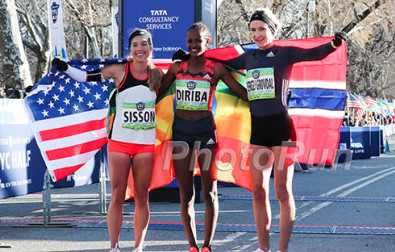
says Ray Treacy, who coaches both Sisson and Huddle. “That’s the goal and see how she feels the last 5k…We’re just hoping for the best and she gets her reward for all the hard work she’s done over the last four or five months, because this is her only race.”
Sisson hasn’t raced since dropping out of the US Olympic Marathon Trials in February, though she did run the virtual New York City Marathon in 2:38:00 in October (Treacy says the aim was merely to get in a good long run effort, adding that it felt “easy” for Sisson and that she recovered “immediately”). Considering her goal is to make the Olympic team at 10,000 meters next year, Treacy did not want Sisson to run another marathon this fall, making the half marathon a natural distance for a target race. And with USATF opting not to send a team to the World Half Marathon Championships, Valencia was the best option.
Treacy says Sisson’s fitness is “really, really good” at the moment, with the 29-year-old clocking 24:37 recently for a five-mile time trial and averaging 5:05 pace for a 4 x 2-mile workout — well under American record pace (AR paceis 5:09). Currently, Sisson sits #2 on the all-time US list thanks to her 67:30 in Houston last year.
There are a couple of potential stumbling blocks, however. First, Sisson may not have any company during the race. The top women will be aiming to run the world record (64:31) or close to it, which is beyond Sisson’s abilities. Though there are two other women — Kenyans Brenda Jepleting (67:07) and Sheila Chepkirui (67:37) — with personal bests close to Sisson, it’s unclear whether they’ll try to run with her or opt for the more aggressive pace up front.
Treacy believes Sisson should be able to handle that situation just fine, though. She was alone for most of the second half of her marathon debut in London in 2019 and came out with a stellar 2:23:08 personal best.
“She’s pretty good at doing that anyway, so I’m not worried about it,” Treacy says.
The larger concern is the weather. The high of 58 degrees in Valencia on Sunday is fine, but the projected winds of 15 to 25 miles per hour could prove problematic.
While Sisson still has several years of her prime remaining, record opportunities like this are precious. Under Treacy, Huddle only raced one half marathon per year from 2015 to 2020, and three of those came on a relatively tough course in New York. Even when Huddle did finally set the record in Houston in 2018, she wasn’t 100% as she had gotten sick a few days earlier.
“[Huddle] never had the opportunity to run really, really fast,” Treacy says. “Certainly when Molly was in the shape she was in Rio, (where she ran an American 10,000m record of 30:13 at the 2016 Olympics), I think she could have run 66:30, 66:40.”
Sisson will get her shot on Sunday. Can she give the Great Record Chase of 2020 a fitting send-off?
by Let’s Run
Login to leave a comment
Emily Sisson will be targeting Molly Huddle’s 67:25 AR at Sunday’s Valencia Half Marathon
At times, the 2020 track & field season has felt like one giant record chase. With the vast majority of major championships cancelled, athletes have shifted their targets from medals to times. And with the ability to focus on one race with the sole goal of running as fast as possible, records have tumbled around the globe. Uganda’s Joshua Cheptegei took down Kenenisa Bekele‘s 16-year-old 5,000-meter world record in August. In the span of one hour in October, Letesenbet Gidey broke Tirunesh Dibaba‘s 5,000-meter world record and Cheptegei fully erased Bekele from the outdoor record books by breaking his 10,000m mark. Domestically, Shelby Houlihan chopped over 10 seconds off her American 5,000-meter record back in July, taking it down to 14:23.92.
The latest installment of the Great Record Chase of 2020 comes on Sunday in Valencia, where distance studs Rhonex Kipruto, Jacob Kiplimo, and Gidey will have the half marathon world records in their sights. Just a few minutes back, Emily Sisson — one of the few Americans making the trip to Spain (Jordan Hasay is also entered in the marathon) — will be shooting for a mark of her own: the 67:25 American half marathon record, currently held by her friend and occasional training partner Molly Huddle.
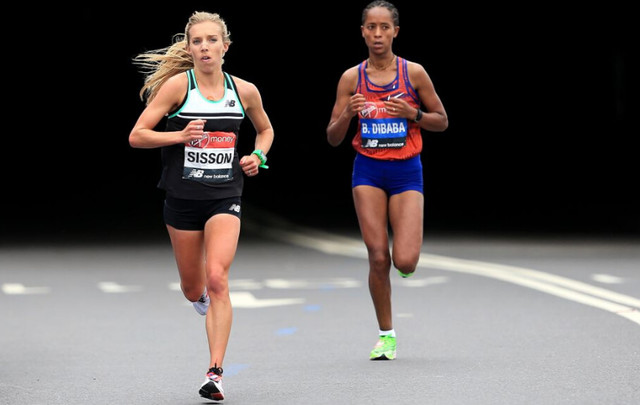
says Ray Treacy, who coaches both Sisson and Huddle. “That’s the goal and see how she feels the last 5k…We’re just hoping for the best and she gets her reward for all the hard work she’s done over the last four or five months, because this is her only race.”

Sisson hasn’t raced since dropping out of the US Olympic Marathon Trials in February, though she did run the virtual New York City Marathon in 2:38:00 in October (Treacy says the aim was merely to get in a good long run effort, adding that it felt “easy” for Sisson and that she recovered “immediately”). Considering her goal is to make the Olympic team at 10,000 meters next year, Treacy did not want Sisson to run another marathon this fall, making the half marathon a natural distance for a target race. And with USATF opting not to send a team to the World Half Marathon Championships, Valencia was the best option.
Treacy says Sisson’s fitness is “really, really good” at the moment, with the 29-year-old clocking 24:37 recently for a five-mile time trial and averaging 5:05 pace for a 4 x 2-mile workout — well under American record pace (AR paceis 5:09). Currently, Sisson sits #2 on the all-time US list thanks to her 67:30 in Houston last year.
There are a couple of potential stumbling blocks, however. First, Sisson may not have any company during the race. The top women will be aiming to run the world record (64:31) or close to it, which is beyond Sisson’s abilities. Though there are two other women — Kenyans Brenda Jepleting (67:07) and Sheila Chepkirui (67:37) — with personal bests close to Sisson, it’s unclear whether they’ll try to run with her or opt for the more aggressive pace up front.
Treacy believes Sisson should be able to handle that situation just fine, though. She was alone for most of the second half of her marathon debut in London in 2019 and came out with a stellar 2:23:08 personal best.
“She’s pretty good at doing that anyway, so I’m not worried about it,” Treacy says.
The larger concern is the weather. The high of 58 degrees in Valencia on Sunday is fine, but the projected winds of 15 to 25 miles per hour could prove problematic.
While Sisson still has several years of her prime remaining, record opportunities like this are precious. Under Treacy, Huddle only raced one half marathon per year from 2015 to 2020, and three of those came on a relatively tough course in New York. Even when Huddle did finally set the record in Houston in 2018, she wasn’t 100% as she had gotten sick a few days earlier.
“[Huddle] never had the opportunity to run really, really fast,” Treacy says. “Certainly when Molly was in the shape she was in Rio, (where she ran an American 10,000m record of 30:13 at the 2016 Olympics), I think she could have run 66:30, 66:40.”
by Jonathan Gault
Login to leave a comment
Valencia Half Marathon
The Trinidad Alfonso Valencia Half Marathon has become one of the top running events in the world. Valencia is one of the fastest half marathon in the world. The race, organized by SD Correcaminos Athletics Club, celebrated its silver anniversary in style with record participation, record crowd numbers, Silver label IAAF accreditation and an atmosphere that you will not find...
more...RUN THE WORLD: ASICS WORLD EKIDEN 2020 TAKES VIRTUAL RACING TO A WHOLE NEW LEVEL
ASICS Australia have announced the inaugural ASICS World Ekiden 2020: the ultimate team challenge that will see teams of up to six people from all over the world come together to complete a combined marathon. Inspired by a century of Japanese running culture, the race will be split into six legs of varying distances, making it perfect for runners of all abilities and experience.
Bringing people together when they’re apart

The launch of the ASICS World Ekiden 2020 comes in direct response to the findings of ASICS’ ongoing global research into the ever-changing needs of runners and sports fans the world over. The research, which kicked off immediately after the pandemic began, reveals that 42% of people who exercise regularly are finding it difficult to stay motivated as they don’t have a goal to work towards at the moment.
Meanwhile, three in four (74% globally) of team sport players say sport or exercise is more enjoyable when played with friends and teammates and two thirds (67% globally) admit to missing the chance to compete with others. Half (50% globally) even claim their mental wellbeing has been negatively impacted by being disconnected from teammates.
Through the ASICS World Ekiden 2020, ASICS therefore aims to help people renew their connections with each other, enjoy the mental and physical benefits of team competition and re-energise their collective love of sport and exercise with a shared goal.
Yasuhito Hirota, President & Chief Operating Officer, ASICS, said: “It may be inspired by one of Japan’s most famous race formats, but the ASICS World Ekiden 2020 really is an event like no other.”
To help teams prepare to give their very best in the event, ASICS is offering them free access to a variety of products and services in the run-up to race day, including training, coaching and expert tips. To celebrate the achievement of everyone who takes part, all teams who complete the race will be automatically entered for a chance to win one of 10 prize packs, including running shoes, shorts, t-shirt and socks.
Yasuhito Hirota added: “At ASICS, listening to runners of all levels and understanding their evolving needs is at the heart of everything we do. Right now, that means helping bring back the mental, physical and social benefits that come with team sport. But as life continues to change in future, we’ll keep on innovating new products, services and events that deliver the experiences people want.”
Anyone can Ekiden – so the ASICS World Ekiden 2020 is open to all, with distances that attract all levels of runner. To take part, people simply sign up for free, using Runkeeper or the ASICS hub. Teams must complete their relay race between 11th and 22nd November 2020. Expert advice and training plans are available on Runkeeper and the latest news and information about ASICS World Ekiden 2020 is available via #ASICSWorldEkiden or www.asics.com.
by Runner Stribe
Login to leave a comment
The Ascension Seton Austin Marathon presented by Under Armour is making final preparations for one of the largest event weekends in its 29 years
Austin Marathon Prepares for One of the Largest Event Weekends in its 29-Year History. Highlights of this world-class event include four events for participants of all speed and abilities, two Guinness World Record attempts, and one 3-block-long finish line festival. The return of the FloSports live broadcast will highlight the elite field competition and showcase runners in their final tune-up before the 2020 Olympic Marathon Trials.
More than 16,000 runners from all 50 states and 35 countries will run Austin’s streets. The 29th annual Austin Marathon, owned and produced by High Five Events, will take place on February 16, 2020.
“It’s amazing to see the growth of the Austin Marathon and I’m proud that the city of Austin continues to embrace and support Austin Marathon weekend,” said Leo Manzano, Olympic silver medalist and Austin Marathon Race Ambassador. “Everyone loves Austin Marathon weekend, from runners who travel from around the world to Austin families who complete the Manzano Mile together.”
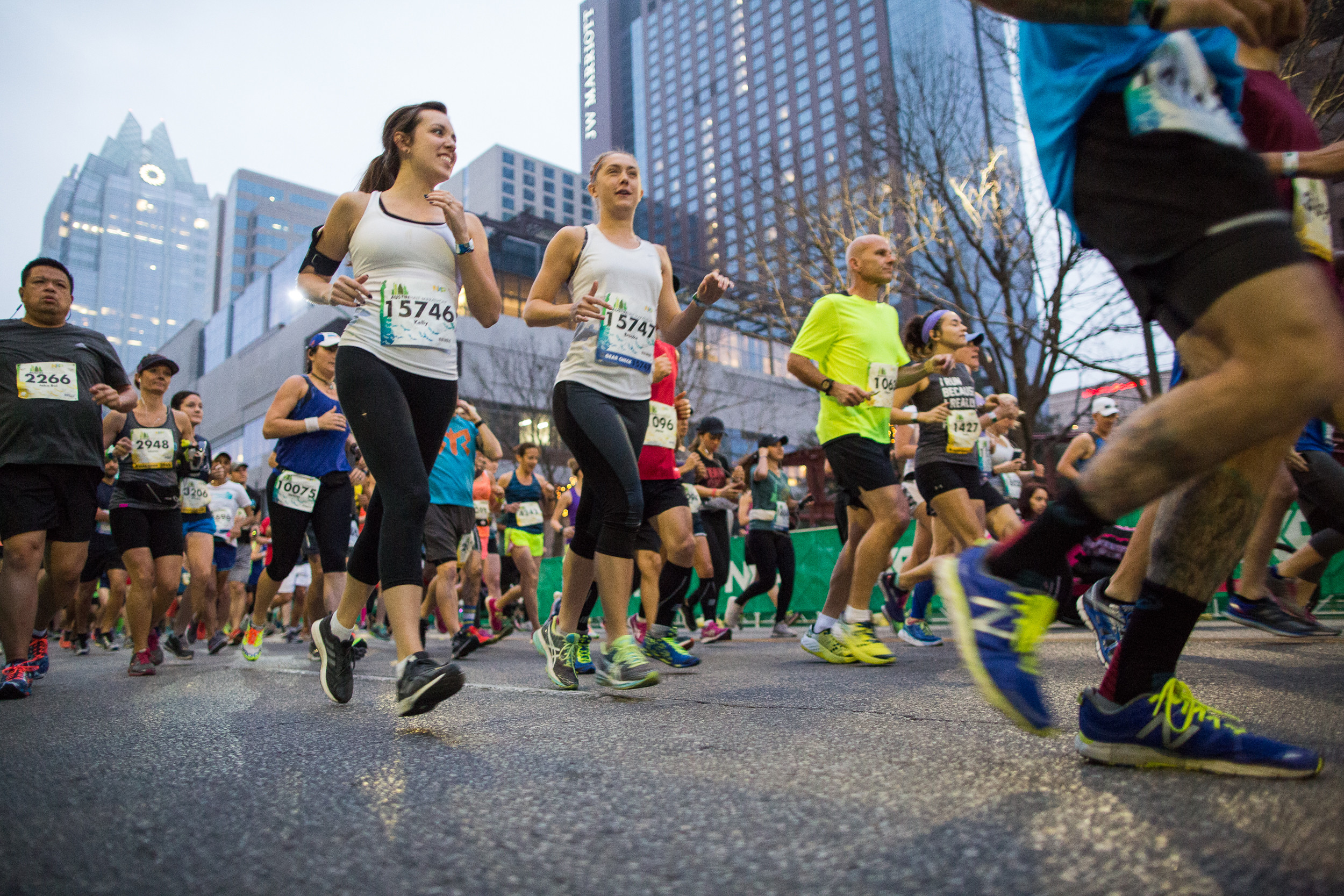
Fleet Feet Austin will kick off Austin Marathon weekend by hosting the Austin Marathon Shakeout Run on Friday, Feb. 14th. At the Austin Marathon Health and Fitness Expo, participants can test the industry’s latest products and chat with the Austin Marathon Pacers. They can also purchase Official Under Armour + Austin Marathon gear at the Fleet Feet Store, including the limited-edition Austin UA HOVR Machina. The two-day Austin Marathon expo will take place on Friday, Feb. 14th, and Saturday, Feb. 15th. Children, families, and elites will participate in the Manzano Mile presented by Dole Packaged Foods on Saturday, Feb. 15th. The family-friendly Austin Marathon KXAN Simple Health 5K will begin at 7:45 a.m. on Sunday, Feb. 16th, 45 minutes after the Austin Marathon and Austin Half Marathon. Registration is still open.
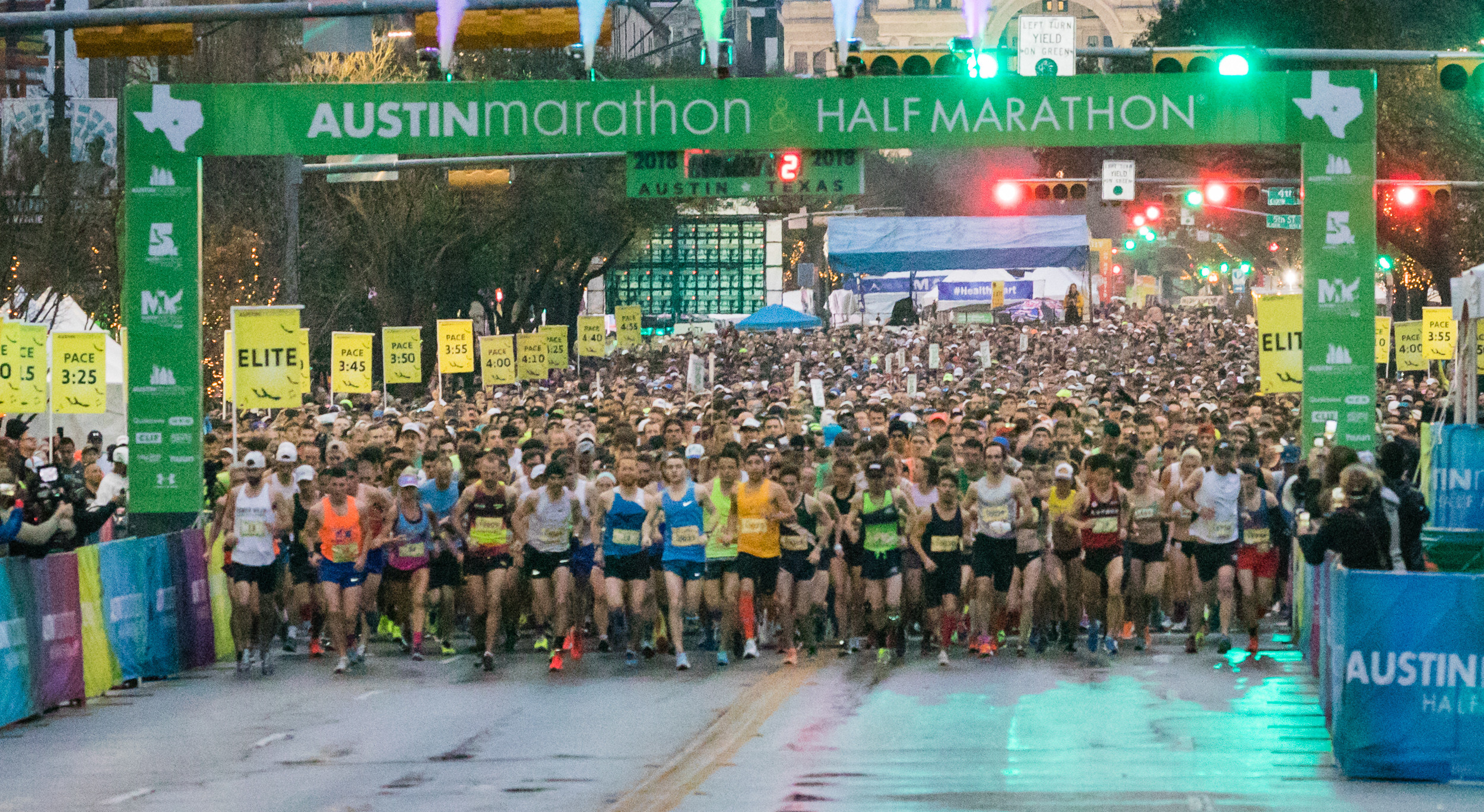
The first world-record attempt is by Drake Muyinza. He will attempt to run the world’s longest fashion runway by running 26.2 miles and changing outfits every four miles. The current record is two miles. The second world-record attempt is by Vicar David Peters. He will attempt to run the fastest marathon in a cassock, beating four hours and 16 minutes. Both Guinness World Record applications are still pending. The 2020 course was designed to provide a better participant and spectator experience and allow enhanced traffic flow along the course. Participants will still finish with the picturesque Texas State Capitol as their backdrop. Tens of thousands of spectators will cheer along Austin streets. Race-course highlights include two GU Energy Labs Energy Zones, live music, and 22 aid stations with nuun performance.
Login to leave a comment
Austin Marathon Weekend
The premier running event in the City of Austin annually attracts runners from all 50 states and 20+ countries around the world. With a downtown finish and within proximity of many downtown hotels and restaurants, the Austin Marathon is the perfect running weekend destination. Come run the roads of The Live Music Capital of the World where there's live music...
more...Wounded war hero Luke Wigman is set to run seven marathons, on seven continents for a second time
War hero Luke Wigman will this week run seven marathons, on seven continents in seven days – for a second time.
Elite RAF paratrooper Luke, 33, from Selston, Nottingham, starts the epic race this Thursday in Antarctica as he bids to become the first Brit to ever run the World Marathon Challenge twice.
He scooped a Sun Military Award after completing the epic running challenge in 2017 after suffering horror leg injuries when he stood on a hidden bomb in 2011 in Helmand.
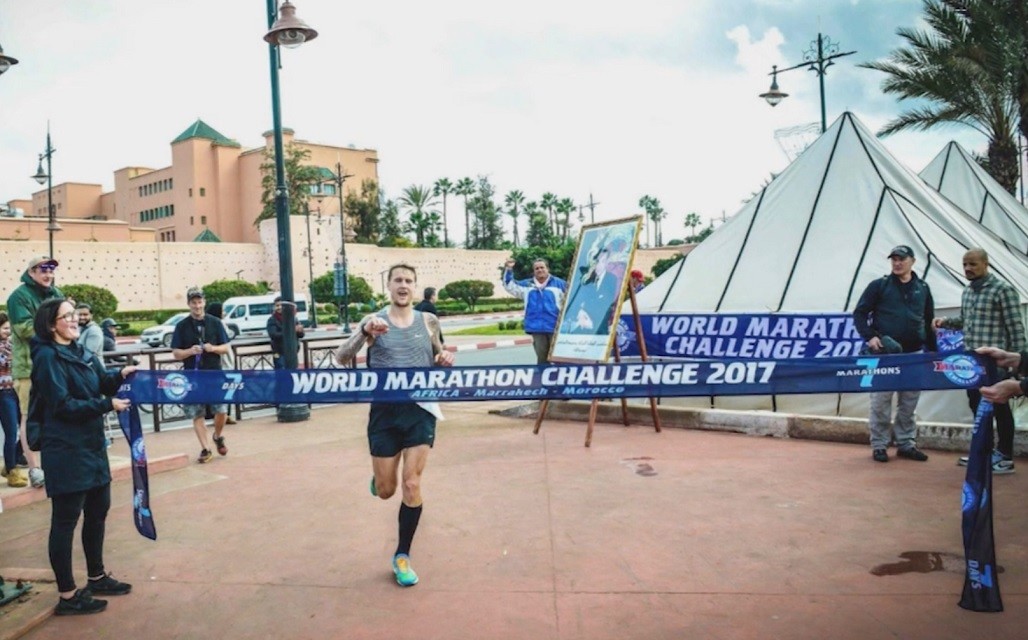
And now he is back to run it again – this time raising funds for the RAF Benevolent Fund – which supported him during his rehabilitation.
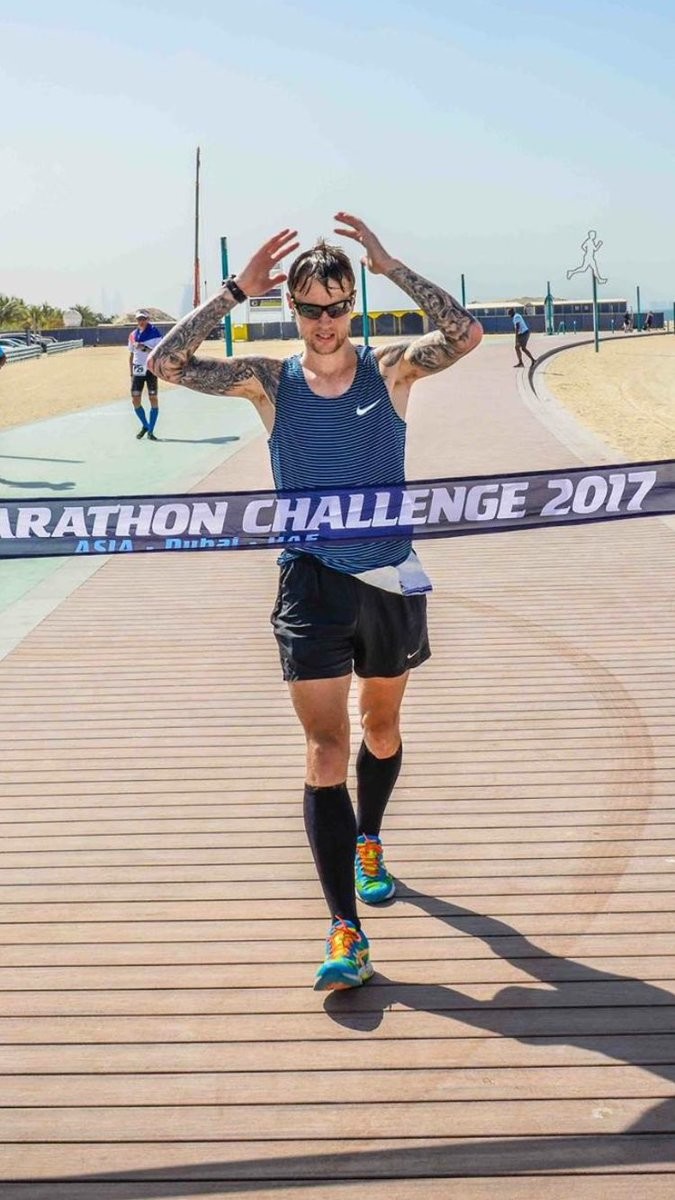
Married Luke, who was a Senior Aircraftsman with the RAF Regiment, revealed he agreed to take on the epic race with just two weeks’ notice.
He said: “My goals are different for this one, I want to survive. I’m not focused on running the best times every single day, I just want to get to the end in one piece.
“When you’re doing this, you don’t know what country you’re in, what time zone, but it’s all irrelevant.
“All you’ve got to remember is you’ve got 168 hours to run 183.4 miles.
“What makes the World Marathon Challenge so hard is the travel, you’re traveling for 60 to 70 hours on a plane, through the week.
“My injury is lower leg, and my blood flow through to the leg is quite bad, so the flying and the traveling is really hard for me.
“I could end up with an elephant leg by the third day just from the flying.
“But if I can get to the end in one piece and shed some light on the RAF Benevolent Fund, then it will be mission accomplished.”
Luke believes the endurance challenge is the toughest of its kind out there, saying: “It’s physically horrendous, it's mentally tiring and it’s a logistical nightmare, but you just need to get to the end.
“I couldn’t let the opportunity pass, the first time was such a success, this time I want to do it for the RAF Benevolent Fund.
“They have had a huge, direct impact, on my life since my injury in 2011.
“If I can replicate what I did three years ago then why not, I’ll do it again.
“This is an opportunity to pay them back, I can only do these incredible challenges because of the rehab I received and the support from the charities along the way.”
In 2017 Luke, who served with the crack Special Forces Support Group, ran consecutive 26.2 mile races in Antarctica, Chile, Miami, Madrid, Marrakech, Dubai and Sydney, in less than a week.
This year the route starts in Antarctica before jetting to Cape Town, South Africa, Perth, Australia, Dubai, Asia, Madrid, Europe, Fortaleza, South America before ending in Miami, North America.
Luke aims to complete the challenge despite his leg being re-built two years ago to repair scar damage caused by the bomb blast.
by David Willetts
Login to leave a comment
World Marathon Challenge
The World Marathon Challenge ® is a logistical and physical challenge to run seven marathons on seven continents in seven days. Competitors must run the standard 42.2 km marathon distance in Antarctica, Africa, Australia, Asia, Europe, South America and North America within 168 hours, or seven days. The clock starts when the first marathon begins in Antarctica. ...
more...Nontuthuko Mgabhi from Richards Bay aims to be the first woman from Africa to run the World Marathon Challenge
A Richards Bay woman is aiming to become the first woman in Africa to run the World Marathon Challenge - seven marathons on seven continents in seven days - in February.
On Suday, a 15km and 5km fun run and walk was held in Bulwer to raise awareness about her attempt and to help raise funds for it.
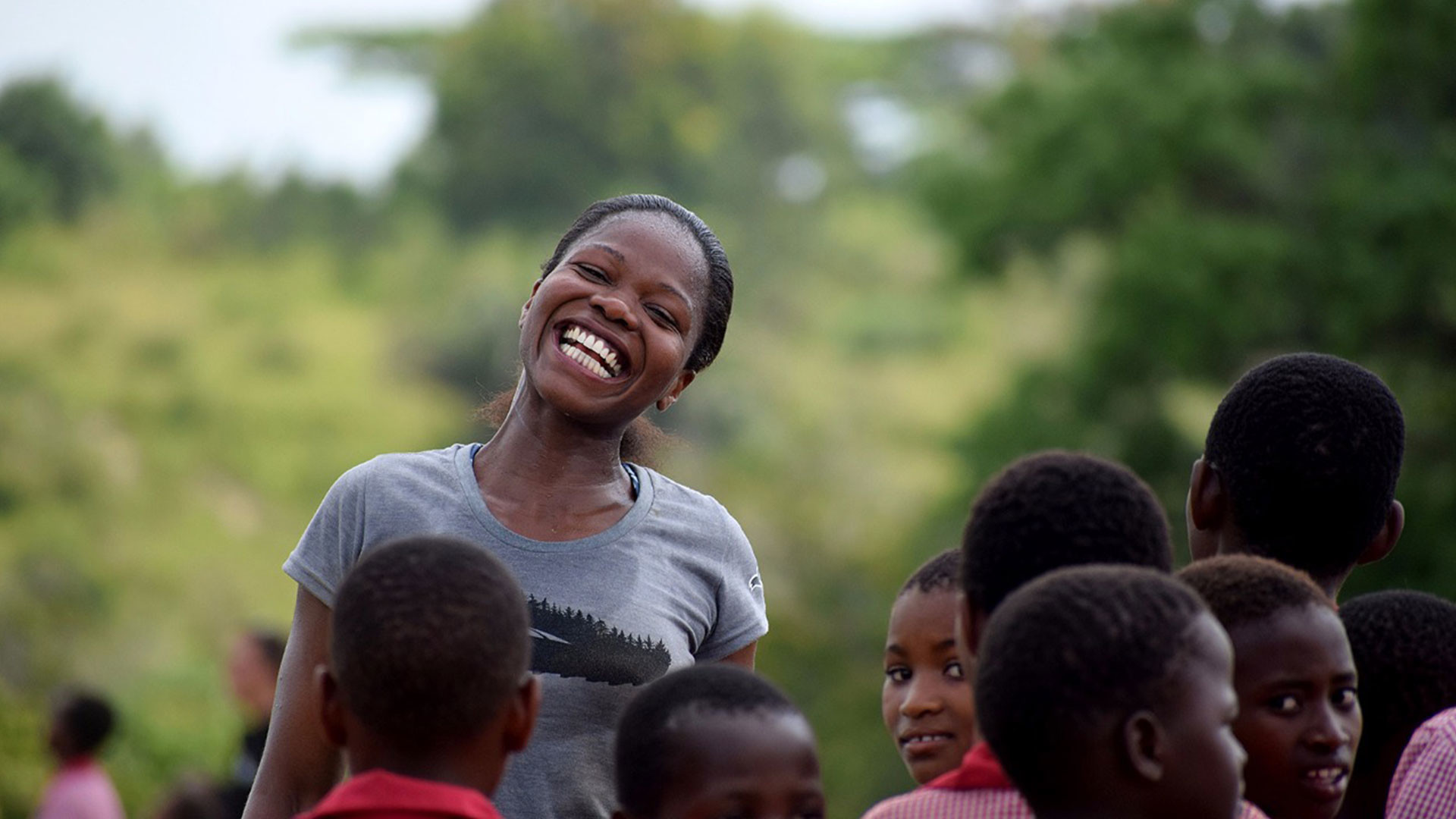
Nontuthuko Mgabhi, 32, will use the challenge to raise R3.5million for Khipinkunzi Primary School in Mtubatuba.
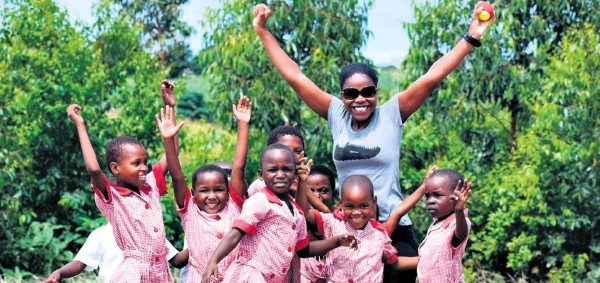
“I wanted to do something special for my birthday and was asked to give a motivational speech at the primary school last year, which has 657 pupils from Grade R to Grade 7. When I arrived at the school, I saw the poor state it was in and wanted to make a difference,” Mgabhi explained.
She is aiming to raise R3.5million to build five classrooms, two administration offices and to revamp the school.
Participating in the World Marathon Challenge means she would have to cover 295km and spend about 68 hours flying. The first marathon is in Antarctica on February 6, the second will be Cape Town on February 7, February 8 is in Perth, February 9 in Dubai, February 10 in Madrid, February 11 in Fortaleza in South America, and finishing in Miami on February 12.
Mgabhi said she started running in 2013, when a friend asked her to participate in the East Coast Radio Big Walk with her.
Ten months later, she participated in the Comrades Marathon and has since completed more than 50 marathons, including four Comrades and 15 ultra marathons.
by Kwazulu-Natal
Login to leave a comment
World Marathon Challenge
The World Marathon Challenge ® is a logistical and physical challenge to run seven marathons on seven continents in seven days. Competitors must run the standard 42.2 km marathon distance in Antarctica, Africa, Australia, Asia, Europe, South America and North America within 168 hours, or seven days. The clock starts when the first marathon begins in Antarctica. ...
more...54-year-old James Kalani from Los Gatos California ran and logged the most miles for Run The World Challenge 6 which started July 3 and finished September 10
Run The World Challenge 6 just ended Tuesday September 10. The ten week challenge attracted many runners and miles were logged in 14 countries.
The idea of the challenge, which was started by lifetime runner Bob Anderson, is to run or walk and then log all your miles on the My Best Runs website. Many participants also posted a photo and comments every day like James Kalani and several others in the Run The World Feed. A total of 11,660 miles were logged during the ten weeks by the team. That is 166 miles daily.
James Kalani finished first with 1329 miles run and logged over the periiod which started July 3, 2019. 35-year-old Eliud Esinyen from Kenya was second with 1181 miles. 74-year-old Frank Bozanich finished 4th with 773 miles and Rosaline Nyawira from Kenya was first woman with 744 miles.
James started running at birth. "My mother says. I have always run. But due to chronic bronchitis and asthma, as well as numerous allergies, I was limited to how long I could run as a juvenile," James says.
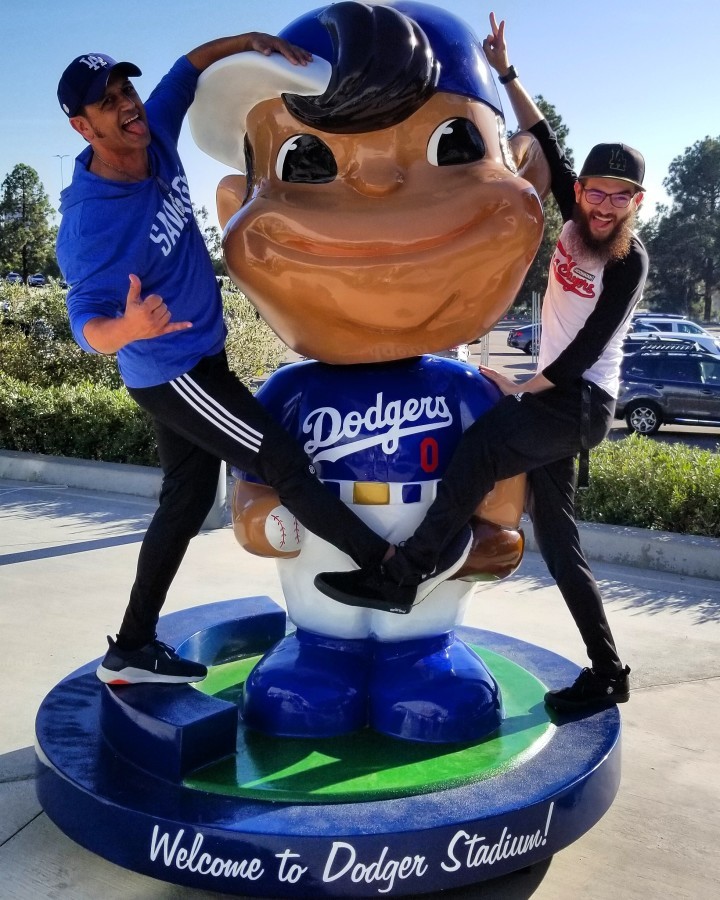
In high school, he would run a sub five minute mile every few days, but couldn't be on the track team because he could not practice daily.
"I started jogging as an adult. When I went back to college as an adult for 15 years, running was a stress relief and a necessity. I would ramp up running from 10 to 20 miles in just a couple of months and would be marathon ready in a few months," James continued.
He ran sub-3 hour marathons at one point.
He has always taken breaks from serious running.
"I do what time, attitude, and my mind and body dictate. I tend to be hard on my body while running. I think I have overcome a lot of those pitfalls however. I know I can't compete and be happy all the time."
"Running makes me happy and to compete takes some joy out of it. I guess that makes me a bit of a soul runner. I just love to run and it's cheaper than therapy."
He set a goal to average 20 miles per day for this challenge. He did not make 20 but was not far from it. So how did he average over 130 miles per week?
"Since I work early morning, I am home in the early afternoons. I regulated my diet (that is a huge part). I literally snack a lot. Making sure I am over 5000 calories per day. I started yoga and meditation as a run ritual before and after as well as foam rolling and icing.
"Then I rest for awhile and then I do a shot of Irish whiskey daily to get my blood sugar back up so I could continue to move after a run.
"I used this challenge to push myself to find my threshold in running, something that competitive running can't do for me.
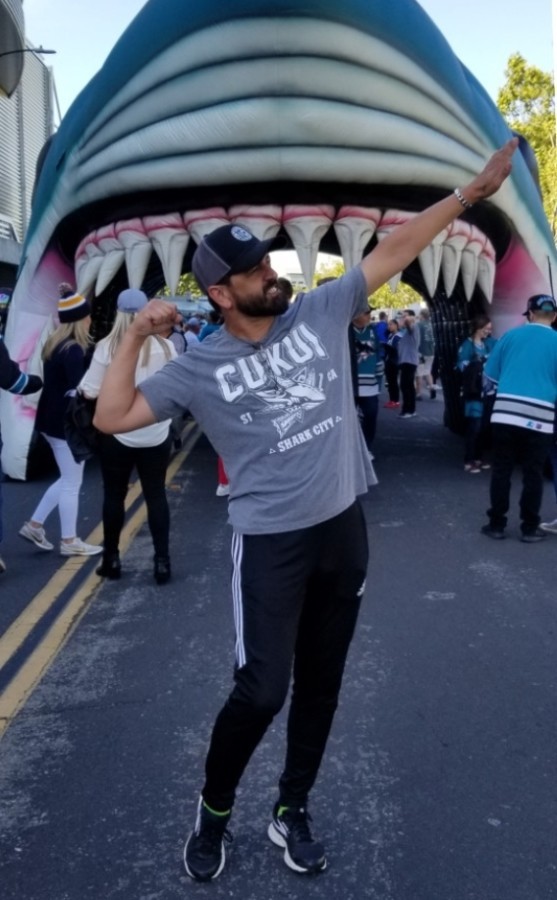
"I now love variations of runs - hills, mountains, trails, and streets. Believe it or not, streets gives me a great chance to not become mesmerized during your run. It makes you keep your head on a swivel...
"Since I have never strayed from athletic activities or running, getting to my peak only takes months. It's all about how much you want something and learning how to listen to your body.
So how did your body hold up? "Mid-challenge, I started to have knee issues related to my IT Band... foam rolling, icing, rest, and changing running style got me through it. I am a firm believer in holistic medicine and this time I tried various things...
"CBD oil GREATLY helped with post-run swelling," he says.
You were running on an average of three hours everyday for 70 days. How did you handle your diet?
"I never stopped snacking. I eat one piece of fruit daily at work, a lot of grains, pasta (pasta 4-5 days per week), spinach... high carbs, relatively low proteins. Not a lot of meat and beans take the place of extra protein. I have found that eating colorful food (not much processed) makes a big difference too.
"Lots of nuts like sunflower, cashews, and almonds. Cheese is also my endurance choice."
So what do you think about this challenge?
"I love this challenge. This challege over the past year filled a hole or "need" in my life. The older I get, the more I like to test what I am capable of. Posting keeps my mind active on the goal. It's fun to turn on the run gps app, start running, snap a few pictures, and remember the run in detail.. doing that helps me recap runs and select the ones I loved to do again with small changes.
"I changed routes so many times living back in Los Gatos because I had been away from here for 23 years. I was like a kid in a candy store.. I was fueled by memories and locations of my youth. I ran 54 miles from San Francisco (Oyster Point) back to Los Gatos.. It is fun to look back on that... my first 50-miler...as well as my first 40 to Gilroy."
So what are your plans?
"I am getting back to races. I am taking on running for charity again, but with a twist. I have been trying to run with an altitude trainer mask so I can breathe through a mask. The better shape I get in I can also regulate my body temperature under a lycra body suit. Yes, a costume. I am using volunteer running to earn funds for childrens and veterans charities. I am also going to go back to training other runners."
On that note, what advice do you have for others?
"Run with a purpose.. run for fun, and run for the sheer joy of it. Regulate your diet.. take in lots of it.. but stay away from big meals. Stay hydrated. Work on breathing. Elevation variations are VERY important for strength and endurance. Mind the cross training (I run with a 20 pound vest a couple days a week). Calisthenics are your friend. Just keep moving, but know when to stretch, ice, and rest. Yoga and meditation helped me immensely.. make it a serious part of your daily routine (maintain flexibility). Never run on the same side of the road...it can lead to knee problems," says James.
James Kalani is one amazing runner.
"Our next ten week RTW challenge starts September 11 and we hope to better the miles we just covered," says Bob Anderson. There is no entry fee and there is no cost to have a My Best Runs account where the miles (k's) are logged.
by Bob Anderson
Login to leave a comment
Run The World Global Challenge
Run The World Global Challenge (My Best Runs Running Log)is a world wide celebration of running. RYW Challenge 14 started Jan 1, 2026 and will go the entire year ending Dec 31, 2026. See how many miles you can log of running and walking. The continuing RTW1 Challenge started July 4, 2018. Participants run or walk and then log in...
more...The Run The World Global 52-week Challenge has finished. The team logged 122,123 miles or 335.5 daily. Michael Wardian was first American and Kenyan's Eliud Esinyen ran the most miles averaging 15.7 miles daily logging 5,738
Run The World Global Challenge is a world-wide celebration of running. The program was started by Bob Anderson one year ago, July 4, 2018. Since that time 281 runners around the world ran or walked and then logged 122,123 miles. This equals 335.5 miles daily or 2,348 miles weekly for 52 weeks which equals 4.9 times around the world.
"One of the key reasons we started this program," says creator Bob Anderson, My Best Runs and Runner's World magazine founder, "was to motivate people, bring together runners from all over and to run miles all over the world."
That all happen. Runners from 20 countries participated, miles were run in 75 countries and it certainly motivated many runners to run more miles than they were running before.
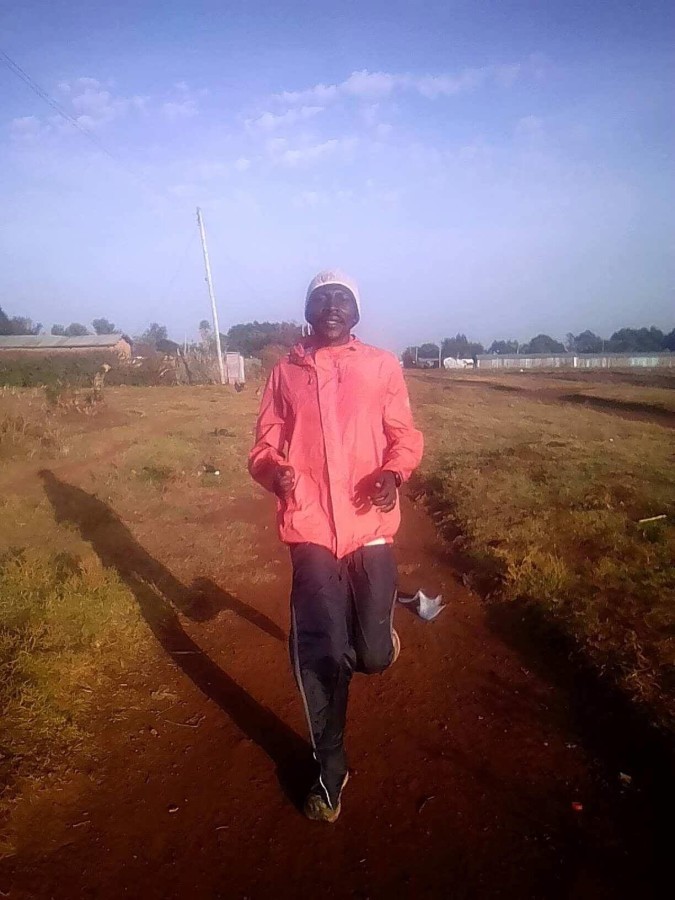
53-year-old James Kalani had not run much over the last few years and then he entered the RTW Challenge. After getting in good shape over several months, he started pushing it for Challenge #5 which started March 31. Over the last 94 days he ran and logged 1536 miles. That's 114 miles weekly. It was not just covering miles, many were quality. On June 16 he ran 30.6 miles at an average pace of 6:41 per mile.
Before the RTW Challenge creator Bob Anderson was running on average 20 miles weekly. "I got so motivated by this challenge," says Bob. "I looked forward to running not just one time daily but often I would run two or three times. I took a photo everyday and posted it in our Runner's Feed. I also read every post and commented on each for the whole year. I have been running since 1962 and have run nearly 1,000 races. I am an addicted runner but I needed something new and this was it."
In the end Bob averaged 5 miles daily or 35 miles weekly for a total of 1830 miles for the year. With the added miles he also improved his racing performance. He ran 7:54 pace for 10k and placed third 70 plus at the London 10,000 in May. A race with nearly 20,000 runners.
The RTW Challenge team did some amazing things during the year. 69-year-old Brent Weigner lives in Cheyenne Wyoming but many of his 2036 miles were run outside of the United States. In fact Brent ran miles in 30 different countries.
The most miles were run and logged in the United States. The top five countries were: United States (64,899 miles), Kenya (24,066 miles), Palau (8,242 miles), India (7,423 miles) and South Africa (6,765). The amazing story here is that the little country of Palau has less that 22,000 inhabitants and placed third. Their team leader Aaron Salvador logged 1,584 miles himself and encouraged his team to run and log.
The team leader for South Africa, Liz Dumon, is the key reason why her country placed fourth. She herself ran and logged 1000 miles. Liz encouraged people to sign up. In fact our youngest members were twins she recruited along with mom and grandma. The 7-year-old twins Jonathan (logged 118 miles) and his sister Michelle (logged 100 miles) had loads of fun and posted regularly in the Runners Feed. Their dogs joined in on the fun too. (Third photo of twins with Grandma)
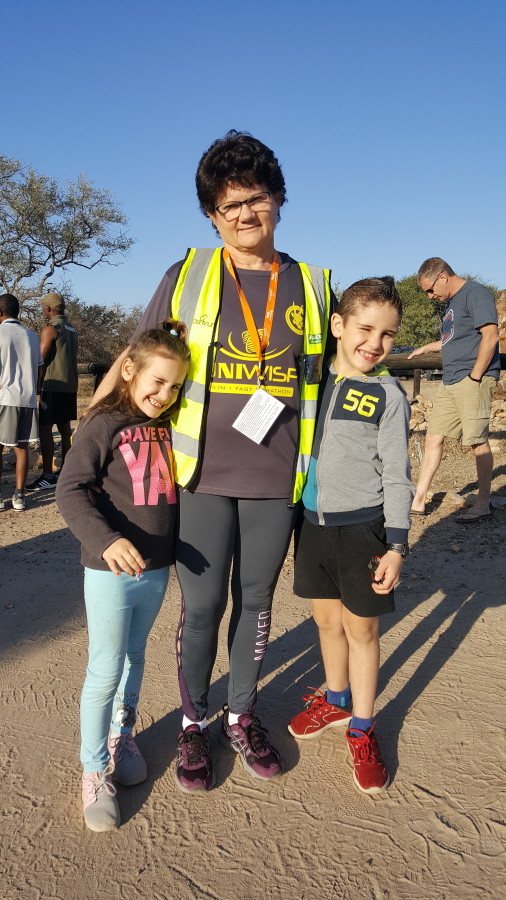
Their 56-year-old grandma (Johanna Fourie) logged 672 miles and placed 10th for females. Right behind her was mom (Erika Fourie) with 625 miles.
Who said age is just a number? The top three overall females were 65 plus. Placing first was 68-year-old Kat Powell (USA). She logged 1271 miles. Not far back was 69-year-old Linda Robinson (USA) with 1145 miles followed by 65-year-old Carmella DiPippa (PW) with 1040 miles. Sixth female was 71-year-old Karen Galati (USA) who logged 835 miles.
On the men's side there were so many stars. 35-year-old Kenyan Eliud Esinyen averaged 15.7 miles daily or 110 miles weekly (second photo). Many times he ran three times daily. On April 21 he ran a marathon on a tough course at high altitude clocking 2:22:46 which is 5:27/mile pace. On January 27 he ran a 10k clocking 31:05. Eliud ran and logged the most with 5,738 miles.
Kenya's team leader Willie Korir (27) placed second overall with 5195 miles. He also posted images regularly in the Runners Feed along with comments. He also wrote several stories for My Best Runs Running News Daily column including finding inside information about the king of the marathon, Eluid Kipchoge.
The first American and third overall was 45-year-old Michael Wardian with 3618 miles (frist photo). This ultra star pulled off many amazing feats during the year. Most recently on June 29 he ran 89.9 miles around Washington DC. On May 4th he ran 62.14 miles at 7:14/mile average pace in Sacramento. He ran the Big Sur Marathon in 2:35:18 making the podium. He had run the Boston Marathon earlier a little faster clocking 2:33:23.
In March he travelled to Israel and posted the fastest known time on the 631-mile Natoinal Israel Trail. He covered this distance in 10 days, 16 hours and 36 minutes. Earlier he not only ran seven marathons on seven continents in seven days (winning them all) he tacked on three more marathons when he got home. That's ten marathons in ten days. He is the complete runner with a wide range. On Feb 10th he ran a 5k in 17:01.
"Michael is one amazing versatile runner and we were happy when he decided to join our team," says Bob Anderson.
Second American and fifth overall was 75-year-old Frank Bozanich who logged 3523 miles. Frank has run many ultra races over the years and have won many. Lots of these miles were not real fast compared to what he has done before. But on July 30th last year he ran 20 miles in Reno in two hours and 43 minutes. That is an 8:09/mile pace.
Finishing in seventh place was 72-year-old Paul Shimon who logged 2835. Like so many of our team, Paul had to deal with a lot of bad weather in Kansas during the winter. But he layered up and got in the miles.
Michael T Anderson (61) placed eighth overall logging 2,798 with lots of fast times along the way. He has run over 130,000 miles in his lifetime so far. On June 8th he ran 19:13 for 5k in Atlanta where he lives. On April 28 he clocked 39:25 for 10k.
"The fastest runner on our team was Joel Maina Mwangi," says Bob Anderson. This 34-year-old Kenyan placed 13th overall with 1,953 miles logged. On March 10 he ran a 30:14 10k in Torino Italy. He ran six half marathons under 1:05. His fastest was run in Aosta, Italy where he clocked 1:02:50 on September 30.
"There are as many amazing stories," says Bob Anderson. "I am glad our event is helping motivate runners all over the world. I am looking forward for year two."
What's next? Run The World Global Challenge #6 will be a 10-week program. There is no entry fee. You just need to have a free My Best Runs (the sponsor of this program) account and sign up for Run The World.
Login to leave a comment
Run The World Global Challenge
Run The World Global Challenge (My Best Runs Running Log)is a world wide celebration of running. RYW Challenge 14 started Jan 1, 2026 and will go the entire year ending Dec 31, 2026. See how many miles you can log of running and walking. The continuing RTW1 Challenge started July 4, 2018. Participants run or walk and then log in...
more...If you can't actually be in New York for the Marathon you can run the world's largest marathon through their Virtual program
Jogging solo in Florida in near 80 degree Fahrenheit heat, Theresa Winterhalter’s New York City Marathon experience last November looked much different to what you would expect from the world’s biggest marathon.
The 54-year-old was one of 424 people to finish the iconic race’s first “virtual marathon”, an event that race organizers are now expanding. The New York City Marathon will welcome unlimited, free enrolment in its virtual marathon this year, aiming to attract thousands of runners from across the globe.

With 52,813 finishers last year, the New York City Marathon is famously popular with amateurs and pros alike, attracting massive interest in its yearly lottery entry.
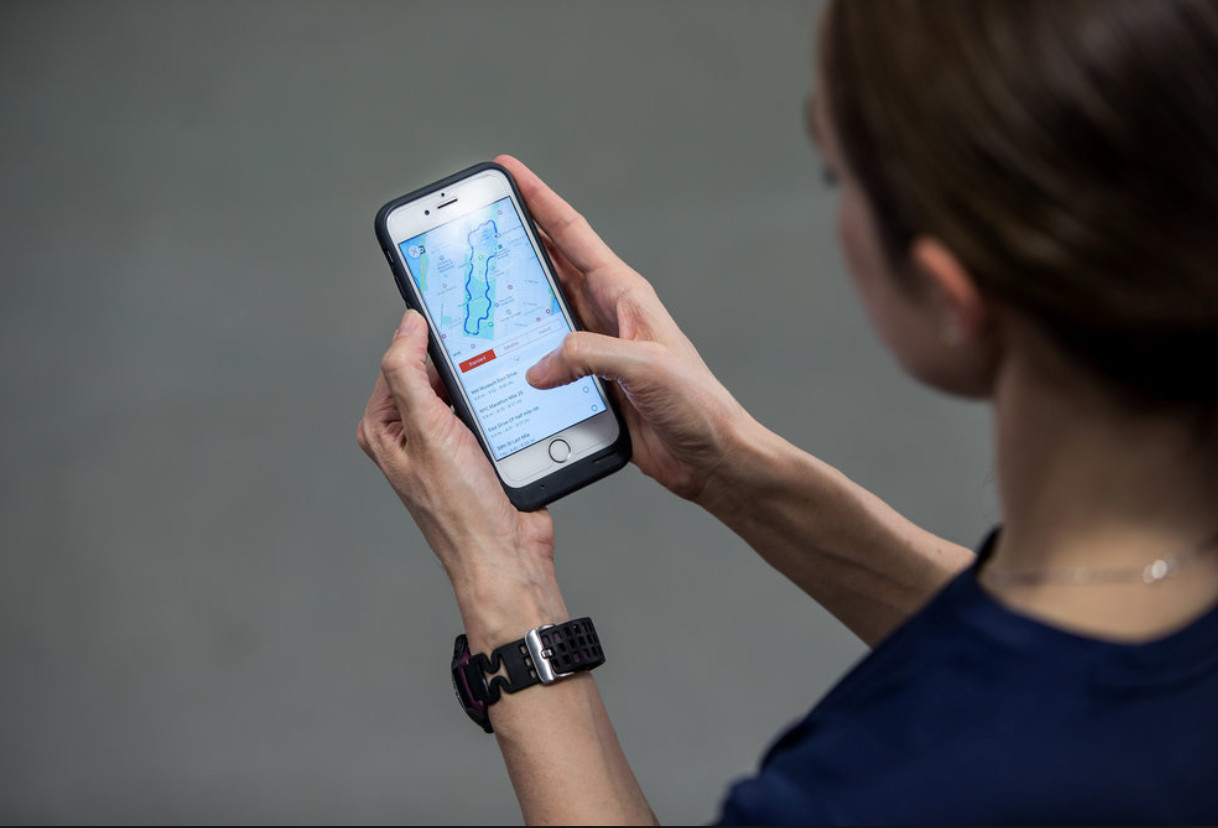
Capiraso said he was eager to draw in runners who might be unable to commit to the travel or expenses, and sees huge potential in virtual races.
The plan is an extension of NYRR’s years-long push into virtual products, which have included a training program, and a virtual racing series launched last year that has so far seen over 57,000 finishers.
Virtual marathon participants will log their marathon miles through Strava, a social networking site geared toward athletes, choosing to run on the day of the marathon or one of the three days leading up to it.
Login to leave a comment
TCS New York City Marathon
The first New York City Marathon, organized in 1970 by Fred Lebow and Vince Chiappetta, was held entirely in Central Park. Of 127 entrants, only 55 men finished; the sole female entrant dropped out due to illness. Winners were given inexpensive wristwatches and recycled baseball and bowling trophies. The entry fee was $1 and the total event budget...
more...Happy Global Running Day! Be sure to run, walk or jog at least one mile today!
Global Running Day is a worldwide celebration of running that encourages everyone to get moving. It doesn’t matter how fast you run or how far you go—what’s important is that you take part, and how you do it is up to you.
Run a lap around your block, take your dog for a long walk, or call your friends for a pick-up game in the park. The important thing is that you have fun being active—and you inspire others to join you.
Global Running Day is a day that celebrates the sport of running. It is held annually on the first Wednesday of June.
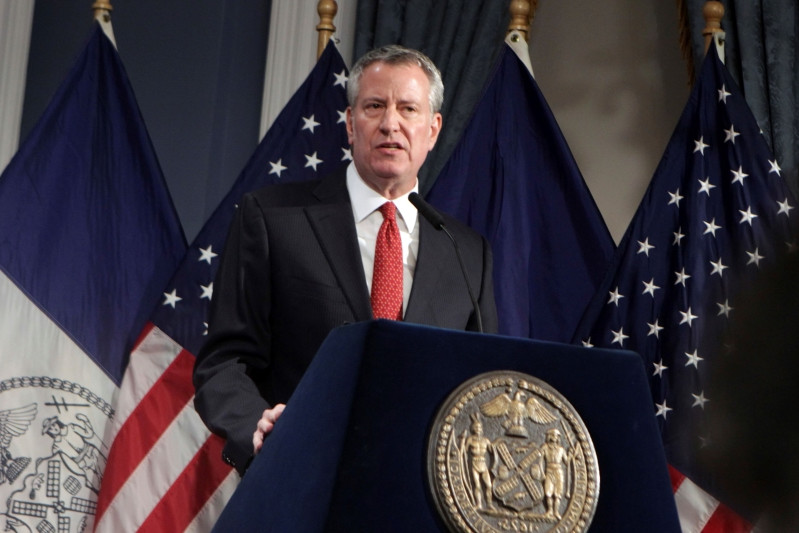
Participants of all ages and abilities pledge to take part in some type of running activity by submitting their names through the Global Running Day website.
Global Running Day was formerly known as National Running Day and began in the United States. The first event was in 2009.
The inaugural Global Running Day was held on June 1, 2016. More than 2.5 million people from 177 countries pledged to run more than 9.2 million miles.
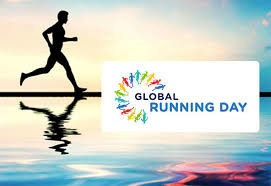
New York City Mayor, Bill de Blasio, declared June 1, 2016 to be Global Running Day in the City of New York. 2014 Boston Marathon winner Meb Keflezighi led a group run from the Boston Run Base, and the Atlanta Track Club organized a “run around the clock” event, where at least one person from the Atlanta metro area would be running every hour of Global Running Day.
More than 100 organizations support Global Running Day and the Million Kid Run.
As part of Global Running Day, the Million Kid Run aims to get young people excited about fitness. By moving and having fun, kids discover that living an active lifestyle can be fun and easy.
The 2018 Global Running Day inspired Bob Anderson to start the Run The World Challenge. It launched July 4, 2018. Since then 289 people all over the world have run and logged over 110,000 miles. This program encourages people to run and or walk everyday.
”If you are a runner already,” says My Best Runs founder Bob Anderson, “be sure to run at least a mile today. For everyone else, there is no better time than today to get started.” 71-year-old Bob Anderson is a lifetime runner who ran his first mile Feb 16, 1962. He is on track to hit 1820 miles over the last 12 months ending July 3.
“I just love to run and programs like Global Running Day and Run The World challenge motivate me to do more,” says Bob Anderson. “So get in your mile today. Run, walk, jog it all counts.”
Login to leave a comment
Global Running Day
What is Global Running Day? Global Running Day is a worldwide celebration of running that encourages everyone to get moving. It doesn’t matter how fast you run or how far you go—what’s important is that you take part, and how you do it is up to you. Run a lap around your block, take your dog for a long walk,...
more...Gene Dykes, 71, is looking to break the Big Sur International Marathon record for his age group this weekend
For someone who has done two marathons 24 hours apart, two weeks between Boston and Big Sur may seem like an eternity for Gene Dykes.
Unlike others that have challenged themselves by doing the two marathons in a short time span, it’s not the reason Dykes is running in Sunday’s 34th Big Sur International Marathon.
Instead, the Philadelphia resident is calling it unfinished business from his last trip out west to run the world-renowned course.
“They took my record away when I was 65,” Dykes said. “I owned the course record in my age class for about two months. Then it was discovered on paper that someone ran faster years earlier.”
Ray Piva set the record in the 65-69 age division in 1992 at 3 hours, 10 minutes. Dykes ran 3:26.44 in 2013.
Dykes, 71, can’t get that record back. But he’s looked at the record in the 70-older division — 3:46.36 by Heinrich Gutbier in 1997. His eyes are set on rewriting the mark, adding to his mantel of record-setting accomplishments of late.
“I shouldn’t have trouble beating that mark,” said Dykes, who broke the Boston Marathon record in his age group on April 15, clocking 2 hours, 58 minutes, 50 seconds. “It’s how fast do I want to go.”
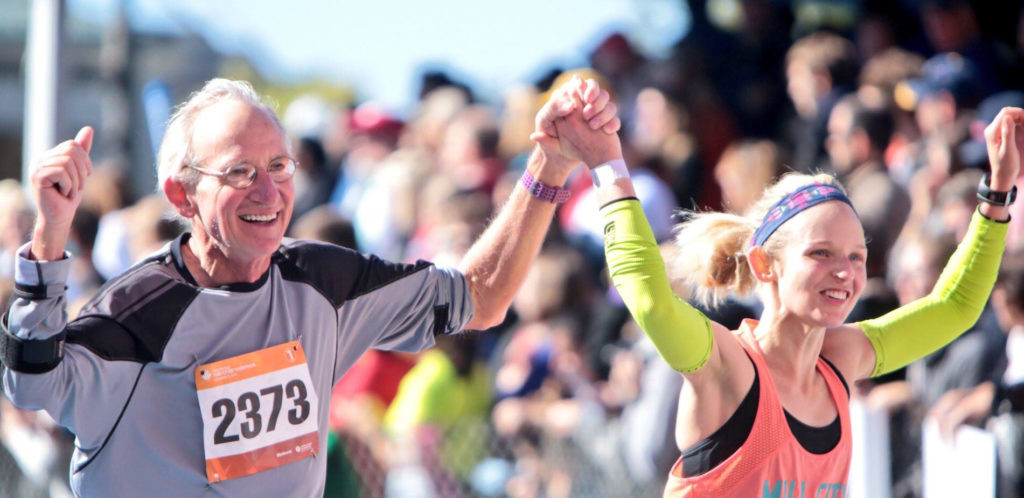
What could derail Dykes from shattering the record is he will run the race with his daughter, who is roughly 30 minutes slower than him in a marathon.
“It will depend on how long we run together,” Dykes said. “I’m going to try and get her to run a little harder in the first half. Then I’ll do a negative split the last half of the race.”
While Dykes is six years older than during his last appearance on the Monterey Peninsula, he’s gotten faster covering marathons of all kinds. Most of his personal bests have come in the last year.
“I hired a coach a few years back,” Dykes said. “I just keep dropping time. It’s more of a retirement achievement.”
This will be Dykes’ third crack at Big Sur, but the first time he’s running it after tackling Boston in the same year.
“I guess I’ve always wanted to do Boston-Big Sur,” Dykes said. “Running marathons close together is nothing new to me. It seemed like a good time to do it. Two weeks is plenty of time to recover.”
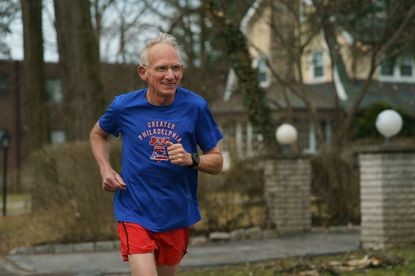
Dykes’ accomplishments as an ultra distance runner have gained nationwide attention. Last year, the Wall Street Journal labeled him “Earth’s fastest 70-year-old distance runner.”
After setting the record at Boston, men’s winner Meb Keflezighi tweeted “Special shout out to 71-year-old Gene Dykes, who ran an outstanding 2:58.50.”
For someone who didn’t run his first road race until 12 years ago, Dykes has become one of the top ultramarathon runners in his age class in the world.
“I was a jogger my whole life,” Dykes said. “I wasn’t very good in track in high school or college. I was a mediocre runner at best. So I golfed and bowled a lot. I jogged for fun.”
That is until Dykes got in with what he now jokes as a bad crowd — a group of runners, who talked him into his first road race, a half marathon in 2006.
From that point, running became an addiction. Dykes ran well enough that his time allowed him to bypass the lottery for the New York Marathon.
“I could not pass that up,” Dykes said. “So I ran my first marathon. I ended up earning a qualifying time for Boston. So I had to do that.”
By his estimation, Dykes will do 10 to 20 road races a year ranging from 200 miles to the regular 26-mile, 385-yard marathon.
“I race longer and more frequent,” Dykes said. “I’ve done five 200 milers. It’s an endurance race. The clock is running. You run when you can and sleep when you have to. I’ve done them in four days.”
Six weeks before Boston, Dykes completed a 200-mile race, a 100-mile event and two 50-mile races in 2019.
“Every year I try and stretch the boundaries,” Dykes said. “I don’t know if I can do it. So there’s only one way to find out. The hardest part is finding time to sleep. Four hours over four days isn’t much.”
Dykes comes into each race with a plan. After completing his ultra road races — totaling 400 miles — he began preparing for Boston with the mindset of breaking the record in his age division.
“I told my coach you’ve got six weeks to get me under three hours at Boston,” Dykes said
by John Devine
Login to leave a comment
Big Sur Marathon
The Big Sur Marathon follows the most beautiful coastline in the world and, for runners, one of the most challenging. The athletes who participate may draw inspiration from the spectacular views, but it takes major discipline to conquer the hills of Highway One on the way to the finish line. Named "Best Marathon in North America" by The Ultimate Guide...
more...Some ultra runners have completed 631 miles or more within 10 days but have any done so on a trail as tough as the one Michael Wardian is running in Israel?
The Israel National Trail (INT) is an approximately 1015km / 631mi hiking trail that crosses Israel from its southern to northern border, traversing a wide range of landscapes, a rich variety of flora and fauna, and a diversity of cultures.
The trail stretches from Eilat on the Gulf of Aqaba to the Dan Kibbutz near the Lebanese border, and was named by National Geographic as one of the 20 best "epic hiking trails" in the world.
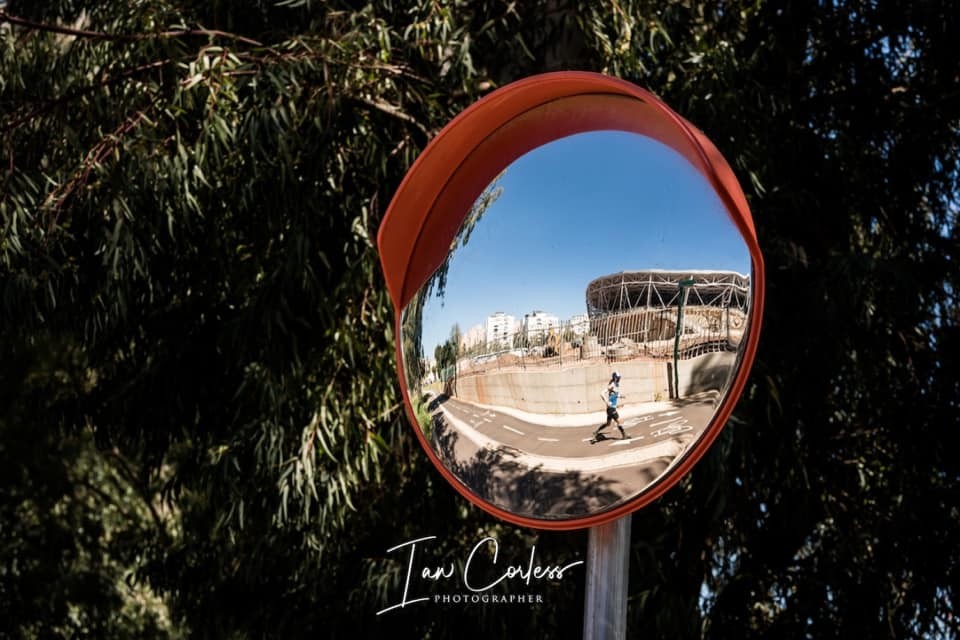
We believe the most likely Fastest Known Time on the INT to be set at 15 days in 2013 by Australian Richard Bowles.
On March 12th, 2019, Michael Wardian began his attempt to complete the trail in 10 days.
Wardian is a prodigious American marathoner and ultra-marathoner with a lengthy list of podium finishes at distances from half marathon to 100 miles, with world records such as the fastest time for 7 marathons on 7 continents in 7 days, and the fastest 50k on a treadmill, and who has completed many of the worlds most challenging races. In September 2018 Wardian ran the 184.5 mile C&O Canal Towpath in an FKT of 36h36m, beating Park Barner's 1976 time by just 12 minutes!

Michael is eight days in and has covered 776k with 241k to go according to the website Fastest Known Time which tracks these types of events. Photos by Ian Corless.
(Editors note: Michael is also part of the Run The World4 Challenge team and all his miles are being logged there. He is currently in first place with 504.48 miles logged since March 1. His team Elite Men is currently in second place with 2159 miles. Team Kenya is leading with 2304 miles. This event ends March 30. Five teams of 14 are logging in as many miles as possible within 30 days.)
by Fastest Known Time
Login to leave a comment
Run The World Global Challenge
Run The World Global Challenge (My Best Runs Running Log)is a world wide celebration of running. RYW Challenge 14 started Jan 1, 2026 and will go the entire year ending Dec 31, 2026. See how many miles you can log of running and walking. The continuing RTW1 Challenge started July 4, 2018. Participants run or walk and then log in...
more...Brent Weigner heads the USA group for the Eastern Caribbean Challenge starting March 8, that is 7 marathons in 6 countries in 7 days
We are a few days away from the start of this epic 7 Marathons, 6 Countries, 7 Days cruise adventure called the Eastern Caribbean Challenge 2019. The group includes runners from around the world with exceptional running resumes. Nine of the 12 runners who have completed a marathon in 100+ countries will be part of this challenge. Combined, these runners have completed over 4,000 marathons in 180+ countries around the world.. 43 participants from 14 countries will touch down in Guadeloupe to start the challenge.
Here are three of the participants:
Dr. Brent Weigner (USA): Brent Weigner (second photo) is the king of Marathon Globetrotting. He holds multiple World Records in long-distance running. The 70-years old retired Geography teacher has run a marathon in 170 countries which is a World Record.
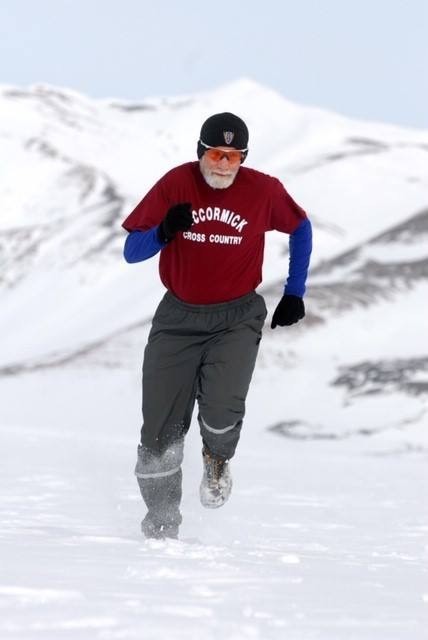
He also holds the World Record for completing a marathon on all 7 continents ten times. Moreover, Brent is the only runner in the world to have completed an ultramarathon at both North and South Pole. What makes his accomplishments even more amazing is due to the fact that he is a 3-times cancer survivor. Brent is also part of the Run The World 4 Challenge which started March 1 and will last 30 days.
Sidy Diallo (France): Sidy Diallo (third photo) is a 63-year-old French diplomat and barefoot runner, based in Paris. He was 55 when he ran his first marathon. To-date, he has completed 191 marathons in 73 countries, including 48 marathons in 2013. He is a seven continents marathon and ultramarathon finisher.
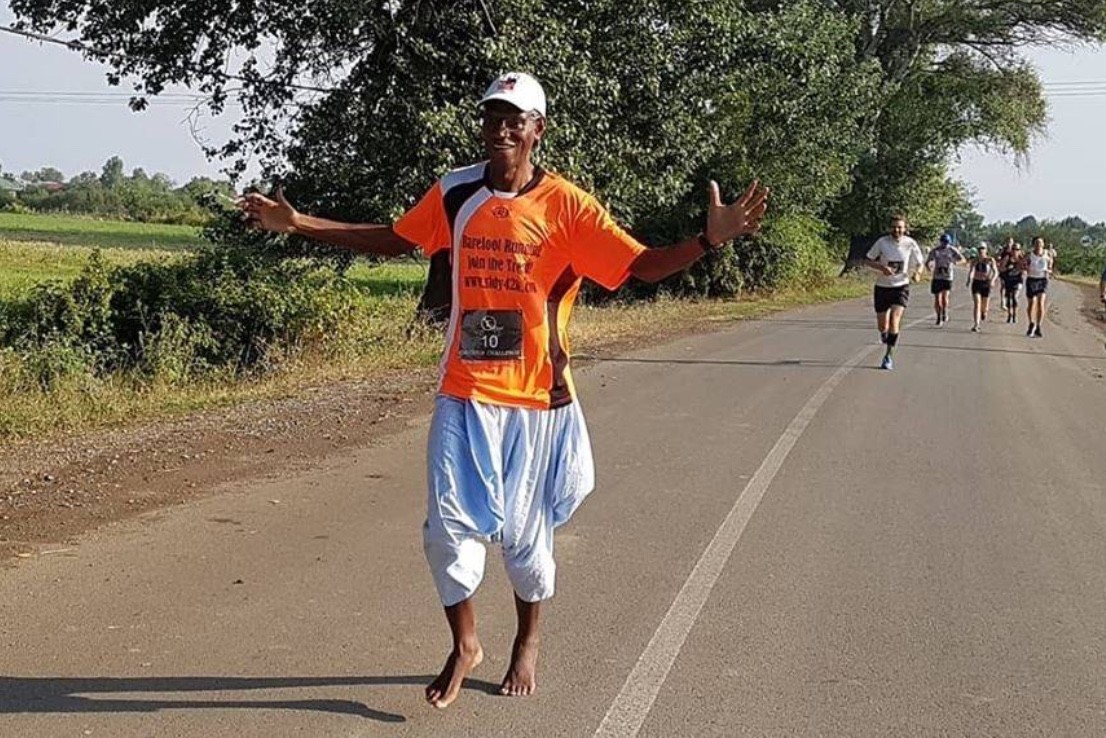
Sidy completed his first barefoot marathon on October 11, 2015, in Zagreb (Croatia), and has already run 42 barefoot marathons and one ultramarathon (90 km), in 21 countries. For more information, please visit his website: www.sidy42k.com.
Lichu Sloan (Taiwan): Lichu (first photo), at age 70, is the oldest female on the trip. She has completed 222 marathons in 81 countries across all 7 continents. She qualified for, and ran Boston Marathon, three times; ran 7 marathons on 7 continents in 7 weeks; completed all World Marathon Majors and a marathon in each of 50 US States and D.C., two times. Lichu started marathon running at age 52.
Login to leave a comment
The Run The World Challenge will motivate you to run more miles...RTW4 starts March 1 with an exciting new format
The Run The World Global Challenge (RTW) is a world-wide celebration of running. Lifetime runner, Runner's World magazine and My Best Runs founder, Bob Anderson (71) created the event to help further spread the word about the benefits of running. The first RTW Challenge started July 4.
On March 1 the RTW4 Challenge will start with some changes to make the event even more fun and challenging.
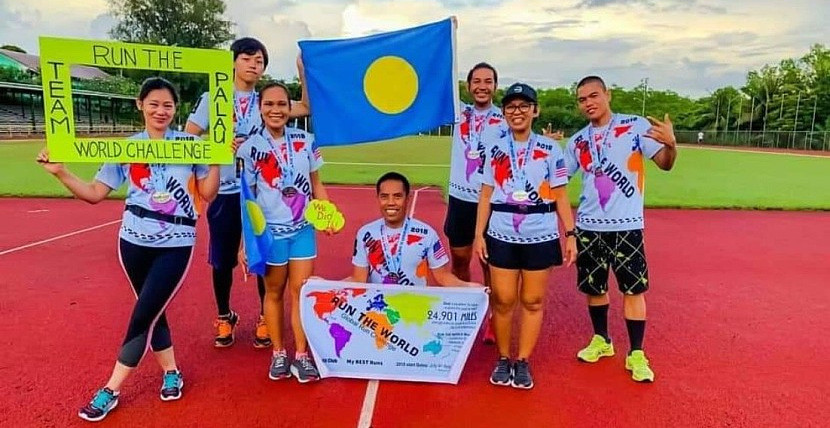
"Since I started running in 1962 I have been telling people about the sport I love," says Bob Anderson "I am proud to say I have reached a lot of people but the task is never done. Run The World is my current project and the feedback from around the world has been very positive."
Lize Dumon from South Africa posted this on the Run The World Feed January 5. "Possibly my last run for RTW3. Might do a small one to bring me close enough to 200 miles. Been a priviledge to be a part of all three Run The World Challenges. I have made loads of friends and learned a lot." Lize is putting together two South African 14 people teams for RTW4.
Already 260 Run The World runners have run and logged 85,876 miles (as of Feb 5, 2019) since July 4th in 56 different countries. In the little country of Palau alone, teams there have already run and logged 5,648 miles (photo 2 of some of the Palau RTW1 team headed up by Aaron Salvador). Aaron is putting together two teams of 14 for RTW4.
"Run The World Challenge is a great motivator," says Bob. "I was running 20 miles a week before Run The World. I now have been averaging 32 miles weekly and I am much better shape because of it. There are many such stories among the 260 runners who have already participated."
The first team that started July 4 finished in 36 days 23 hours and 13 minutes (the current world record). Two other teams starting August 29 and October 29 also completed the goal of circling the world.
How does it work? Participants run or walk and then log in those miles (k’s) on their free My Best Runs (MBR) account. The goal is for the team (now group of teams) to log enough miles (k's) to circle the world within 30 days.
The process of running/walking and then logging in miles (k's), making a comment (optional) and posting a photo (optional) is the basic program. A team member logs into their My Best Runs account to log in the miles they run or walk.
One major change is RTW4 will end 30 days after starting. "It is hoped one of our three groups of teams will reach our goal within this time frame but if not the group of teams that have logged the most miles win. All teams within the three groups will also be competing against each other," says Bob.
All runners will be part of a 14 person team. The teams have many interesting themes like: Team one will be for runners 70 plus. Team 9 is for those men and women who have or are in the Military. Team 10 and 11 are for Elite Runners. Team 21 is for India's citizens. Team 23 are for runners living in Canada. Team 34 are for those runners who have completed at least one 100 mile race. Team 37 are for runners who have lost 50 or more pounds and are currently running. Team 42 are for runners who have run at least 50 races in one year. (Click the link for the full list of the 42 team.)
Runers will pick the team of their choice as long as it is not full. There are 14 different teams (with a maximum of 14 runners per team) making up a group.
One unique aspect of RTW4 is that one person can be on one team, two or three teams. BUT the teams have to be in different groups.
When you run, let say five miles, these same miles only need to be entered once and they will be credited for all your teams.
Registration is now open. "It was hard to pick just one team per group," says Michael Anderson who has done all RTW Challenges. "I could have signed up for several different teams but I decided on Team 30 having fnished at least one Boston Marathon, Team 25 West USA because I live in Bend, Oregon and Team 4 age 40-49. Can't wait to do this again. It has really motivated me to run a lot more. Bring it on."
Login to leave a comment
Run The World Global Challenge
Run The World Global Challenge (My Best Runs Running Log)is a world wide celebration of running. RYW Challenge 14 started Jan 1, 2026 and will go the entire year ending Dec 31, 2026. See how many miles you can log of running and walking. The continuing RTW1 Challenge started July 4, 2018. Participants run or walk and then log in...
more...Use running as a way to release stress and quiet the mind - Michael Anderson on Running File 3
Work and life balance can be stressful, so much to do everyday and it seems like there is never enough time to get it all done. We are pulled in every direction and the feeling is one of being in a washing machine.
I can say I suffer with some form of mental despair, its hard for me to shut off my brain.
I feel therapy can be extremely important and its good to have someone to talk with. My advice is not one or the other (therapy or running) but some of both.
Running is a huge form of meditation and can be a perfect way to shut off the brain and focus solely on the task of one foot in front of the other.
Running can lead you to so much beauty especially when you get out on the trails and see true love. When you use running as a way to release stress and quiet the mind you really will see a difference.
Being a recovering alcoholic. running saved my life. Before I would escape with drinks but now I put in the miles and the results are endless life. I do have an addictive personality and I am for sure an running addict and proud of it.
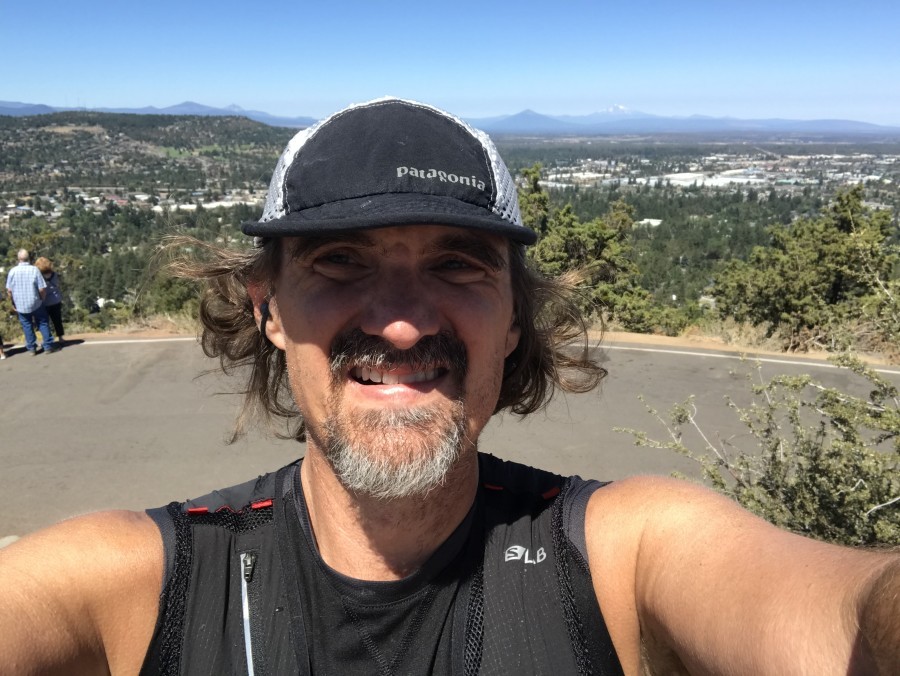
Running reliefs:
Running is the cure for when you feel down on yourself. How can you not feel good after pounding out a mile run and giving back to yourself.
Running is the cure for when you have had a hard day at the office, you gotta release the clutter and reset and a good run gets that done.
Running is a cure for stresses at home, wife and baby (love them) but they can add stress too, running is giving back to you and solely to you.
Running is a cure for the bad habits, (drinking and smoking) running will drop the weight and is such a natural high, best high I have ever experienced.
Happy, sad, glad or mad, Running is great for all of these emotions:
Happy- damn it will feel great to open it up.
Sad- flush out the tears and shed them on the roads.
Glad- damn glad to be out here today.
Mad- put that negative energy into pounding the roads, hit the high moments and release.
ALL good and run on! Michael Anderson on Running
(Michael Anderson has been running all his life. He has run four marathons including Boston, Big Sur, San Francisco and Seattle and has sights on running his first ultra soon. He has participated in all three Run The World Global Challenges and plans to do Challenge 4 starting March 1.)
by Michael Anderson
Login to leave a comment
Top two American’s in the Run The World Challenge which just finished are both over 70
The third Run The World Challenge sponsored by My Best Runs (MBR) has finished. The team of 105 active runners, who ran and logged miles in 23 different countries, finished last night (January 5) in 68 days 17 hours and 18 minutes.
The event created by MBR Founder Bob Anderson is all about running and then logging in those miles, posting photos and comments in our runner’s feed to help motivate the team and inspire others. The team has to run/walk and then log in 24,901 miles (40,074k) to complete the challenge.
“This is the distance around the world,” says 71-year-old Bob Anderson who himself ran and logged 297 miles.
“Our team from around the world and ranging in ages from six to 74 did an amazing job,” says Bob. The team logged an average of 362 miles per day and the team had to stay focused for over two months. “With our busy lives that is not easy,” says Lisa Wall a team member.
34-year-old Eliud Lokol Esinyen from Kenya and running most of his miles in Eldoret logged the most miles with 1,298.59. He averaged 18.9 miles daily, many days he worked out three times. Finishing in second was 27-year-old Boaz Kipyego also from Kenya. However he spent about five weeks in Minnesota USA running and racing. He ran and logged in 1,129.41 miles.
First American was 74-year-old Frank Bozanich from Reno Nevada. The previous five time national champion at 50 miles and 100k ran and logged in 1,036.19, good enough for third place. “This is his third time around the world with us,” says Bob. “Many people say that age is only a number and certainly age is not stopping Frank. He told me he is running a lot slower these days because he has put a lot of miles on his body, however. Well done Frank, on an age-graded basis this has to be the best performance,” says Bob.
There were five male runners 70 plus in the top 31 places. In fact 72-year-old Paul Shimon placed sixth overall running most of his 893.06 miles in Winfield Kansas. Like many of the team he had to deal with a lot of issues including the cold, snow and darkness.
Super star Michael Wardian (photo top left) placed 8th overall and ran some of the best times including clocking 2:34:54 at the New York City Marathon. He also ran a tough 50-miler in Israel. He posted 651 miles for his third trip around the world with us. In a few weeks he is going after his world record he set in 2017 at the World Marathon Challenge. That’s running seven marathons in seven days on seven continents.
On the women side, ultra super star 48-year-old Gloria Nasr ran and logged 422.54 miles to place first female. Gloria lives in Paris, France. Some of her miles were also ran in Peru when she travelled there to run an Ultra (photo upper right). She has also run the six stage race through the desert of Morocco in the past.
In second place was Kenya’s Rosaline Nyawira who currently is living, training and racing in South Africa. She ran and logged 394.01 miles.
Third and first America woman was 71-year-old Karen Galati who logged in 223.88 miles. She ran most of her miles in Rancho Palos Verdes, California. As she wrote on her profile “Better late than never to this addicting sport.”
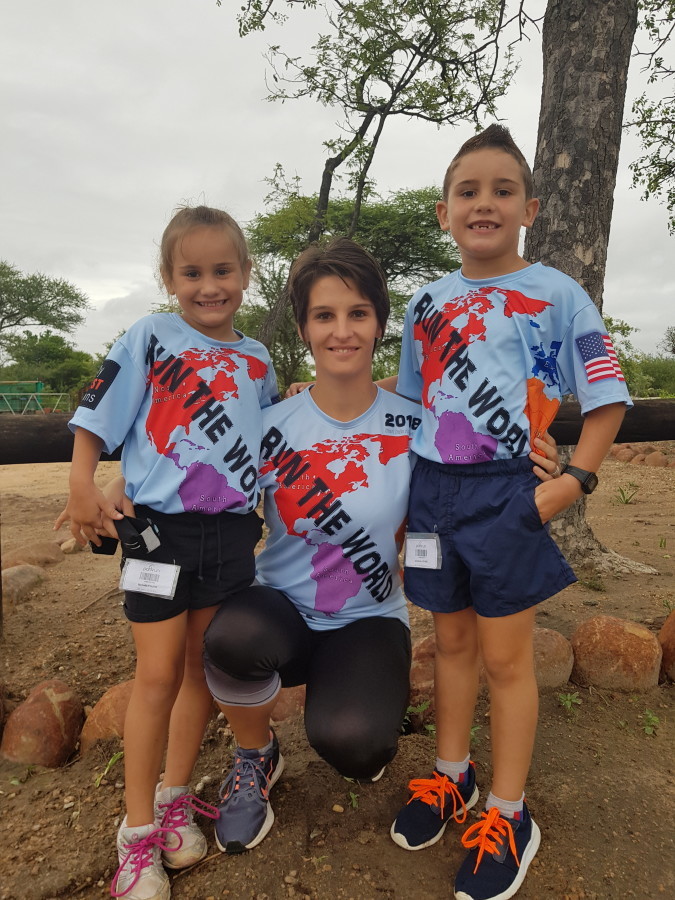
Miles run and logged in the top five countries were USA, Kenya, Palau, South Africa and India. The small country of Palau was in second place the first few weeks. The Run The World Challenge group there lead by Aaron Salvador have so much spirit. Most weekends they get together and run ten to fifteen miles. “You can always count on us to post photos and comments too,” says Aaron.
Our group from South Africa lead by Lize Dumon has just as much spirit. During the challenge Lize completed her first marathon and just got over 200 for the team. The Fourie family in South Africa has to get the top spirit award. The two kids (Michelle age 6 and Jonathan age 7), the mom (Erika) and grandma (Johanna) posted nearly every day and collectively logged in 455 miles. Even the dad joined in many days.
“This was not our best RTW performance but this one has to be our toughest with many challenges,” says Bob. “Many of our team had to deal with early cold and snow in the United States and Canada. Our runners in Palau had to deal with heavy rain and wind. In South Africa it was over 100 degrees many days. In California our runners had to deal with unhealthy air quality for two weeks because of the smoke from the wild fires. A majority of our team had to deal with shorter days and run in the dark. And on top of everything there were three major holidays during Challenge3.
”I am very proud of our whole team. It is hard to stay focused on something like this for over two months but we did it. We made it around the world. For many of us for the third time. There are so many more stories I want to share’” says Bob. “Well done team. Let’s do it again.”
Details for the next Run The World Challenge will be announced soon.
by Bob Anderson Team Caption
Login to leave a comment
My Love Affair with Central Park started 40 years ago tonight - Larry Allen on Running File 5
If you want a useful guide for running in Central Park this isn’t that. There is plenty of concise information available online and all of it will do a far better job telling you exactly how to go for a run in New York City’s favorite 840 acre backyard.
If you want to know about beginning a long term relationship with New York City and running in Central Park, this is my story.
My first run in the park was on December 29, 1978. I was in college on the GI Bill and had taken my slightly unreliable but fun-to-drive MGB from Maine to Florida over Christmas break.
I didn’t want to think about the trip back north. Hitchhiking was still an option in those days if my car gave out but it surely was not what I wanted.
I was already a veteran of two marathons and was ramping up my mileage for the Boston Marathon the following April. I had a glorious couple of weeks of running in the technicolor light and warmth of south Florida and while there even managed to meet Frank Shorter.
I ran twice a day including a couple of two hour runs, went to empty beaches to bask in sunny 60 degree days while bundled up locals looked on, amused and mystified.
All in all it was a great time, went quickly and too soon I was starting the long drive back to Maine.
A couple of uneventful days on the road brought me back to the NJ turnpike two days before New Year Eve. In the fading light of a cold, clear winter afternoon I pulled into a service plaza for gas.
My plan was to continue driving on through the night for the last 500 plus miles vs. spending money I didn’t have for a roadside motel room. A “you are here” map in the foyer of the restroom surprised me with my close proximity to NYC.
The next thing I remember is rummaging through the stuff in my car for an address book with the phone number of a longtime summer friend from Maine who spent the balance of his life on upper west side of New York.
I searched between the seats for change to make a call on a pay phone and was fortunate that my friend even answered. He graciously said I could crash for the night.
I’d never even been into NYC proper and the prospects for the evening were exciting if not a little intimidating.
I finally made it safely down from the high bridge over the Hudson River into the city and found a place to park near Grant’s Tomb on Riverside Drive, a few blocks west of my friend’s apartment not far from Columbia University.
I made the wise choice to schlep all of my stuff to the apartment for fear that the patched convertible top and dodgy locks of my car wouldn’t deter anyone in 1970s NYC, from breaking in looking for anything of value.
I said a quick hello and thank you to my friend on arrival but needed a run before I could eat or do anything else. He understood and gave me directions to Central Park and showed me how to buzz myself back into his high rise building.
Running down Broadway entailed dodging and weaving along hopelessly crowded evening sidewalks, scents from all manner of ethnic food wafting as I made my way through the 20 red lights, one per block, for a mile.
Eventually a left turn, to the east for a few more blocks to enter the park around 100th St at Central Park West.
The park was dark and cold, full of energy but it oddly felt peaceful too. The air was filled with different smells; diesel bus fumes, horse manure, musty fallen leaves, street pretzels, roasted nuts and yes, adrenaline, some of it mine.
Traffic hadn’t been banned from the park drives in the evening yet so it was full of yellow cabs and giant 70s era sedans moving slowly in heavy evening traffic.
I looked around for a landmark, something to remember so I could find my way back out of the park onto the same street in hopes of finding my way back to my friend’s place through what felt like barely contained chaos on the city streets.
I took note of a broken, graffiti covered park bench in this far less than gentrified version of the city. It seemed memorable enough and I guess it was.
Inside the park there was a lane for running. Parallel were two traffic lanes around what I’d been told was a six mile loop circling the park just inside the perimeter.
In spite of the hummock and pot-hole filled streets, particularly in the nearly bankrupt version of the city at the time, I recall the park drives being remarkably smooth pavement.
I turned right, running downtown on the west side. The rolling hills also seemed more downhill than up too, something I confirmed in years and miles to come.
At first it was a gentle contained pace, working out the stiffness in my legs and back after a day long drive from North Carolina on a bad suspension and the hard seats in my car.
The grade of the rolling hills and gently winding turns in the park seemed worn-in to the landscape. It felt perfect for running, almost carved into the city like the equivalent of glacial wear but from the mass of some number of the eight million city residents using the park day after day.
Making my way down the west side for a mile offered peeks through the leafless trees and scenic overlooks of the lights and architecture of pre war apartment buildings forming what appeared to be a tall, impenetrable wall along the avenue fronting the park.
Periodically there were glimpses further downtown to the iconic skyscrapers in midtown. The Empire State Building and Chrysler Building most familiar amongst a forest of others that seemed just as big if not as well known.
I simply didn’t want to stop running, the pull was almost magnetic, my tempo gradually increasing around the next corner or over the next hill, all just to see what was ahead.
It was all a bit like a party that you didn’t want to leave for fear of missing something good that might happen.
Just before reaching a first opportunity to choose between veering left from the main park drive or continuing straight toward the high rises of midtown; I went by what, in a few years, would be renamed Strawberry Fields. It was in honor of John Lennon; murdered not far away at the entrance to his building, the Dakota, which overlooks the park here.
The park is a perfect rectangle, slightly off of an exact north to south axis extending from 110th St to 59th St., 2.5 miles on each side and slightly over .75 mile between 5th Avenue on the east side and Central Park West on the other.
Years later I learned that the cutoff (or shortcut) I had seen and gone by at 72nd St and another I hadn’t reached yet at 102nd St made for a seemingly endless variety of options for creating and running multiples of loops of 2, 4, 5 miles and of course the full 6 mile circuit.
The New York Road Runners used the counterclockwise 6+ miles of the full park four times plus the slightly less than two mile loop from the bottom of the park to 72nd St for the 26 miles 385 yards for the 55 finishers of first New York Marathon in 1970.
The marathon still uses the park, but only about half of it for part of the final three miles of the race.
I read somewhere that 20,000 people run in Central Park on an average day. There are days and seasons during the year when that number seems high but other days and times during the year when it is certainly low. I guess that’s what they mean by average.
There are over 30 races in Central Park every year. Most hosted by the New York Road Runners Club and a few by other organizations.
Nearly all have thousands of participants, racing distances ranging from a 1 mile kids race to a 60k ultra marathon. Some with top invited international and American stars, some simply very large competitive local races. Every one a variation in the options for running loops in the park.
I continued running through the park, next past a big open meadow on the left, learning later that it was the 15 acre Sheep’s Meadow.
It has been a historic spot for protests over the past 100 years, up to 30,000 sunbathers on a nice day and 150,000 for a Barbra Streisand concert in the 1960s and yes sheep, from the 1860s until the 1930s.
Adjacent to the finish line of the marathon at Tavern on the Green the meadow also was a post race staging area for a few years.
22 months after my first run in the park I was back here, finishing my first marathon in New York. My last run up the hill to that familiar finish line was 32 years later.
The buildings along the southern edge of the park loom up just a few hundred yards away from the marathon finish. Columbus Circle marks one of the four corners of the park here and is a block from where I lived for 10 years when I finally moved to the city.
Almost every day was a 15 minute walk home from work at MoMA for me, dogs out for a walk and then into the park for an evening run. Sometimes clockwise, up the westside, the opposite direction of my first run.
Often I ran the same counterclockwise direction I was running that night. Across the bottom of the park to the east side, the legendary Plaza Hotel, the Central Park Zoo and the Wollman Skating rink anchoring the corner on that side.

I saw the familiar sign for the Essex House hotel along the way on my first run in the park that night and invariably still take a glance up at it on every run 40 years later.
Turning back north on the east side of the park led me up a gentle hill through dramatic exposed rock outcroppings of Manhattan’s bedrock schist. Apparently something which allowed New York to more easily build foundations for it’s famous skyscrapers over the last century.
I ran past playgrounds, the 100 year old children’s carousel and about a mile beyond Columbus Circle, to the other end of the 72nd St cutoff.
In years ahead it became a familiar corner. Nearby is the start and finish for the New Years Eve 4 mile race in the park, starting at the stroke of midnight with fireworks.
The corner is also near the start of one of the bigger hills in the park, this one known among local runners as “cat hill”. Midway up the 1/4 mile climb is a sculpture of a life sized and menacing mountain lion, seemingly ready to pounce from a natural stone overhang directly over the runner’s lane.
It was too dark to see the cat that night but is familiar enough now. Cat hill is a popular place for training for some of the dozens of running clubs that meet up and use the park for weekly group training sessions.
A couple of minutes more led me past what I didn’t know at the time was the back of the massive Metropolitan Museum of Art. Around it and closer to 5th Avenue for another half mile brought me near a building I did recognize, Frank Lloyd Wright’s landmark cylindrical Guggenheim Museum.
The nearby entrance to the park would become familiar later as the place where the marathon enters the park for the last 2.5 miles of the race headed back in the direction from which I’d just come.
The summer after my first NY marathon and having entering my 2nd, there was a fundraising appeal in my race confirmation. The NYRR was trying to raise money to purchase a six story Beaux Arts townhouse just opposite the Guggenheim for one million dollars.
They were successful and for 36 years it served as headquarters, clubhouse and place to pick up bibs for their many races. It was listed for sale this past year for 25 million dollars as they apparently need something fancier and/or bigger.
Nearby is a statue of the late, charismatic leader of the NYRR, Fred Lebow. His vision arguably responsible for the explosive growth of urban marathons around the world for decades. His likeness stands looking at a stopwatch, appearing to be silently calling out time splits to runners just inside the park.
The entrance of the 1.5 mile long reservoir running path is there too, named for Jacquelin Kennedy Onassis, a nearby resident for decades, she was known to jog on the scenic cinder path and reportedly was even seen wearing long white formal evening dress gloves on cool days.
At the reservoir it felt like I had run between 5-6 miles, I knew it was six around the park but then maybe 10 minutes more to and from my friends place.
I was moving along briskly, feeling good but thinking I should get back but had reached the point where it made more sense to continue on vs. turning back. Maybe three miles to go.
Just 1/4 mile past the flat straight section along the reservoir the drive started down a hill and turned toward the center of the park from the perimeter. I felt a change. There were fewer street lights, less traffic and not as many people around. It all seemed a bit more ominous.
A half mile further brought me to the 2nd cutoff between the east side and the west. This one at 102nd St. It was very dark, narrow and almost foreboding.
In 1989 this section of the park, down the hill from the reservoir to the 102nd St cutoff became notorious as the site of a series of “wilding” gang assaults on a number of runners and pedestrians over one hour on a frightening night that April. It culminated in the vicious assault and rape of the “Central Park jogger” on the cutoff road I was passing.
Even 11 years prior to that night it felt dangerous. Today most runners and running clubs practice a buddy system when running at night in the park as a result of what happened in 1989.
There is a prominent police presence in this area and thankfully crime in the city and the park has declined precipitously too.
In all of my thousands of miles in the park over the years, many at night, I’ve never personally experienced a threat or even witnessed one and I’m grateful for that.
The almost kaleidoscopic park quickly changes again at the far north end. The park drive quickly snakes through a steep S shaped descent with high bluffs overhead on one side and an open high view of Harlem on the other; the Meer waters and the Conservatory Gardens in the foreground.
The far north end of the park remains the most natural with unspoiled ravines, dramatic rock faces, waterfalls and streams all tucked away.
On runs here I’ve seen families of raccoons crossing the road at night and hawks swoop down for unsuspecting squirrels during the day but nothing of the sort on this particular night.
Midway down the hill brought me past a large skating rink outfitted for youth hockey. I learned later that it does double duty as a community pool in the summer.
Now at the north edge of the park I could see into Harlem. I made the turn, running to the west. Just outside the park were dilapidated tire changing shops, gas stations, boarded up windows, burned out cars and a trash can with a makeshift bonfire offering warmth to a few men huddled around.
Continuing on, anticipating a turn to the south to complete my circuit of the park it quickly became evident that I was going to climb a good hill.
Runners in NY refer to this climb with some dread as THE Harlem Hill, it climbs about 150 ft in half a mile and then just as quickly drops down again. I wasn’t far beyond where it leveled out again and suddenly on my right, there it was!
The familiar broken, graffiti covered bench that I’d decided to use as part of my trail of bread crumbs when I entered the park.
Not much had changed on the surface. Traffic had lessened somewhat as the evening rush was concluding. The smells were the same but had become permanently imprinted in my brain vs. something new to experience.
I slowed my pace for the few blocks back toward Broadway and a final right turn north for the last mile up toward Columbia.
After less than an hour on foot I felt like I understood New York to some extent....and I liked it. The prospects for the evening seemed exciting enough when I decided to spend the night but I had no idea.
Even before I finished the run one big thing had changed. I knew or at least hoped that I’d spend part of my life in the city.
My wife, step daughter and I have been fortunate to have lived the last 21 years of our life together in New York and adjacent to Central Park, 10 years on one corner of the park and the last 11 years a few blocks from the far opposite corner. In part, all due to one unforgettable run around Central Park on a cold December night 40 years ago tonight.
(Larry Allen on Running is an exclusive My Best Runs Running News Daily feature. Additionally Larry is doing the Run The World Challenge for the third time.)
by Larry Allen
Login to leave a comment
Merry Christmas to all our My Best Runs followers from Bob Anderson and staff
We have been up here in Bend Oregon visiting my son and his family since Friday. My son Michael Anderson is our MBR results editor and post results as soon as they become available. Sometimes it is as soon as the first runners are crossing the finish line.
Michael (top photo) have carved out many running courses around his house. We have already run 22.2 miles since Friday and will at least get in six miles today.
Last Christmas Michael lived in Eugene and we ran the Pre Trail Christmas morning.
We have been running on Christmas Day forever. When Michael lived in the Bay Area I would run with my daughter Lisa and her family and then run with Michael in the afternoon.
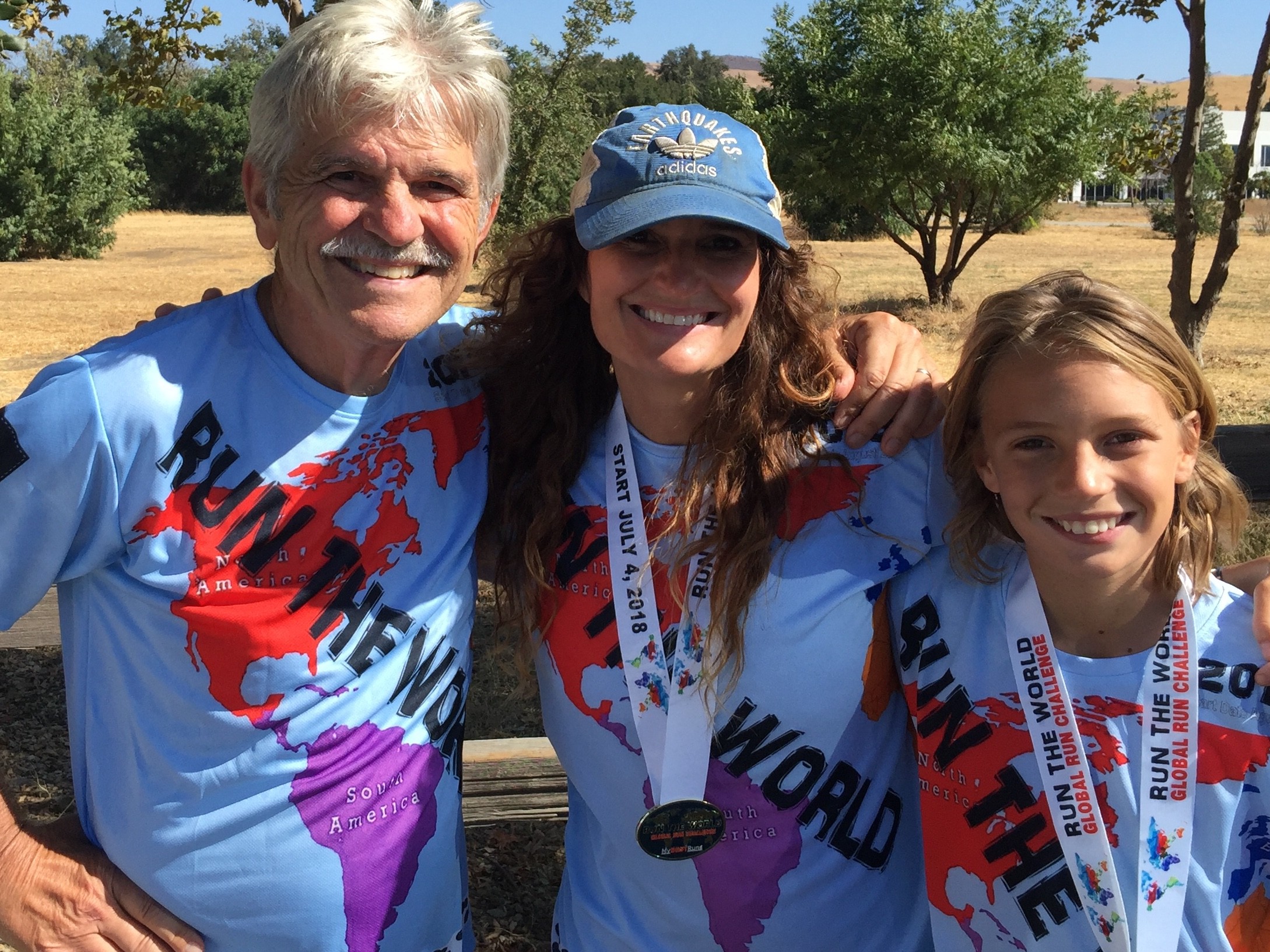
Lisa (second photo) and family lives in San Jose, California. She is our social media and newsletter editor. We celebrated Xmas with them before heading up to Oregon.
Both of my kids have run marathons, my wife has run a half marathon and many other races but after operations on both feet can’t run now (Catherine works out at the gym these days) and all my four grandkids run even including my two year old, Bear. Owen age 12 have already run a 5:52 mile. My son-in-law Justin has run a 1:27 half marathon.
We are a running family and have been forever. There is no better day than Christmas Day to get outside and get in a few miles. (Updated: Mike and I got in 7.1 miles through two inches of snow today.)
Two other members of our full time crew are Jaime and Manuel. They work at our La Piedad office.
Our webmaster Waitman Gobble keeps us all working and always is coming up with new features.
Gary Allen (Marathon Man Gary Allen) and Larry Allen (Larry Allen on Running) have signed on to do regular writing for us sharing their many years of running wisdom and knowledge with us. I am sure they will be getting out and getting in a few miles today.
Willie Korir is located in Nairobi, Kenya and has been sharing insights into what makes many runners in Kenya superstars. He has also run and logged 2851 miles for our three Run The World Challenges since July 4.
Our third Run The World team is not too far off of running and logging enough miles to circle the planet for the third time. I am so proud of our team.
Merry Christmas and Happy New Years to everyone. Be sure to get out today and let’s all make 2019 a super year. I know this is our plan here at My Best Runs.
by Bob Anderson
Login to leave a comment
It is important to understand that we are not bullet proof as runners - Larry Allen on Running File 4
I went out for a slow, difficult three mile run the evening prior to my pacemaker being implanted. My heart, although not functioning properly, was thankfully strong enough for that one last run without artificial help.
My friend, a nurse, probably saved my life by getting me into a walk-in clinic that next morning. Everything went fine and I am now running again but with a pacemaker (recent photo in NY Central Park).
Let me share some advice. There is a fine line between being tired or feeling weak from a hard workout or thinking maybe fatigue or weakness is “just” natural decline with age making things harder vs. something feeling “off” enough to seek help.
It’s a blurry line but I guess my best advice is to be keenly observant of your own physical traits and patterns and when anything falls outside of a normal range for you, again, see someone. I think it’s very important to understand that we aren’t “bullet proof” as runners.
I remember in the 70s Dr. George Sheehan wrote and in lectures said that we, as marathon runners, were essentially immune from having a heart attack. It wasn’t long after that Jim Fixx died of a sudden heart attack while running on an easy training run.
Almost every day when I run in Central Park in NYC I run right by the spot where Ryan Shey died suddenly of an undiagnosed cardiac condition early in the 2007 Olympic Trials Marathon, on a downhill section, it was a cool day and the pace early in the race was conservative (for him).
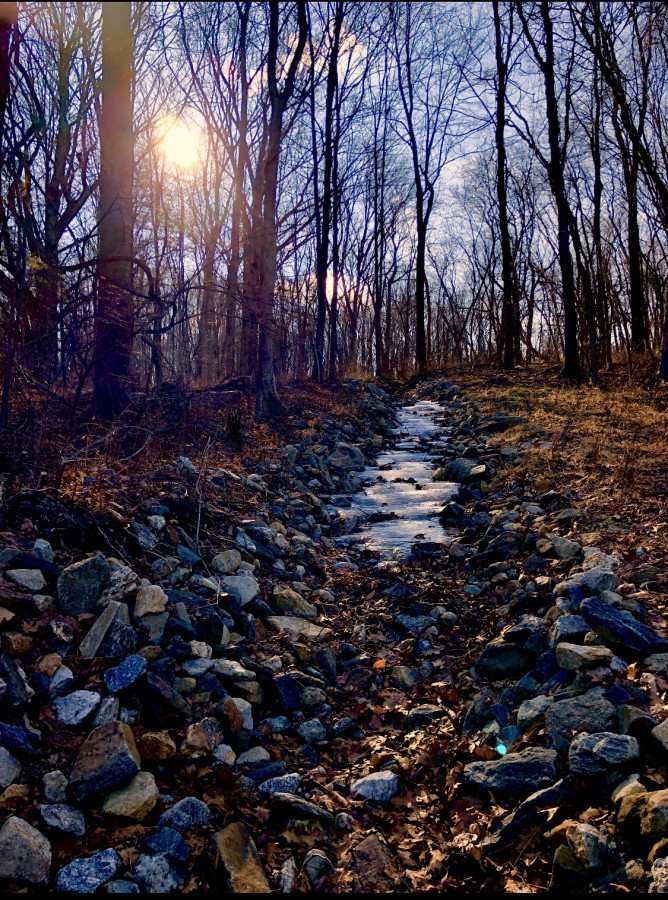
A friend, physician and Olympic Trials qualifier in the marathon from Maine has a sad but growing list of lifelong runners from northern New England alone that have met similar fates without knowing they had a health issue.
We have to understand that even as very fit runners we are vulnerable, and that goes hand in hand with understanding the importance of listening to your body.We all have to be our own best advocate and our own best piece of medical monitoring equipment.
It’s easier with all of the new technologies however, as runners, we have intuitive ability that puts us in touch with our own bodies. We must listen carefully to all of it and also try to overcome another trait we have as runners, our stubbornness, which can certainly be our strength and our weakness at the same time.
Recovery has been tricky. After my pacemaker was functioning I was diagnosed with intermittent (paroxysmal) Afib which is treatable with medication. At first I didn’t quite understand that Afib progressively becomes more persistent or permanent and that treatment options become less effective or sometimes completely ineffective as it goes along.
I ran again for a bit over a year but my Afib was gradually getting worse and eventually the stronger medications needed weren’t easily tolerable. It got harder to run yet again. My remaining option was a cardiac ablation. After careful consideration I had it done early this past summer.
The good news is that my Afib has not reoccurred since. The bad news is that it’s a lengthy healing process. I am six months into it and have probably walked about 600 miles. I’ve gradually added short stints of jogging into my walks and only recently a few miles of continuous very slow running.
I’m told that it will take perhaps 3-5 months to fully heal and hopefully then I’ll be able to run more normally.
(Larry Allen on Running is a regular MBR feature sharing the wisdom of Larry Allen, a 50 year accomplished runner and artist. He is currently participating in the third Run The World Challenge.)
Login to leave a comment
My coach said when passing someone, pick up the pace, go by with certainty and show no sign of exertion - Larry Allen on Running File 3
Full circle. I am becoming Fred Dingley. He was my first cross country coach at Lee Academy way back in 1969.
One late summer day a couple of years ago I headed for my usual early evening run at a favorite trail in Connecticut.
A welcome hint of fall was in the air. Dry, refreshing Canadian high pressure, breezes and gentle fall-like light had crept in for the first time in months, replacing the laser-bright sun and stifling humidity of a hot summer.
The trail I often run extends along the Pequonnock River Valley and the beautiful weather had it abuzz with happy runners, cyclists and walkers, a full house in the parking lot.
At the top of the short hill leading from the lot to the trailhead; 15 young men from a local high-school cross country team gathered, bare-chested, stretching against a rail fence.
The 14 year-old newbie kids tried not to be conspicuous in their very presence but also were clearly checking out their bigger, stronger and more confident 17-18 year-teammates. The older ones innocently full of themselves, utterly oblivious to the younger kids.
They all started running just before I shuffled up onto the trail. Within the first half mile I could already see the smaller, slower runners beginning to fall off the pace.
I caught the first kid soon after. For a minute I was back in the early fall of 1969. My first coach, yes Fred Dingley, was the headmaster of the school.
In his 60s, he ran with the team some days. I was 14, 4’9” and weighed maybe 90lbs. I lacked fitness, confidence or any knowledge whatsoever.
Mr. Dingley caught me a few times in my first few runs that September and always had a word of encouragement as he passed.
He made me feel like if he could run 2-3 miles at his age I damn well could, even when I seriously doubted it two steps prior to him passing and three steps after he went by.
Fred Dingley's teams were a perennial power in Maine. State Champions my first 2 years. My next coach, Howie Richard, led a team to my third championship in 4 years. I was fortunate.
Early that first September I ran my first timed mile in 6:55. I proudly made my way to the top of the Junior Varsity by the end of the year and ran a 5:06 mile.
I won a race the next year and I will never forget being congratulated by the headmaster-coach in the school’s morning announcements.
Mr. Dingley retired a year later and I've always hoped he kept running for years after.
40 odd years later, I ran past the slower runners in the first couple of miles on the trail and made a point of doing what my coach had done; offering a quiet word of encouragement to each kid.
I wondered whether seeing a man in his 60s running by might do for one of them what it did for me years before.
Meanwhile, I also remembered how Howie Richard coached me as as a more accomplished runner 3 years later; he said when passing someone, pick up the pace, go by with certainty and show no sign of exertion, he explained, only slightly in jest, that "it demoralizes them a little and gives you an edge".
Maybe I should regret those ingrained competitive instincts but at more than 4 times the age of most I passed I think I should get a pass (no pun intended) for any insensitivity, real or imagined. I did try offer encouragement but that's a different thing, right? Can you intimidate someone (a little), feel better about your own remaining ability and give encouragement all at the same time? I hope so.
I have no idea whether the team I saw in Connecticut that pre-season evening ended up a top team that year. I was impressed that most of the older kids ran the same 8 miles I did.
Based on those I passed, I remember wondering whether I might still be able to make the JV team of a HS team. In reality the dead sprint at the beginning of a 3mi high-school cross country race would be a big problem.
If I had any hope I’d have to use experience and wisdom (if any) to try and overcome my physical ability with a late charge from behind at the end. The real problem; the youngest and slowest kids I saw were all going to get much faster and stronger in coming months. I would not.
At just past age 60 I was still holding up ok. I could still manage 5-12 miles almost daily. A few longer runs crept below 8 minutes per mile, I even managed a 6:25 mile at the end of one good run. It all took a sudden turn with an unexpected health problem a short time after this particular evening.
Having successfully dealt with my issues I’m again able to run or run/walk for shorter distances on the trail weekly, slower but just as happily. I still see competitive runners and teams, maybe the same ones; a few looking like collegiate runners home for a visit, some likely former undeveloped youngsters but not so much anymore and of course always a new crop of nervous 14 year old prospects.
As for me, maybe I should just be happy being Fred Dingley.
(Editor’s note: Larry Allen on Running is a regular MBR feature sharing the wisdom of Larry Allen, a 50 year accomplished runner and artist. He is currently participating in the third Run The World Challenge.)
by Larry Allen
Login to leave a comment
We live for that effortless and balanced feeling like you are floating above the ground - Larry Allen on Running File 2
It’s really impossible to pick one race or run as best or most memorable in a 50 years of running. I guess if I had to pick one thing it would come from the occasionally feeling one gets in a run or race, when it’s suddenly well within your ability and training, just effortless and fast, finding yourself perfectly balanced and feeling like you are floating above the ground and periodically reaching down with one foot or the other and giving yourself a little push to maintain your momentum and with little or no limits to how long you could keep it up.
Pure magic and joy whether in a training run or race. At it’s best “that feeling” was somewhat elusive when even a very fit young runner and certainly more so as we age.
There is still a strong pull to get out every day to try and find a glimpse of it regardless of the likelihood that you won’t. I’ve always thought that B.F. Skinner’s psychological studies of the power of variable, unpredictable patterns of reinforcement to modify our behavior were likely at work and I’m good with that.
My running friends and peers of a certain age and vintage share a little joke about the rules of gravity of middle age (and beyond) being clearly quite different than anything Isaac Newton theorized.
(Editor’s note: Larry Allen is a 50 year runner and artist (self portrait). His wisdom and knowledge of our sport is impressive and this is why we asked him to regularly share his thoughts here - Larry Allen on Running. He is also participating for the third time in our Run The World Challenge.)
by Larry Allen
Login to leave a comment
We all thrive on solo runs but the camaraderie of a group or team run is special - Larry Allen on Running File 1
Funny thing about running. A lot of it is solitary and we all thrive on being alone so its fine, at least part of the time. Meanwhile there isn’t much better than the camaraderie of a group or team run.
Conversations wax and wane and the personal bonds formed and memories made are often inseparable and indelible. The miles disappear, the pace quickens and the distance covered grows, it’s somehow invariably easier to be inspired to do more as part of a group.
It seems like we runners need a little of both; the quiet of running alone, lost in thought but with a good dose of runs on a team or with a friend or friends. Both have a place and are magical in their own special way.
Bob Anderson’s MyBestRuns hosts a periodic online event, repeated through the year, called Run the World Global Challenge and it fosters what we do alone and the joy in being connected while doing it.
Each event involves a hundred runners or so from all over the planet having signed up and committed to a cyber team effort to accumulate the running and walking mileage necessary to circumnavigate the 24,901 miles around the planet earth over a couple of months.
Participants post a daily (or in the case of some serious athletes, multiple times daily) run or walk, with a picture and little diary entry. I think most of the miles by all involved are solitary but all as part of the team effort to accomplish a goal bigger than any one of us.
It’s a unique, fascinating and inspirational use of social media. It has motivated me personally to do more, to be earnest in my efforts to rehabilitate my body following some personal health issues. There is a commitment, low key personal accountability, a real sense of achievement and camaraderie as words of encouragement and quiet competition creep in as we each do our part to collectively make it around the world.
The often lovely posts feature photographs of places run and selfies taken that somehow serve to enlighten and makes the world a smaller and more peaceful place, slightly reminiscent of the way world travel does.
I’m midway through my third trip around the world since July. I’ve contributed a total of about 500 miles, about the distance from my adopted home in New York City to my native eastern Maine.
This third team has already made it 8,850 miles in the first 25 days of running and walking (and posting). We’ve done enough to make it roughly from California to Europe and at our current average of about 350 miles per day we will have made it around again on about January 8th of the new year.
If so it will have taken us a total of 71 days, a good 9 days faster than Jules Verne imagined and fantasized about back in 1873. Go team!
(Editor’s note: Larry Allen is a 50 year runner and artist (self portrait) who currently is dealing with a health issue.
His wisdom and knowledge of our sport is impressive and this is why we asked him to regularly share his thoughts here - Larry Allen on Running. You can also follow Larry on our RTW Challenge feed.)
by Larry Allen
Login to leave a comment
Runing is very important to me, it fits right in with eating, brushing my teeth and sleeping - Larry Allen On Running Intro
I am Larry Allen. I am 64-year-old, a 50 year runner and doing the Run The World Challenge for the third time.
In 1965 I was living in Maine, Great Cranberry Island. A small, isolated, offshore island adjacent to a national park with only 80 residents. I started running there and achieved some success and in 2016 I was inducted into the Maine Running Hall of Fame.
Running is very important to me. Without intending to overstate it, running fits right in with eating, brushing my teeth and sleeping. Obsessed is another word although I think over the years the obsession has been moderated to a healthier place.
My mental health depends on it to an extent. My creativity, well being, problem solving, peacefulness and certainly my ability to stay centered and in balance with life itself have always been better when I’m running.
"He is a New York City artist, who retired as the director of publishing for the Museum of Modern Art in Manhattan, “painted” in many different styles and left a truly remarkable body of work," a friend wrote.
I keep busy as an artist and as a part-time manager of the business affairs of my still very active wife Kristen Blodgette. She’s a professional musician, Musical Director, Conductor and Musical Supervisor, principally having been associated with Andrew Lloyd Webber for his Broadway and worldwide productions for over 30 years.
We live in New York City and in Fairfield County Connecticut. "Larry has run some impressive times over a wide range: 440 (51.7), 4:34 mile, 15:58 5k, 33:26 10k and a 2:46:20 marathon. He has directed many races, coached and written a lot about the sport.
When Larry turned 60 he wanted to run one more marathon," wrote Bob Anderson. I had a good year, a steady 60 miles per week. I was going to run Philly in November but about three weeks prior I tore a calf muscle severely and that was that. When I started running again about six weeks later I felt a profound fatigue and weakness that I didn’t recognize.
I assumed it was age but it was unsettling and very difficult. An old running friend and ER nurse saw the significant dip in my ability on a social media running tracking app and called me. She essentially did triage over the phone from 500 miles away and asked (told) me to immediately go the nearest walk-in clinic and to tell them she had sent me. After an EKG the doctor came into the exam room and said 'I don’t want to alarm you but you are in complete heart block and and we’ve called an ambulance.' I didn’t quite understand what heart block was but learned later that it was electrical in nature and not blocked arteries.
After emergency surgery suddenly I had a pacemaker. My cardiologist is Dr Paul Thompson, who in addition of being an esteemed physician is also an accomplished runner (15th at the 1976 Boston Marathon).
Dr. Thompson isn’t sure whether my heart block was as a result of damage done by a lot running for many years or a genetic predisposition or both but ironically he feels the strength of my heart and general health of the rest of my entire cardiovascular system as a result of years of running probably allowed me to survive the condition.
My goal today is to find the right clothes for a cold windy day and to run four miles in the woods. My goal for this week is to do it again on Friday and hopefully Sunday too. In between my goal is to briskly walk five or six miles on rest days and at a tempo that lets me recover enough to run the next day.
My goal this winter is to stay off the treadmill as much as I can and to get outside six days per week, to cover about 30 miles weekly and to enjoy every single mile. My goal for next spring is to be running the majority if not all of my miles. My goal for next summer and fall is to have it all be easier than it was this year. My goal for the year after that is to do another lap....and the same for every year.
(Editor's note: Larry's wisdom and knowledge of running is impressive and we are happy to announce that Larry will be contributing to My Best Runs on a regular basis - Larry Allen on Running. He also posts most days in the RTW Feed about his road to recovery.)
by Bob Anderson
Login to leave a comment
Boaz Kipyego of Kenya won the Anthem Richmond Marathon clocking 2:20:44
Login to leave a comment
Larry Allen was at the 35K mark of the New York City Marthon and here is what he observed
by Larry Allen
Login to leave a comment
Gene Dykes is getting faster every year - My Best Runs Exclusive Profile Part Two
My Best Runs Exclusive Profile Part Two. Gene Dkyes is only the second man in history over the age of 70 to run a marathon under three hours. He has done it twice. He ran 2:58:28 at the Rotterdam Marathon and then he clocked 2:55:18 in Toronto Oct 21.
Only Ed Whitlock have run faster. Gene Dykes was born in 1948 in Canton, Ohio.
All of his PR's from 200 miles to 1500m (accept for the 5k) have been set in the last year. He has a B.A. in chemistry and a Ph.D. in biochemistry from Cornell University in 1978.
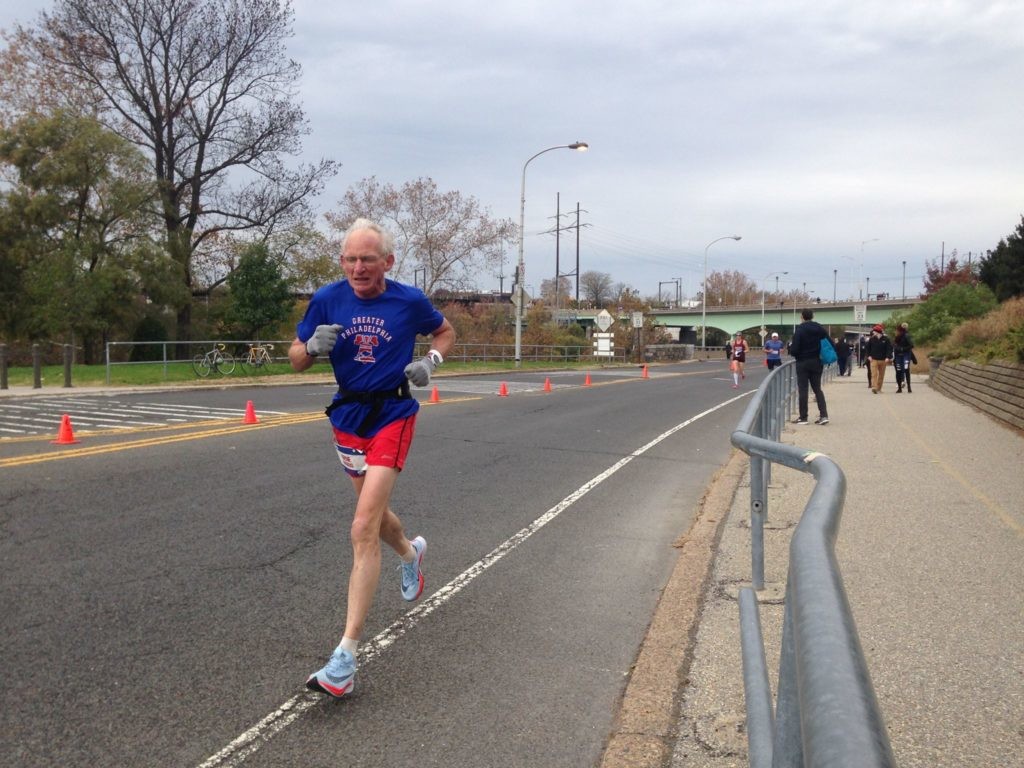
He has been married since 1982 and they both moved to Philadelphia from Ithaca, New York in 1993. After his Toronto Marathon we asked Gene about his race strategy.
"I’m a slave to my GPS watch while running a race," says Gene. "I nearly always run negative splits on any race shorter than a marathon, and I’m rarely more than a minute or two slower in the second half a marathon.
I consume far fewer calories before and during a race than most runners seem to." How about your weight? He thinks the "Two seconds per pound per mile is a rule that is awfully important. Keeping weight down for a major race is the hardest part of training.
It’s especially hard when I use the “See Food” diet. I’ll eat just about anything, especially when I see it."
In 2017 he was only one of 13 to complete the Triple Crown of 200's and he was the oldest finisher in each of them.
In August he ran the 206.5 mile Bigfoot 200, September was the 205.5 mile Tahoe 200 and October was the 238 mile Moab 240. In 2018 he won ten USATF National Championships from 1500m on the track to 100 mile on the trail. So what is ahead for Gene?
"Having turned 70 this year, I decided that I would spend the year chasing records and national championships and forego many of the big ultra races that I really love.
I still have one national age group record to topple which I expect to happen at the Philadelphia Half Marathon in November. Having come up just 34 seconds short of beating Ed Whitlock’s venerable M70 age group record in the marathon, you can be sure that I’m making plans on another attempt within a year.
I’m keeping those plans secret, though," Gene told My Best Runs. In the meantime Gene has signed on to the Run The World Challenge 3 team.
Gene is at the top of the 70 plus world and don't you get the feeling he is going to be setting a lot more records? (Photo taken at the USATF National Outdoor Championships in Spokane)
by Bob Anderson
Login to leave a comment
Count down to the third Run The World Global Run Challenge
The little country of Palau had a lot to celebrate after finishing 5th in the Run The World Global Run Challenge 2 that concluded October 12.
Palau's team leader Aaron Salvador posted in the RTW Feed, "This is now the fruit of our labors, those sweats, early morning runs, long runs and running under the rain/heat of the sun are all worth it."
He himself ran and logged 378 miles during the 44 day event. Miles ran and logged in Palau totalled 1,187. Team members only ran more miles in the countries of United States, Kenya, India and South Africa.
Palau is located in the western Pacific Ocean. There are mountain and sandy beaches on its east coast and grassy fields surrounded by palm trees in the north. Current population is just under 22,000. Aaron and team will be competing again in the up-coming RTW Challenge 3 starting October 29.
"Our team from around the world is being put together now," says Bob Anderson Team Caption. "We have runners of all abilities on our team. Current and past elite runners make up our team as well as runners who have just started running. All ages run and walk with us from age 11 to age 74."
34-year-old team member Carmen Gair from South Africa wrote, "RTW Challenge 2 motivated me to log more mileage than I have ever done before in a similar time frame. I can’t wait to see what Challenge 3 brings. Absolutely love being part of this wonderful running community."
62-year-old Kiranpal Singh Dhody from India will be participating for the third times says, "I love running for fitness...I try to push myself to get good timings in competitions and get podium finishes. The RTW Challenge helps me push myself."
RTW Challenge 3 starts October 29. It is easy to participate. Just run, race or walk and then log these miles (k's) into your My Best Runs account.
South Africa team leader Lize Dumon posted, "I haven't realized how precious this RTW community has become to me. It is like an extended running family...It has become a place where I learn so much about running from reading everybody's posts and a place of immense encouragement... bring on Challenge 3."
This event was created by 70-year-old Bob Anderson who founded Runner's World when he was 17 and published it for 18 years. "I hope you will join our team," says Bob. "Sign up by October 29 or join us along the way."
by Bob Anderson
Login to leave a comment
The RTW team logged 24,901 miles and 52.4 of these miles were run inside an NFL stadium
Did you Know? Run The World Challenge 2 team members Becca Pizzi and Michael Wardian both ran the marathon (first woman and first man) that was run inside the Gillette Stadium in Boston September 29.
This 114 lap race was the first-ever marathon held entirely inside and on the field of an NFL football stadium.
Dave McGillivray (also a RTWC 2 team member) was the race director. "Dave's marathons are my absolute favorite and his DMSE support team is second to none," says Becca.
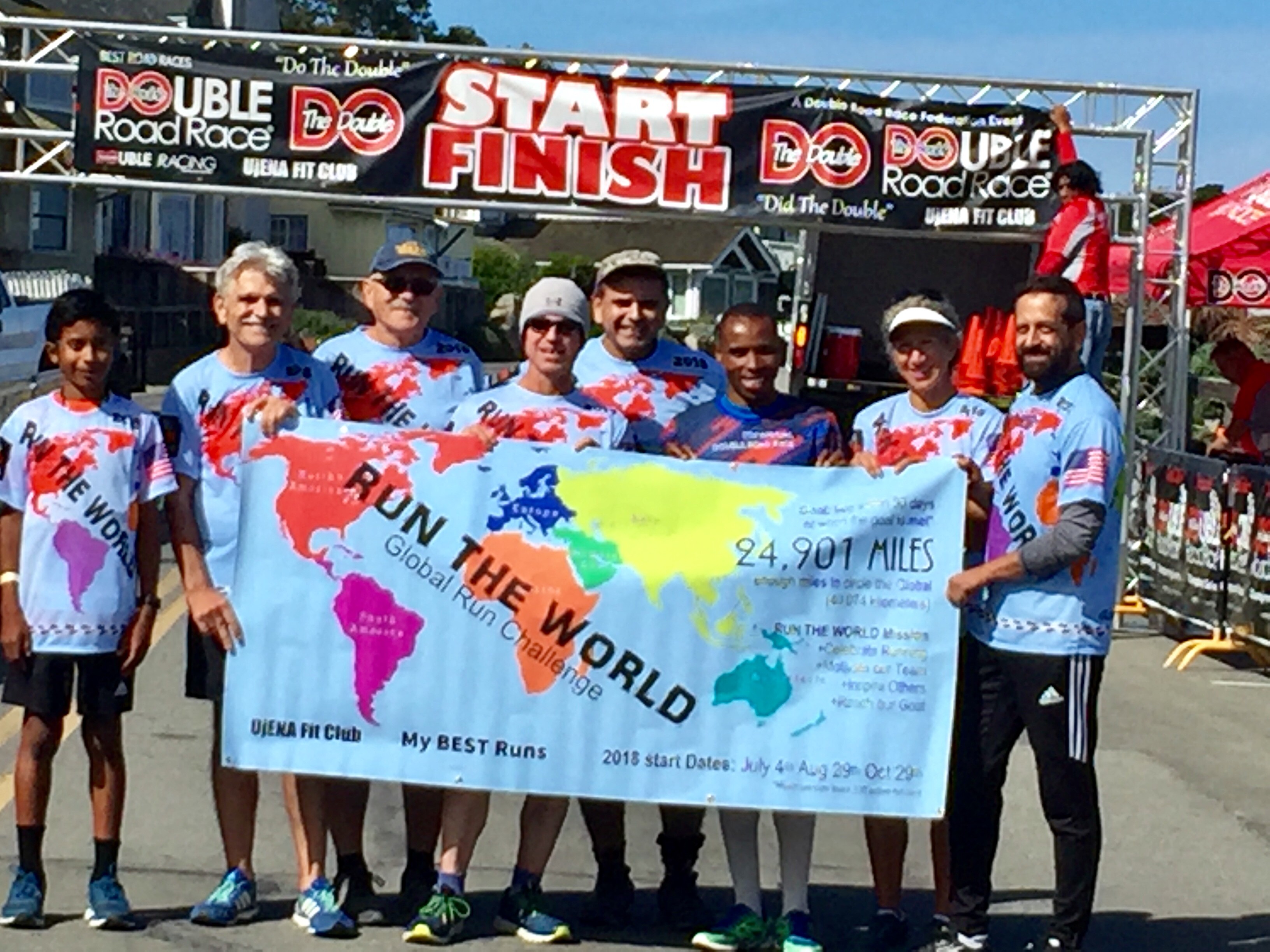
A ton of funds were raised for the New England Patriots Foundation helping the homeless...Both Becca and Michael have signed up for the RTW Challenge 3 team.
Run The World is an event created by lifetime runner 70-year-old Bob Anderson. He ran 260 miles for challenge 2 and even through he did not complete anything close to what Becca and Michael did, he still doubled his normal weekly mileage. Many team members were also motivated to run more hitting milestones of 50, 100, 200 or more miles before we finished.
"The finish line of the RTW Challenge is when our team have logged 24,901 miles," says Bob Anderson. It took 44 days 18 hours and 29 minutes to complete the task this time.
Runners age 11-74 ran miles in 24 different countries. In the little country of Palau 1,187 miles were logged. 74-year-old Frank Bozanich ran and logged 801 miles in the 44 days. There are so many amazing stories.
What has become really popular and a good motivator is the Run The World Feed. Many team members post notes and photos daily for other members to leave comments.
"I read every post and look at every photo and comment on each one," says Bob. "I started this with Challenge 1 and found this was a good motivator."
Lize Dumon in South Africa wrote, "The RTW community is very precious to me. It is like an extended running family, a safe place to share everything running."
RTW Challenge 3 starts October 29. The Challenge will help get you in better shape so you can reach your goals. This can be a tough time of the year to get out the door. We will help each other. Sign up today and join our team.
Login to leave a comment
The Run The World Challenge 2 team has finished and here are the awards
"We have finished," says Lize Dumon (photo) a RTW Challenge 2 team member from South Africa, "Great achievement! But this morning, going out for my run just felt that little bit harder. I haven't realized how precious this RTW community has become to me. It is like an extended running family, a safe place to share everything running without rolling eyes and sighs from non-runners. It has become a place where I learn so much about running from reading everybody's posts and a place of immense encouragement! I don't want to leave this place... bring it on Challenge 3!"
Run The World Global Run Challenge is a global event celebrating running, motivating the team, inspiring others and completing the goal. The 131 member RTW Challenge 2 team ran and logged miles in 24 countries reaching a total of 24,901 miles in 44 days 18 hours 29 minutes.
"This event is a real motivator. Many of our members (including me) ran many more miles than usual," says Run The World Challenge Team Caption, Bob Anderson. 34-year-old team member Carmen Gair from South Africa posted, "Thank you...for this amazing challenge...thank you...for motivating me to run more than double my usual mileage in this amount of time."
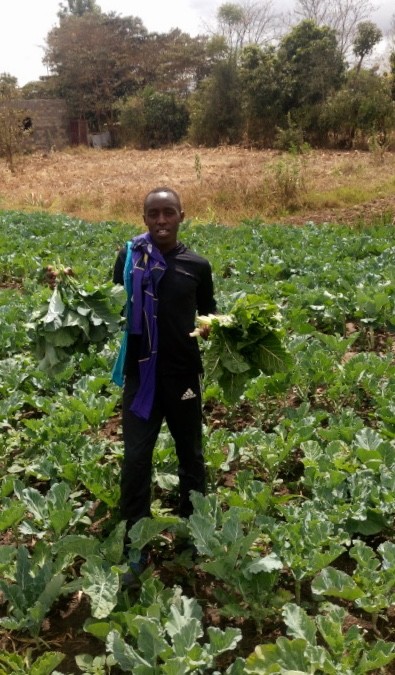
She ran and logged 151 miles in 44 days. Team members added this challenge to their existing goals and used the Challenge to further motivate them.
"Here are the special awards for our RTW Challenge 2 team," says Bob Anderson who reached 260.66 miles himself.
For Outstanding achievement: Frank Bozanich age 74 logged 801 miles...
Most Inspiring: Lize Dumon set her goal to reach 200 miles and she did that. She also motivated other team members in South Africa that she recruited to reach their goal as well...
Most Motivating: Aaron L. Salvador from the little country of Palau logged 377.99 miles, recruited others and posted a note and photo everyday...For
Best Performance: Willie Korir (second photo) from Kenya logged the most miles (993.88) which is an average of 22.5 miles per day. This is being shared with Joel Maina Mwangi also from Kenya who not only logged in 610.44 miles but he raced four half marathons during the Challenge period clocking 1:02:52, 1:03:19, 1:02:50 and 1:02:54...
Five Most Inspiring stories: based on their story posted on My Best Runs: (this award goes to the five who received the most views on My Best Runs) Joyce Lee (1178 views), Michael Wardian (851 views), Gloria Nasr (616 views), Joel Maina Mqangi (492 views), Pete Magill (400 views)...
Best Youngest performance: Zander Brister age 11 logged 16.32 miles. He ran one mile in Hollister clocking 6:19 and he also averaged 7:42/mile pace at the Pacific Grove Double Road Race 15k...
Best Oldest performance: Frank Bozanich age 74 logged 801 miles. Shared with 71-year-old Paul Shimon who logged 655.37 miles...
Top Fifteen Spirit awards: (Based on posts on the RTW Feed) Aaron L Salvador, Michael Anderson, Brent Weigner, Danilo Purlia, Larry Allen, Asya Cabral, Lize Dumon, Roger Wright, Geoffrey Smith, Carmen Gair, Annie Conneau, Joseph Brazil, Vince Martignetti, Marnie Margolis, Willie Korir...
Best Single Run: Michael Wardian when he ran 184.5 miles in 36 hours 48 minutes 14 seconds on the C&O Canal Trail...
Notable Mentions: Boaz Kipyego logged 788.61 miles and came to the United States and placed fourth at the Twin City Marathon. Rosaline Nyawira was first female logging 454.37 miles. Brent Weigner (69) has been running races every weekend including running a marathon in another country Sri Lanka. He logged 258 miles. James Kalani has gotten back into running (this challenge motivating him) and has already run 4 miles at 5:33 pace. He logged 252 miles.
Ultra marathon star Gloria Nasr from France logged 237 miles. Rosaura Tennant ran both the Berlin and Chicago marathon during this Challenge. Becca Pizzi was first woman in the marathon run inside a NFL stadium in Boston...
"Everyone is a winner on our team," says Bob Anderson. "I can't wait to do this again." RTW Challenge 3 start Oct 29.
Login to leave a comment
Run The World Challenge 2 Profile: Boaz Kipyego is training so hard to make his life better and to help kids
Login to leave a comment
Michael Wardian wins the first ever full marathon held inside a NFL stadium
On Friday evening, 17 runners participated in the first full and half marathon around the home turf of the New England Patriots.
It was also the first marathon run entirely inside a NFL stadium. Participants in the half marathon ran just over 59 laps on the warning track surrounding the turf, while the full marathon participants ran 118 laps.
The course is USA Track & Field (USATF) certified and a Boston Marathon qualifier. Runners enjoyed special appearances by Patriots cheerleaders and the end zone militia, in-stadium music, motivational videos on the HD video boards and other entertainment throughout the evening.
“We are thrilled to be hosting our first marathon inside Gillette Stadium,” said Josh Kraft, president of the New England Patriots Foundation.
“This is a really unique opportunity and this event will help us raise critical funds for the New England Patriots Foundation to benefit homeless shelter programs throughout the region.”
The race was directed by Dave McGillivray who also is the Boston Marathon race director. 44-year-old Michael Wardian placed first clocking 2:49:26. Michael had also won the marathon held inside Fenway Park a few months ago.
Becca Pizzi was the first woman clocking 3:49. Both are also participating in the second Run The World Global Run Challenge and these miles bring Michael’s total to 384 miles run and logged since August 29. He is currently in 7th place. The team is running and logging enough miles to circle the globe (24,901 miles).
Login to leave a comment
Run The World Challenge 2 Profile: Romance got Carmen Gair hooked on running
by Bob Anderson
Login to leave a comment
Run The World Challenge Profile: Joel Maina Mwangi wants to be the best of the best
Joel maina Mwangi was born in a small village of Thika town, about one hour outside of Nairobi, Kenya. Joel says, "I was raised up in a difficult situation. Eating was 50-50 but by the grace of God i was sponsored for secondary education."
Today the 33-year-old Joel is married and has two boys. "I always work hard to raise my boys in a good and better environment than i got," he says. "My school was 6km from home and I used to run to school for eight years (6-14) to avoid being late...otherwise I would be punished."
In 1998 he took part in a 10000m and won it. "My sport teacher noticed I could run," Joel remembers. "He encourage me to start training and from there I started training every morning before school." He did not stop there.
"I was the king of athletics." Joel is now a professional runner. "Racing sustain me and my family. It has enabled me to build a house and travel." Running has given him the opportunity to travel to different countries.
"My first trip abroad was to Belgium. i stayed there for one and half month. I had a difficult time because i was not in good condition. I came back home with 10€ ($15). That day I will never forget. I lost money but I learned a lesson."
Asked what is his secret to success Joel says, "I believe even if you are in good shape but mentally weak, I will defeat you. So I always tell my running mates to be strong mentally to conquer." He has been training in Austria, Hungary and now Italy. He says this about Italy.
"Despite its low altitude I like it. The advantage for me is because I complete in many races and train with Italian runners here." He runs for the Dinamo Running Club. Asked why he joined the Run The World Challenge for a second time. "I like it...it motivates me. It brings runners from different corners of the world together. It helped me a lot this season as I worked more to try to be the leader. But Korir managed to be the leader for Challenge 1. Due to that...I will sponsor Willie Korir for his start number and transport from wherever he will be within Kenya for the 2018 Nairobi marathon," he says.
Joel's personal records are: Marathon 2:14, 30kms 1:31, Half Marathon 1:01:16, 10km-28:26 (track), 5km 13:46, 3km 8:07 1-mile 4:06, 1km 2:28. "I am looking forward to be the best of the best. Don't tell me I am getting old..."old is Gold."
In the first Run The World Challenge Joel logged 511.36 miles placing him third. So far on Challenge 2 he has logged 224.9 miles and he is in fourth place. Most recently (September 9) he placed third at the Minski Half Marathon clocking 1:02:55. Photo: Joel (white jersey) running along side Charles Cheruiiyot Toroitich at the 2014 (Half) Marathon Solidarności in Poland. Joel clocked 1:01:16
Login to leave a comment
Run The World Challenge 2 Profile: Linda Sereno says she finds her inner peace when running out in the mountains
by Bob Anderson
Login to leave a comment
Run The World Challenge 2 Profile: Marnie Margolis says that running gives her a great outlet where she can have control, make goals and accomplish something
by Bob Anderson
Login to leave a comment
Run The World Challenge 2 Profile: Kenya's Rosaline Nyawira says she avoids anything that can lead her to fail
by Bob Anderson
Login to leave a comment
Run The World Challenge 2 Profile: Gloria Nasr has run the toughest race on earth already five times
by Bob Anderson
Login to leave a comment
Michael Wardian ran 184.5 miles at 11:55 per mile pace breaking the record set in 1976
Michael Wardian woke up one day and decided to go after a record set in 1976. He left Cumberland, Maryland at 5am Saturday morning September 1st.
A little more than an hour ago he finished running the entire C&O Canal Trail (184.5 miles) that goes through Maryland and ends at Rock Creek Parkway in Washington DC.
The trail surfaces are crushed stone, dirt and gravel. The record he wanted to beat was set by Park Barner in 1976 when Park clocked 36 hours, 48 minutes, 14 seconds. Michael clocked 36 Hours 36 Minutes 3 seconds today which is an average of 11:55 per mile.
He had to also deal with temperatures that reached over 90 degrees. This one run also takes him to the top of the Run The World Challenge 2 leader board which he is also participating in that started August 29. Enough miles to circle the globe are being logged by 175 Runners from around the world.
Login to leave a comment
Michael Wardian is going after the record of running 184.5 miles this weekend in less than 35 Hours.
Login to leave a comment
Run The World Challenge 2 Profile: Sheldon Gersh says that running has the same priority as eating and sleeping for him
73-year-old Sheldon Gersh partiicipated in the first Run The World Challenge and has taken on the second one too. The Senior Vice President at Morgan Stanley has worked there for 47 years, he loves to travel with his wife and one thing he always finds time to do is run.
So how did it all begin? He played soccer for Oregon and running was a necessity to survive the miles covered in practices and games. "In the off season I would run to stay fit," says Sheldon. "Once college was completed, I knew that I was going into the army and I needed to be very fit."
He handled army training well and says "it was a piece of cake." The summer before he entered the army, he ran with a high school cross country team which was ranked number one that year.
"I ran the years I was in the Army, including my adventure in Vietnam." Once he left the army he continued to run. "It made me feel so good. I thought about playing adult soccer but it was such a hastle to get together a team."
At the same time he had a friend that made him a bet that he had to finish in the top half and under an hour in his first Bay to Breakers road race in San Francisco. "I ran almost everyday plus played soccer with a team I coached," he remembers.
"I won the bet." For Sheldon running has the same priority as eating and sleeping. "Most people don’t look at it that way but I do. Running is extremely important to me, not much can prevent me from doing it, definitely not the weather," he says.
Two highlights? Running the Boston marathon back in the 70's and placing in the top 100 at the Bay to Breakers (12k) clocking 43 minutes. He also says, "I had a goal when I turned 60 to run a mile under six minutes.
A friend, Rich stiller trained me." Sheldon ran 5:47. He wants to continue running forever but says he "doesn't want to overdo it. I just think running makes you feel better. I look at so many people who look and act much older than me. I feel like they are my parents," he says.
He keeps fit by doing more than one activity a day. He also swims, does boxing and spins. "My long term goal is to continue running forever," says Sheldon Gersh.
by Bob Anderson
Login to leave a comment
I needed some motivation and the Run The World Challenge 2 is just the ticket
by Bob Anderson
Login to leave a comment


